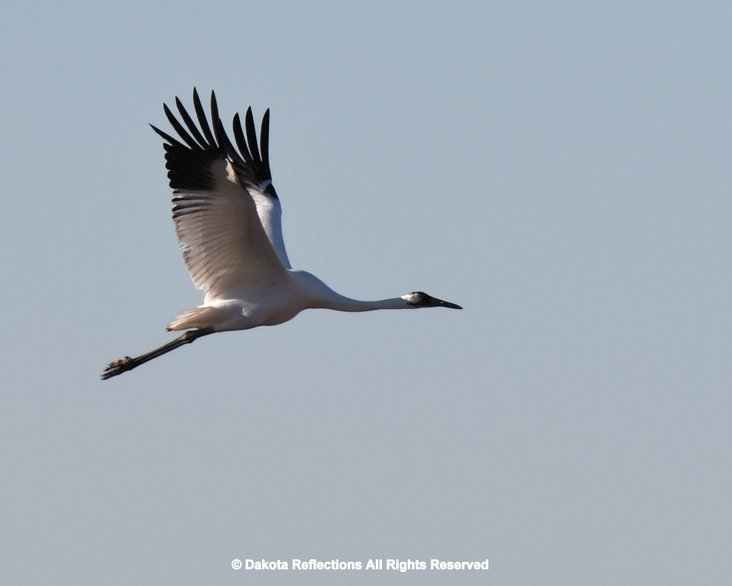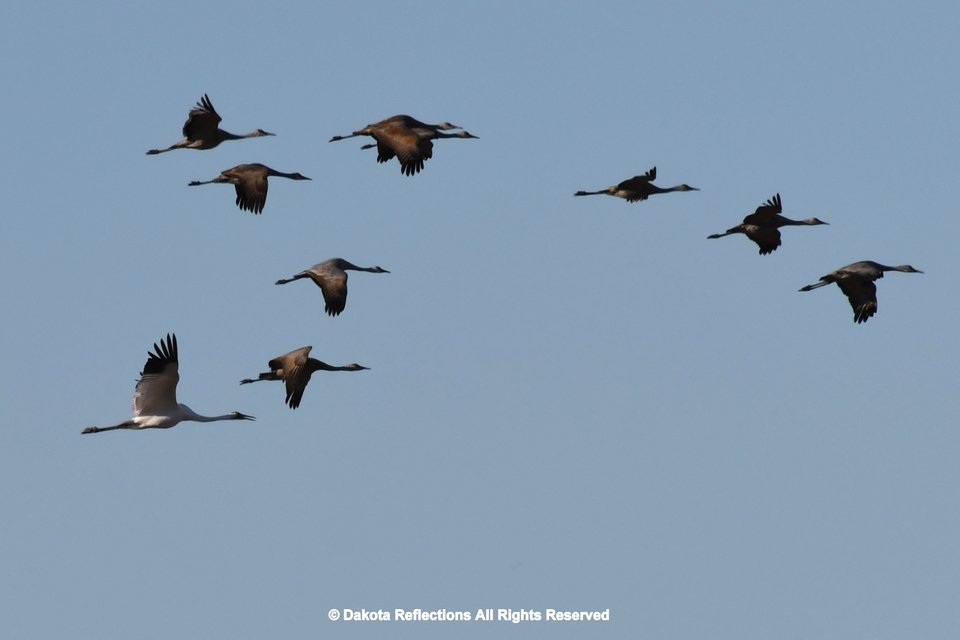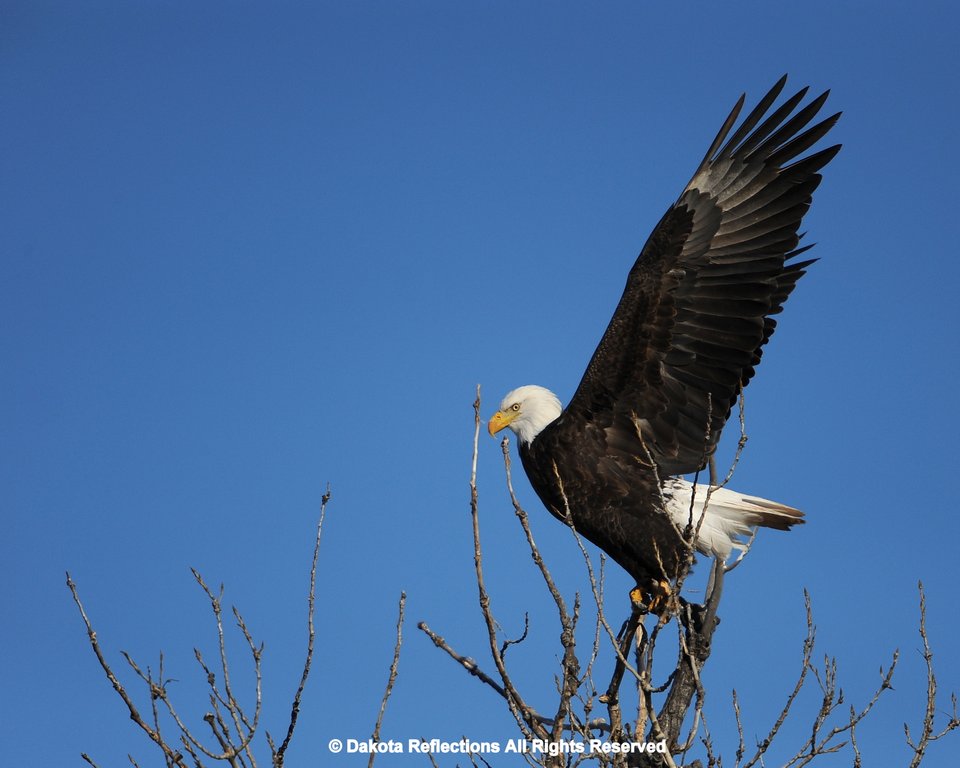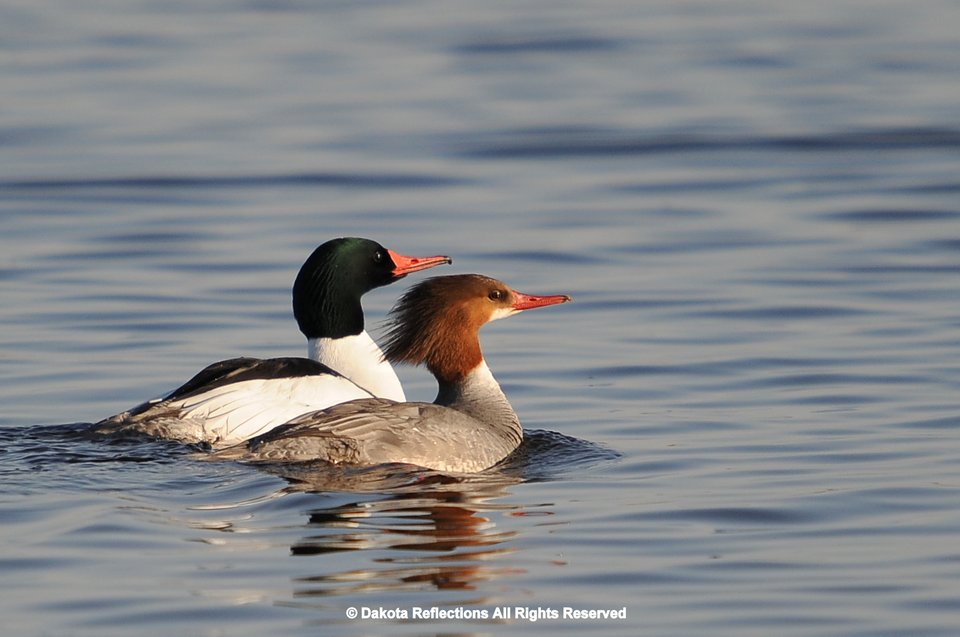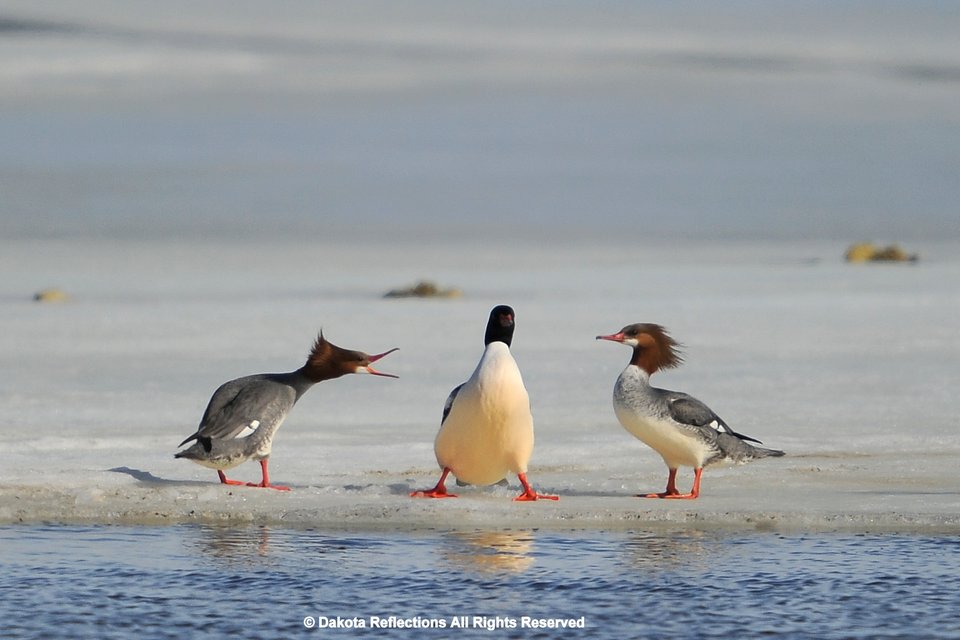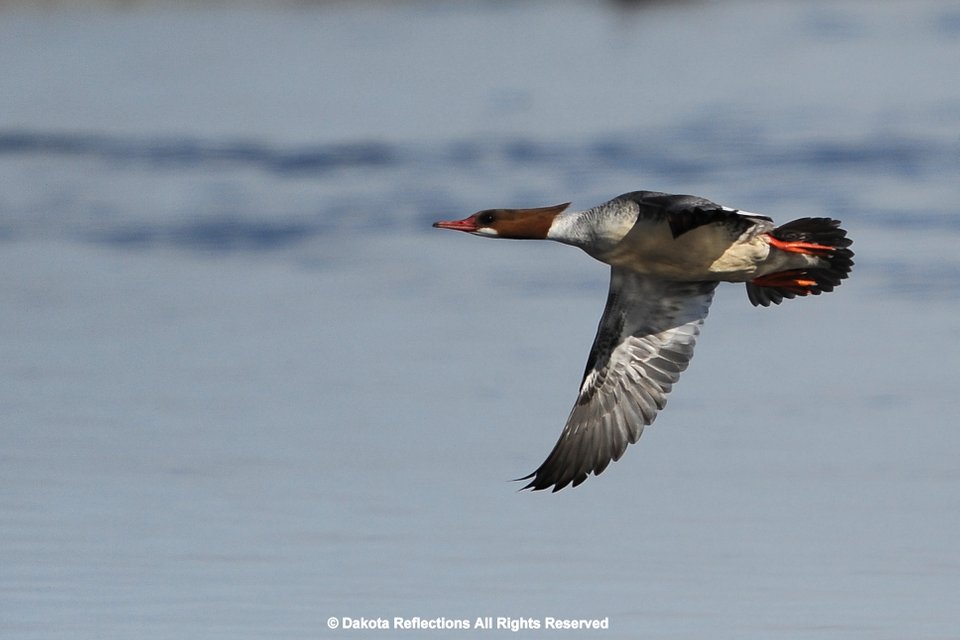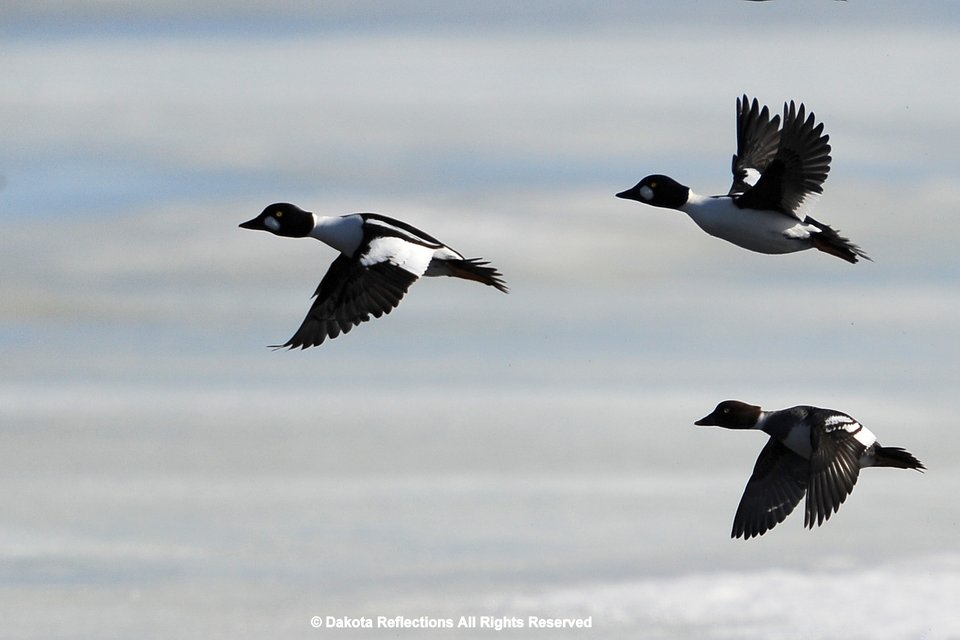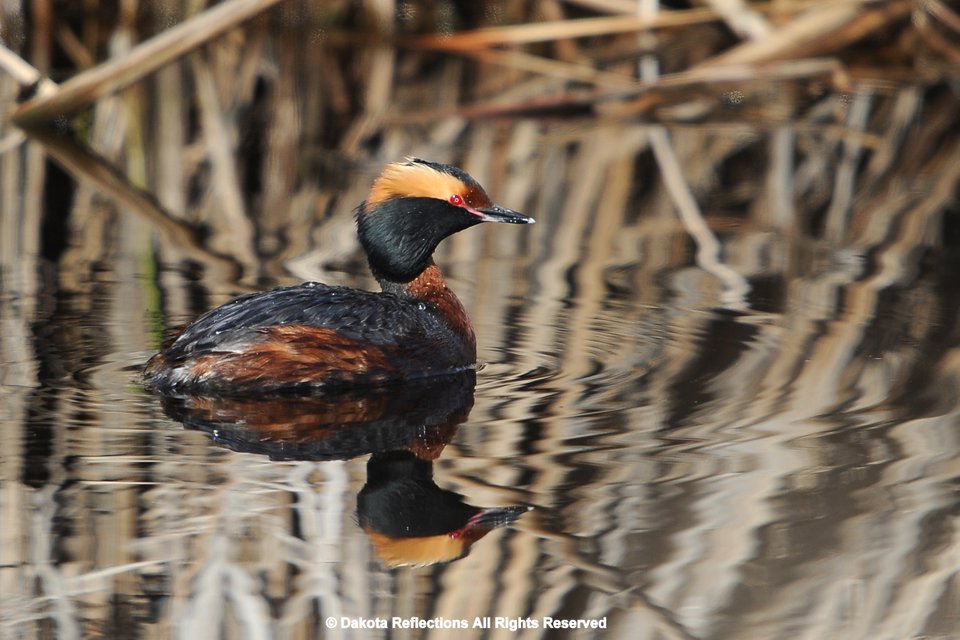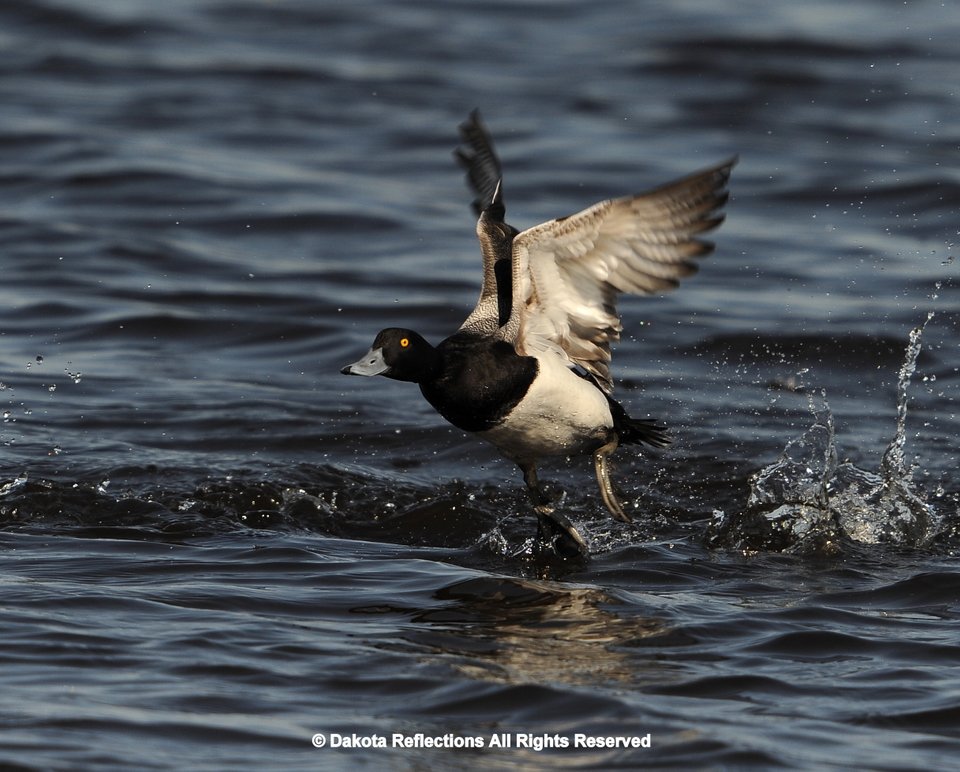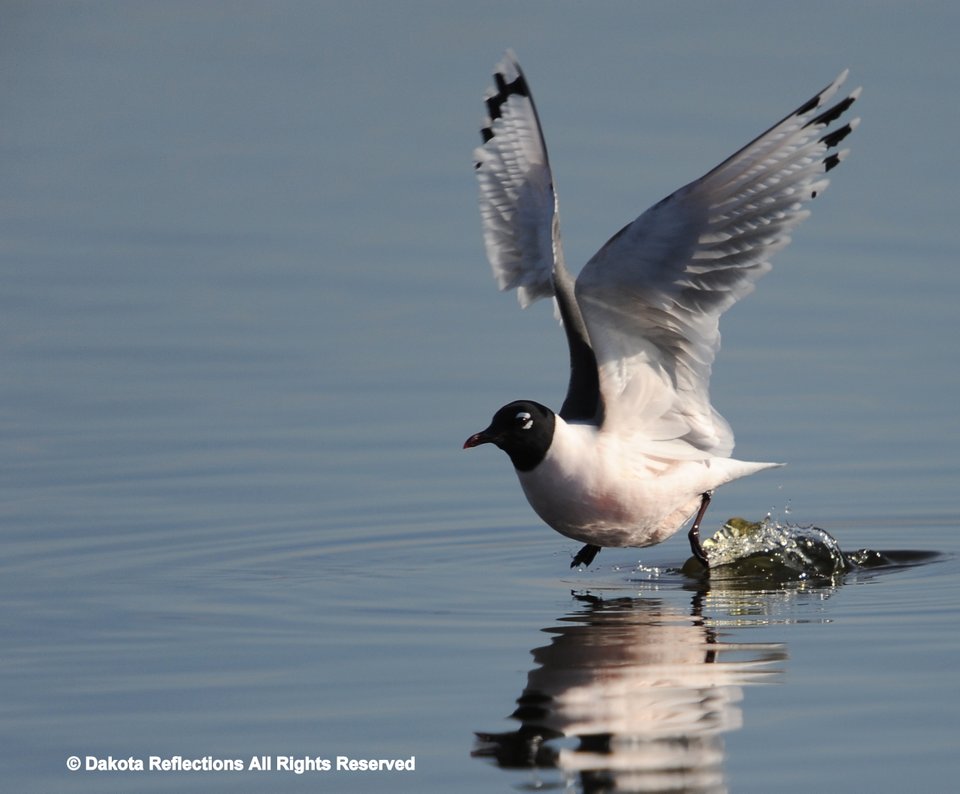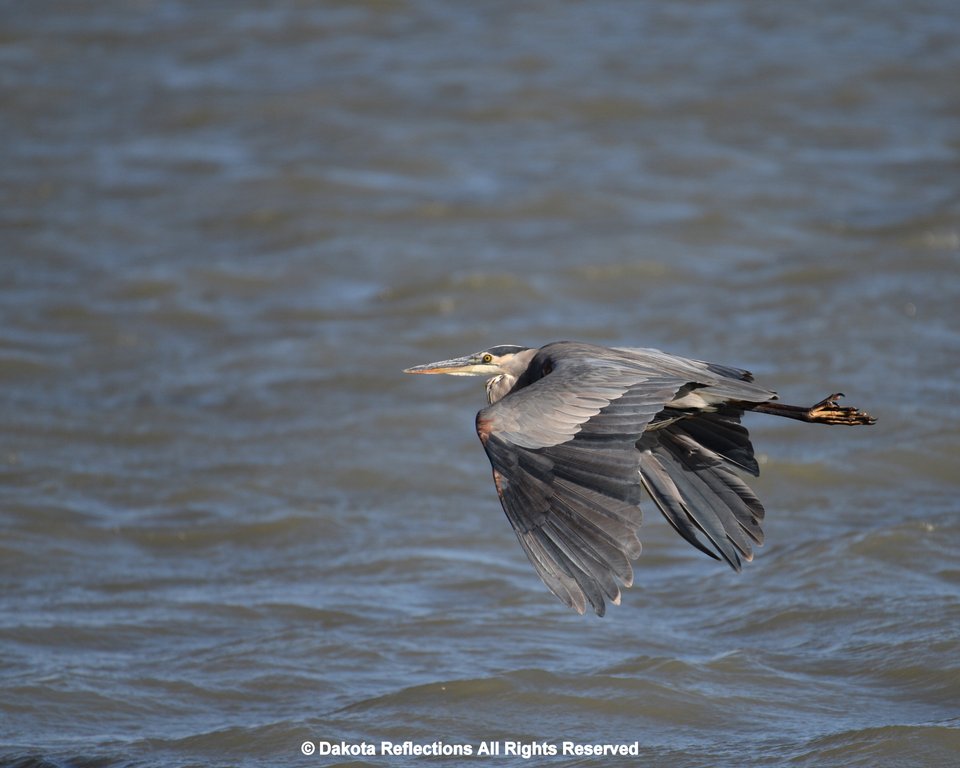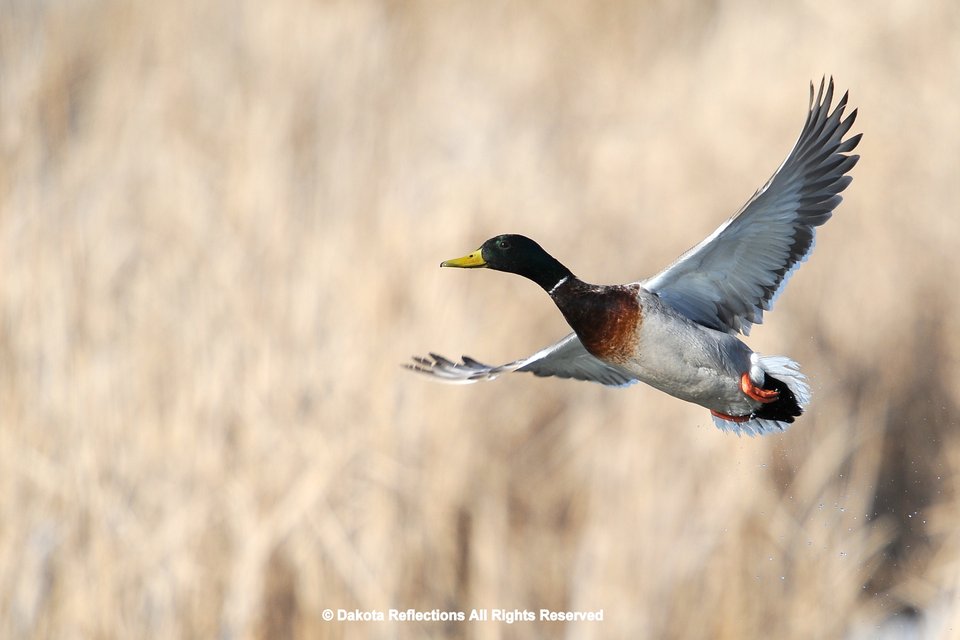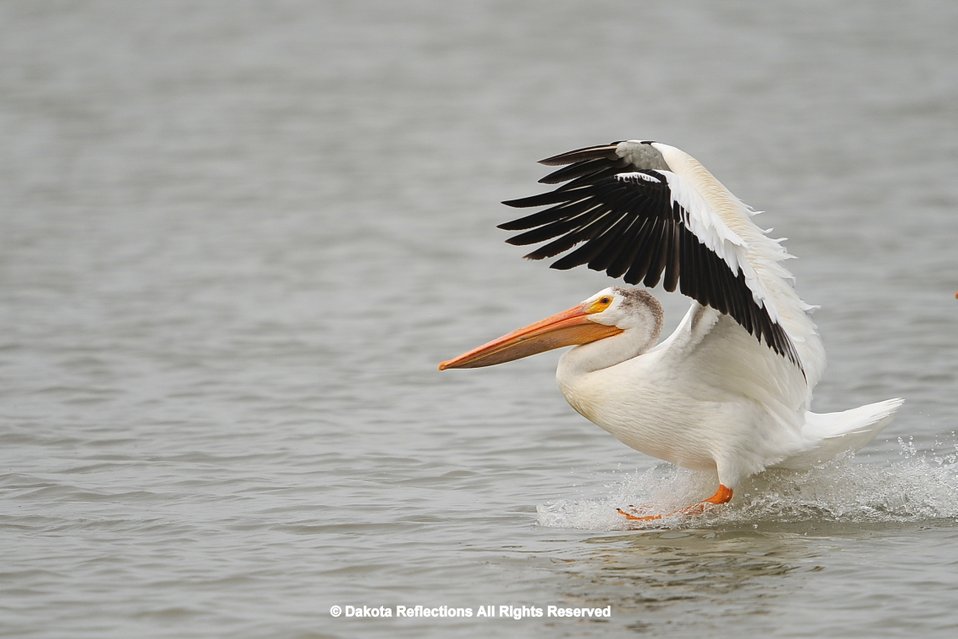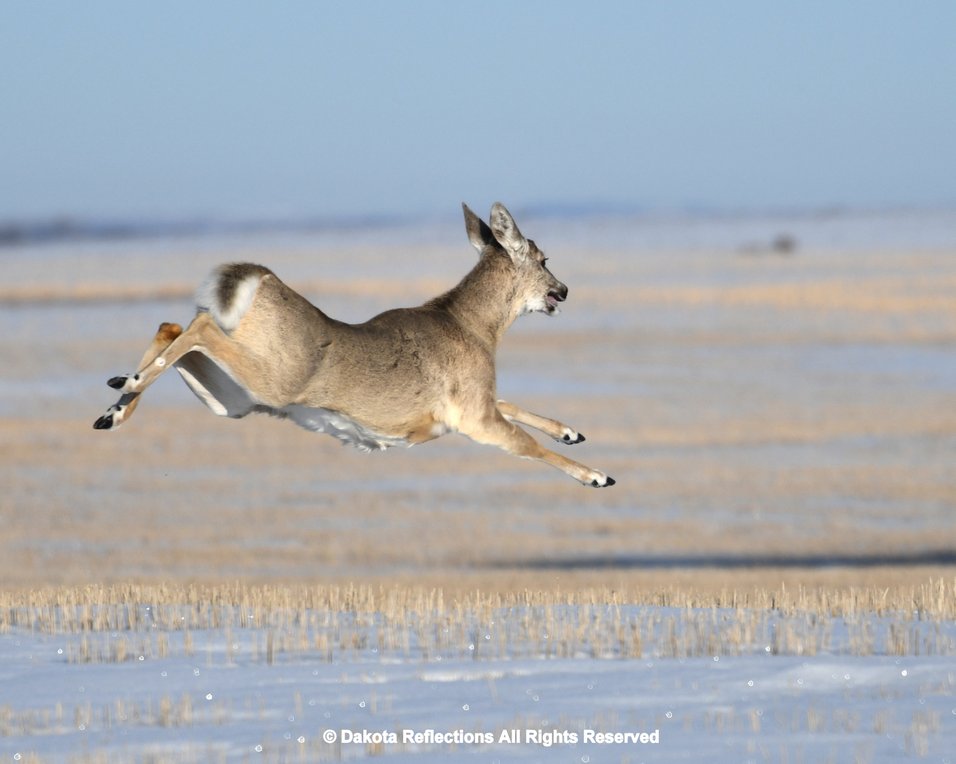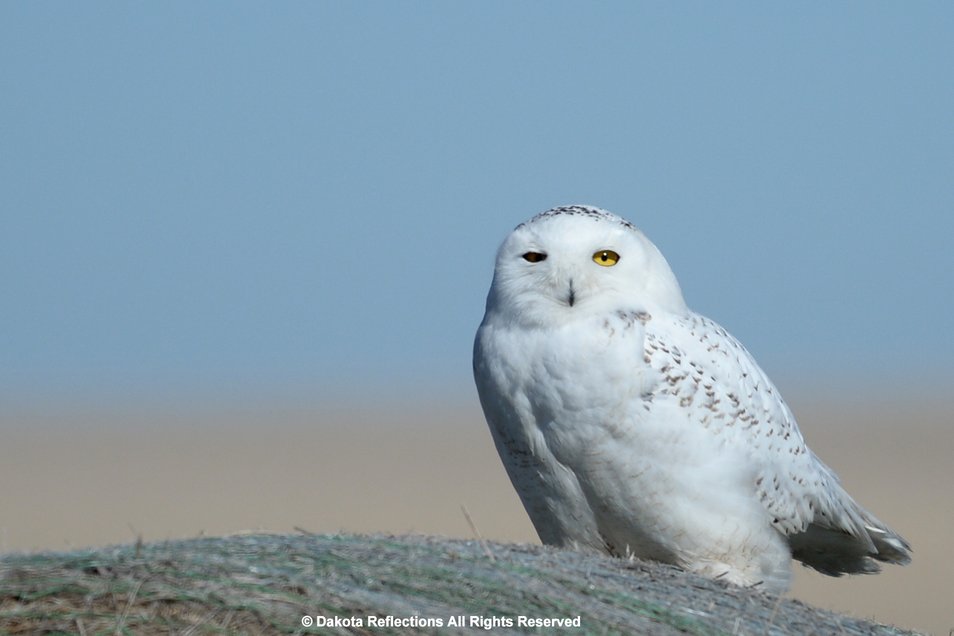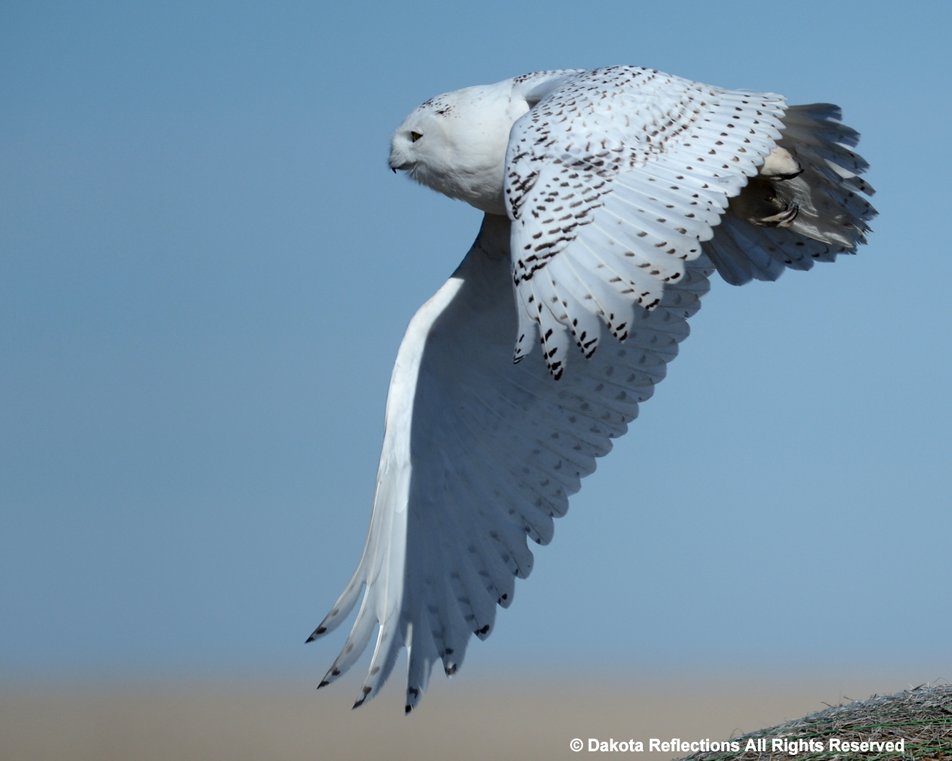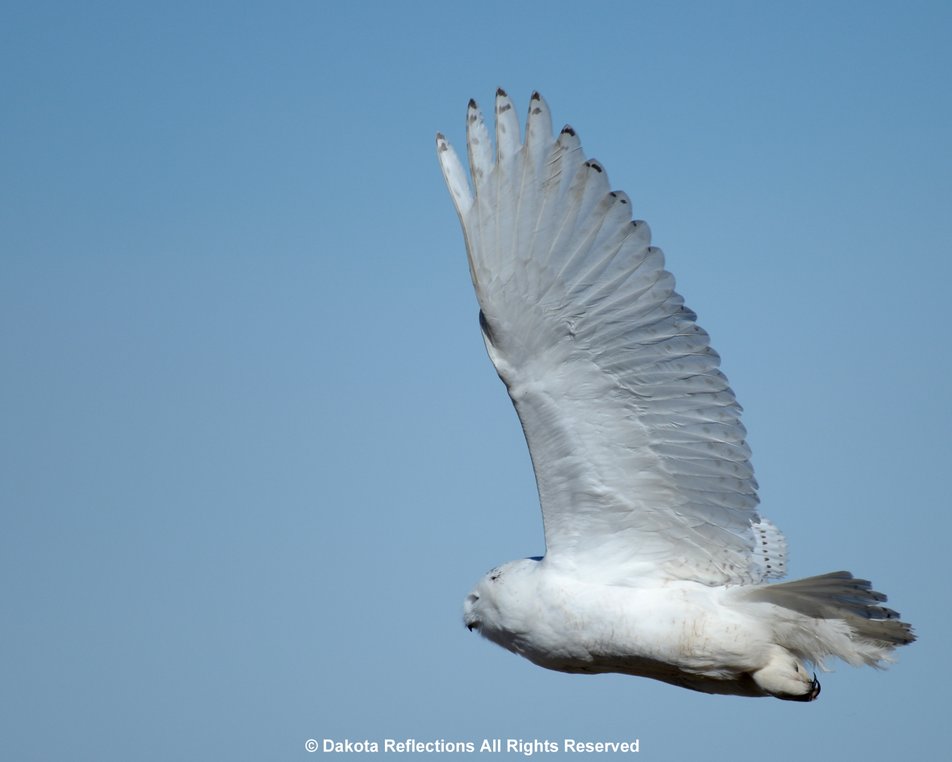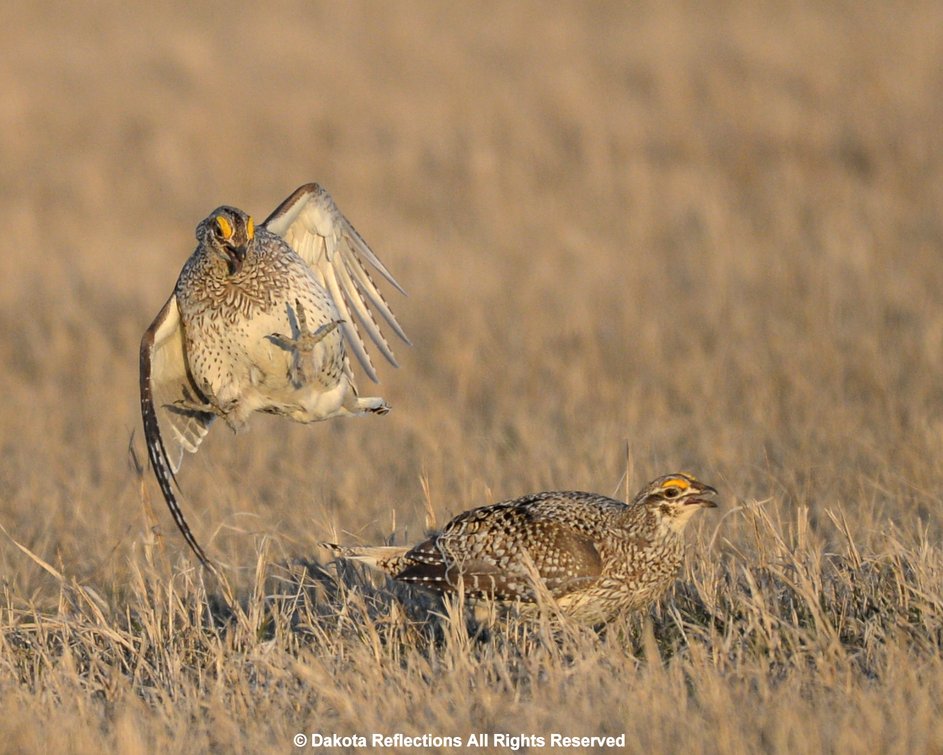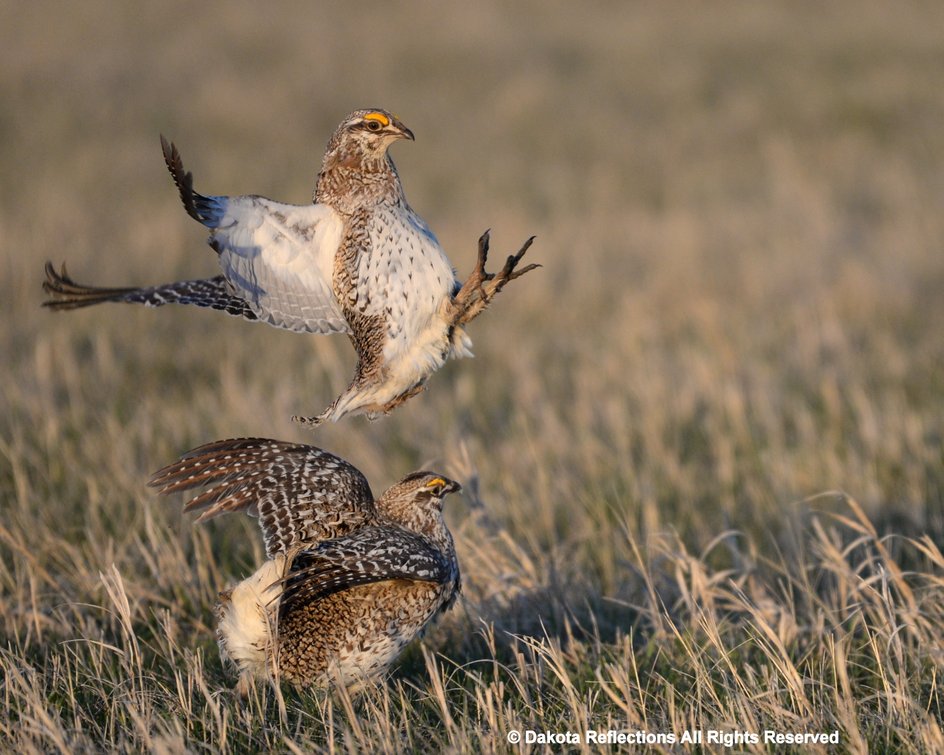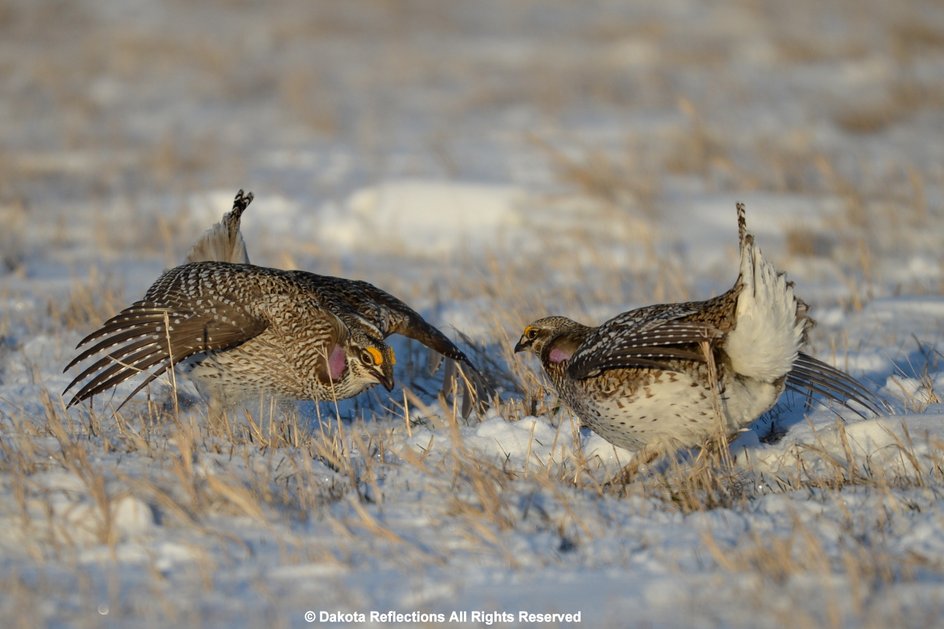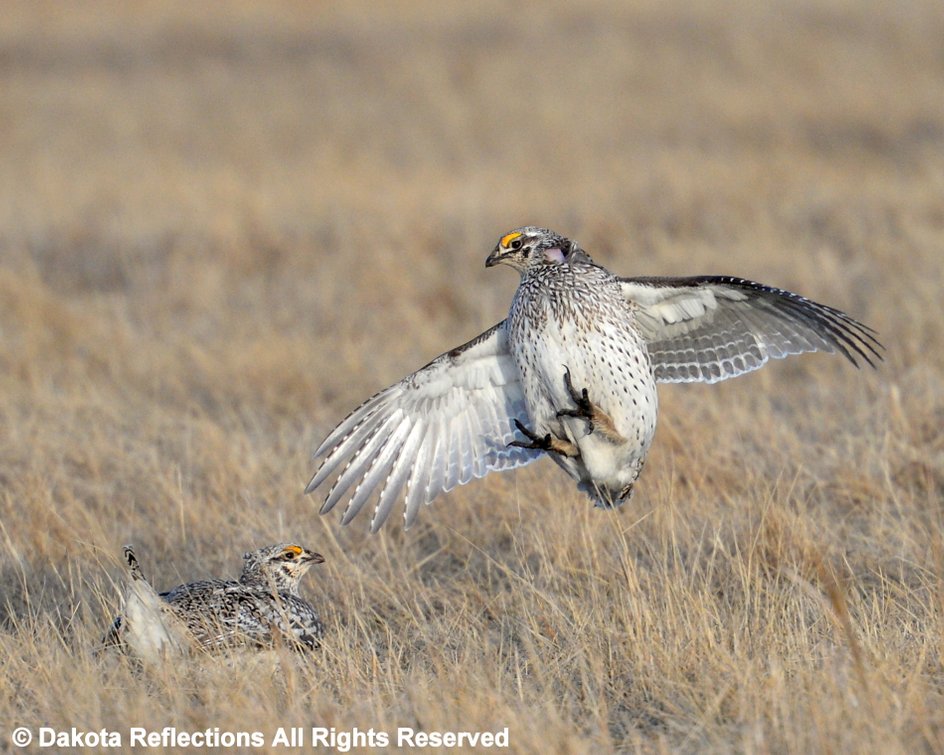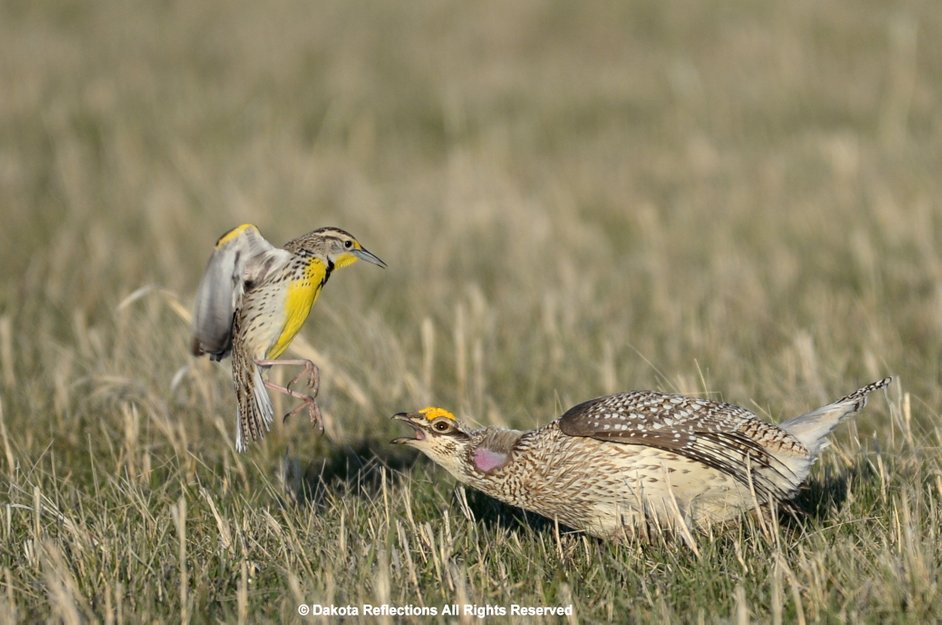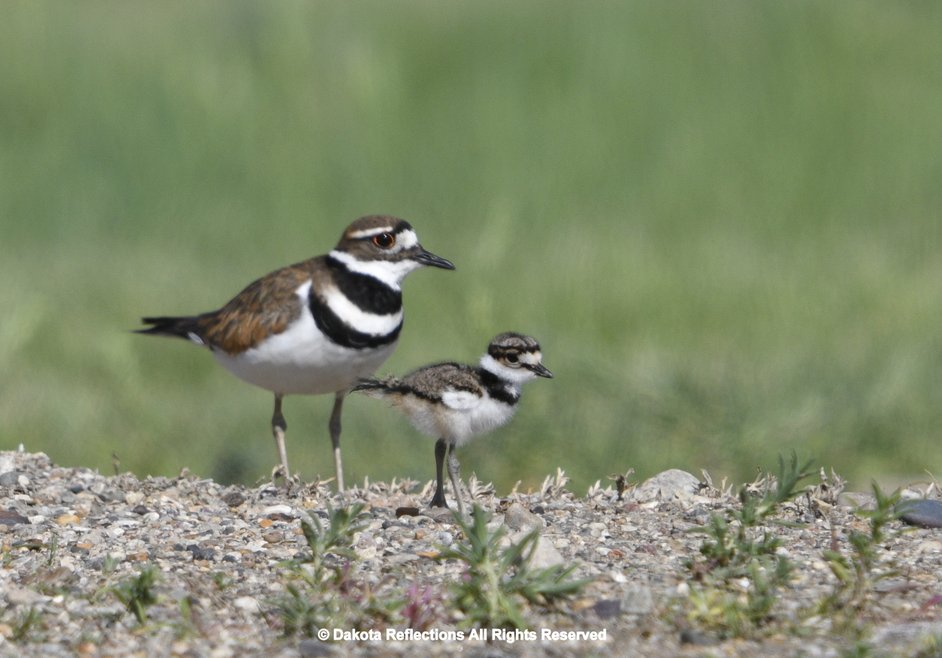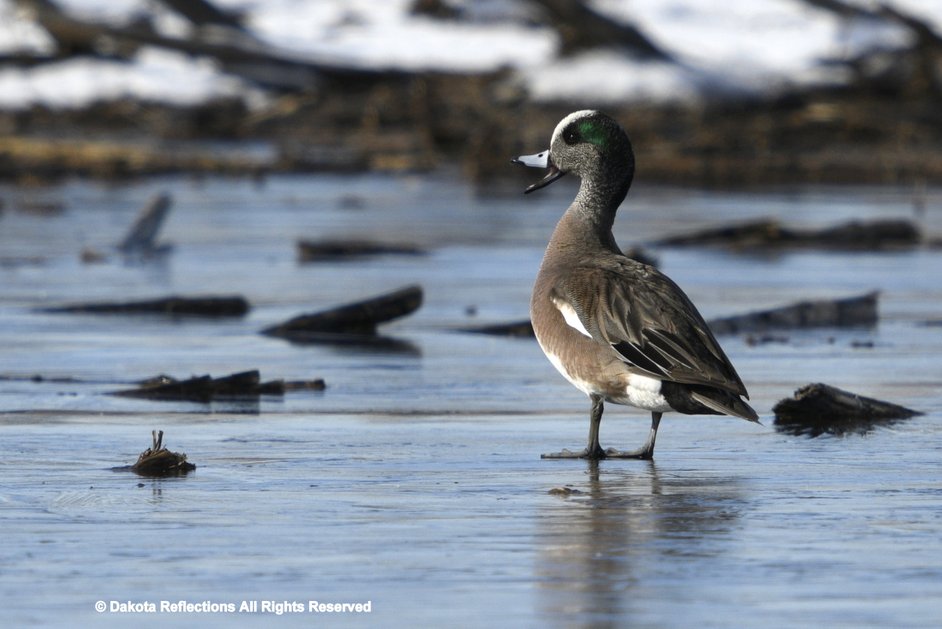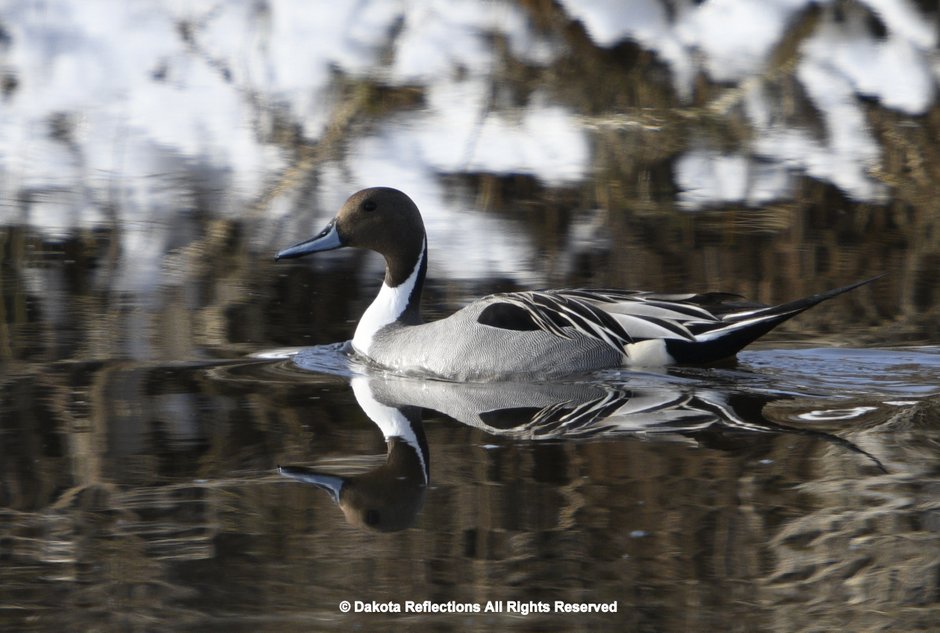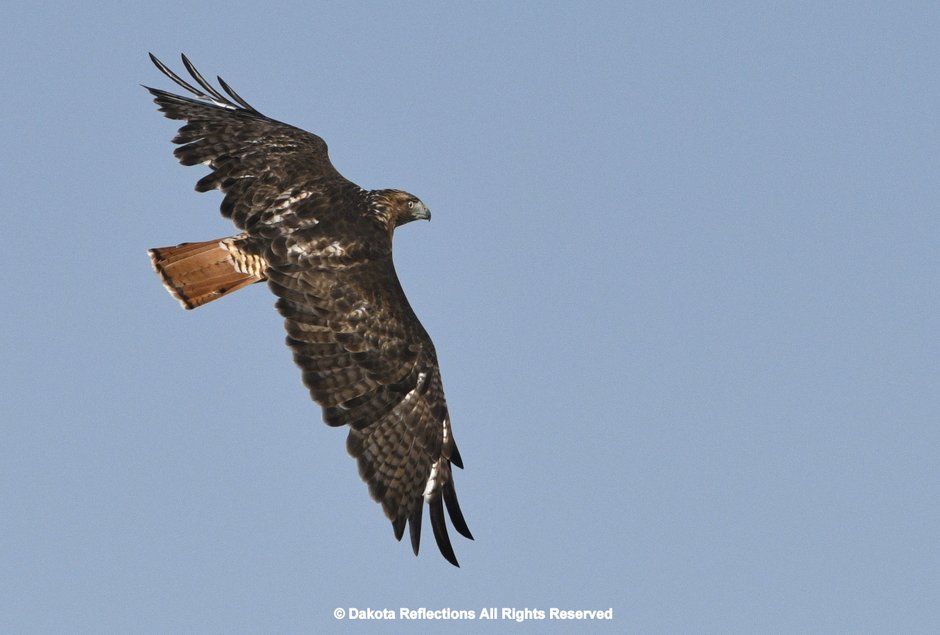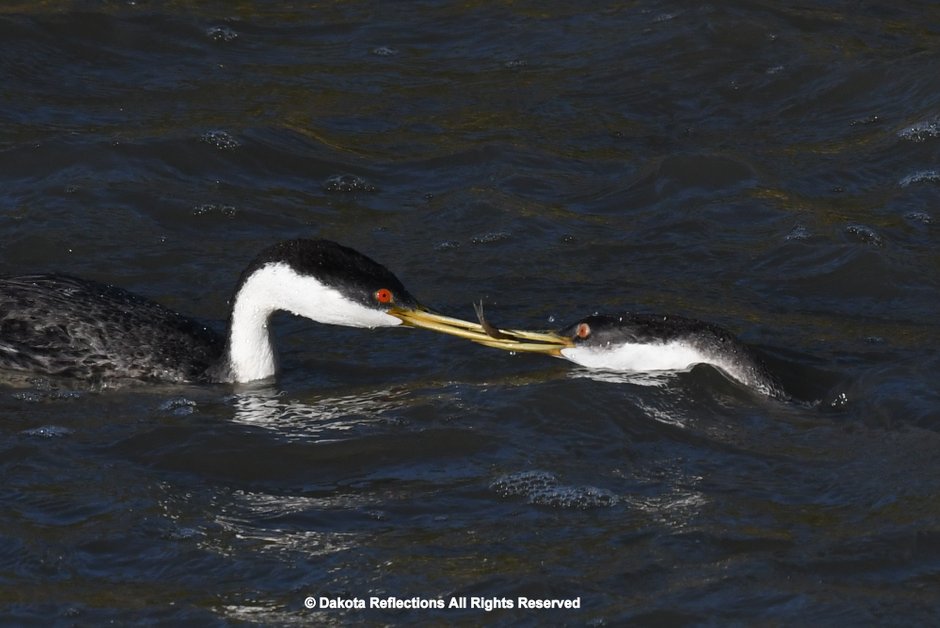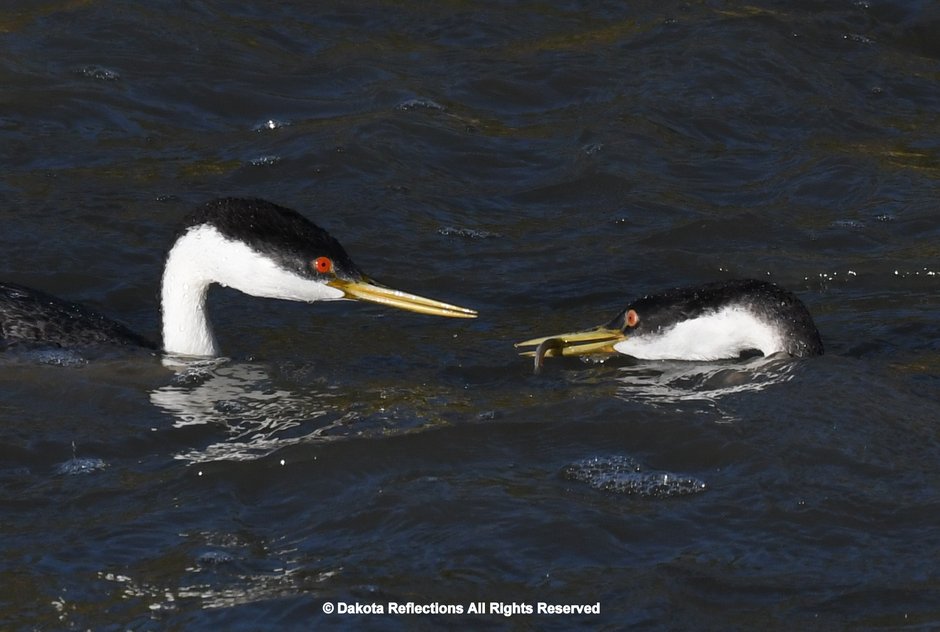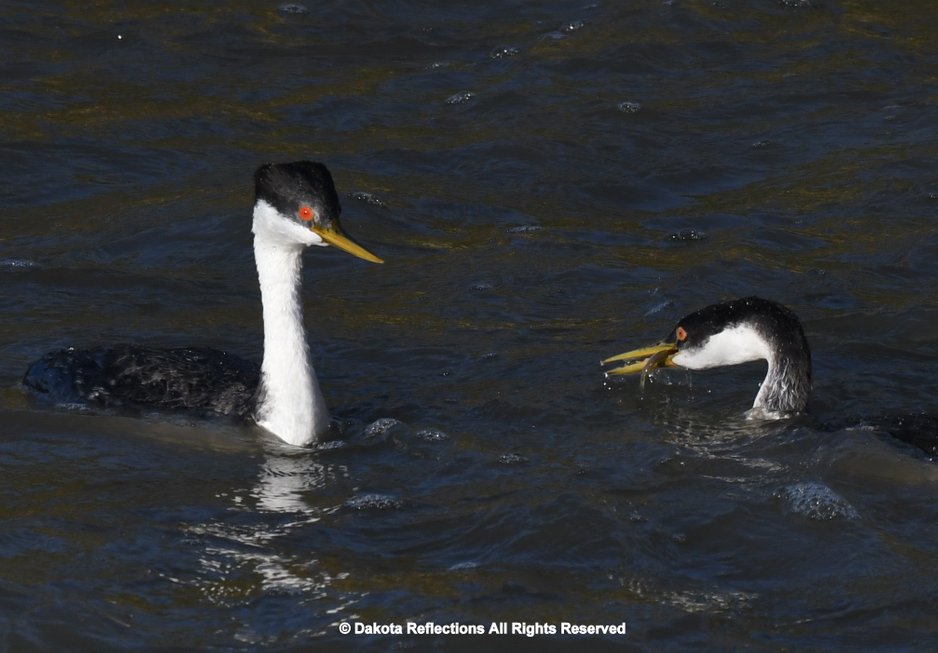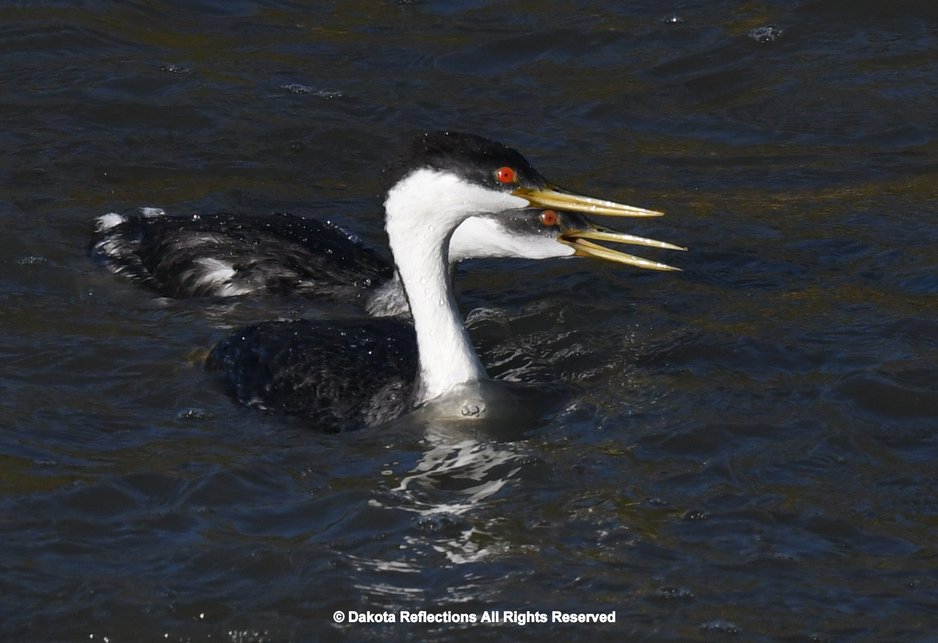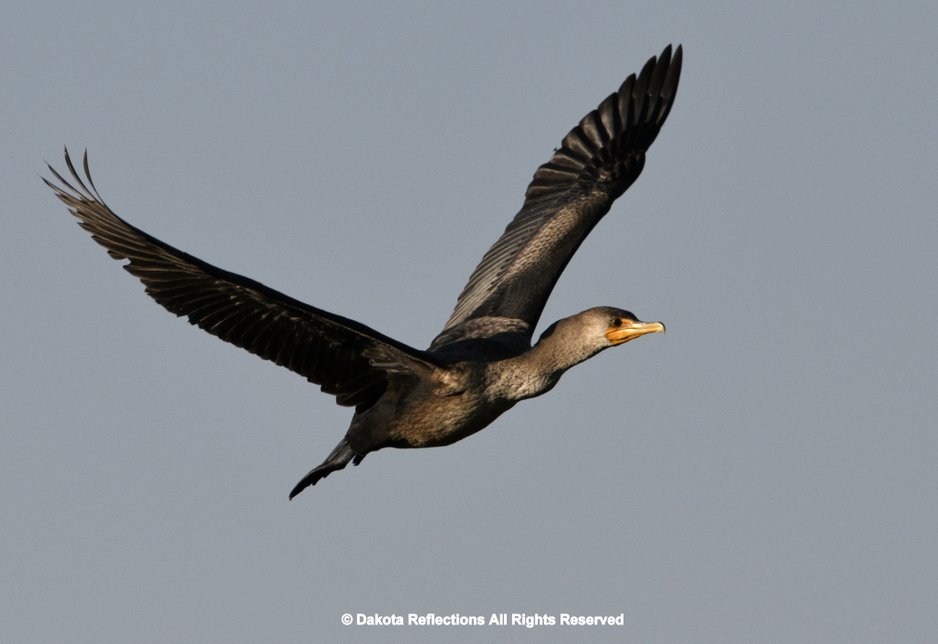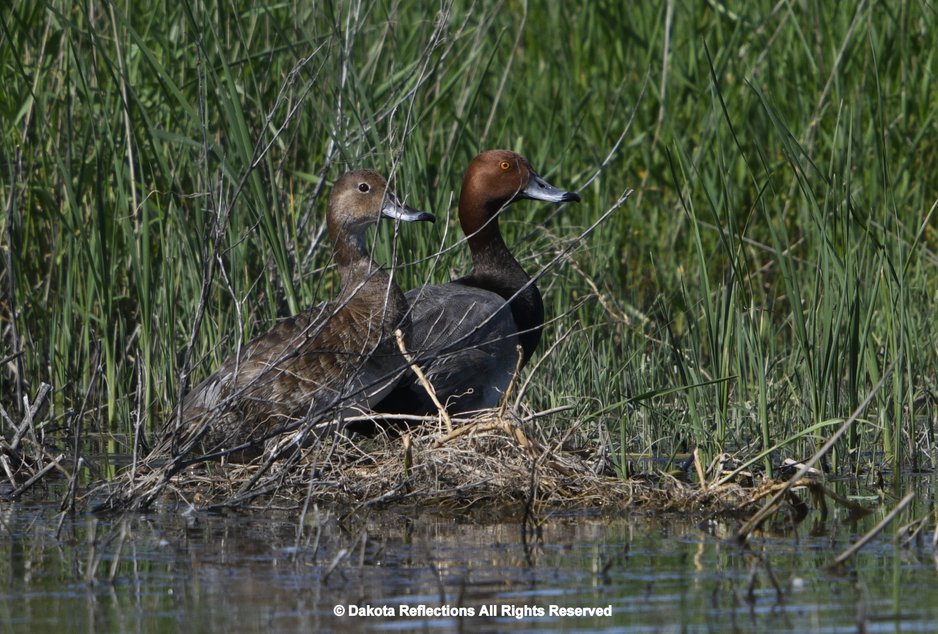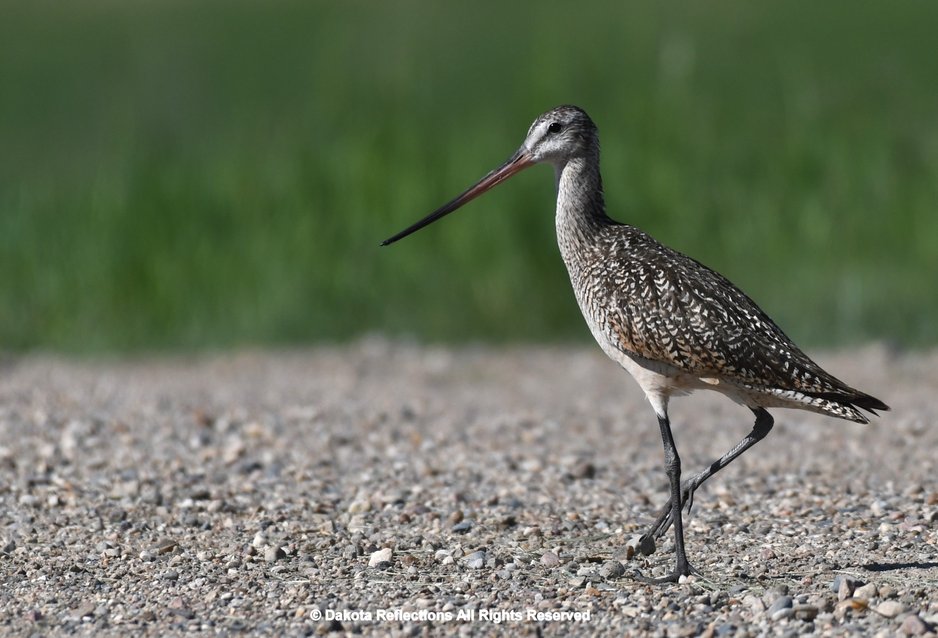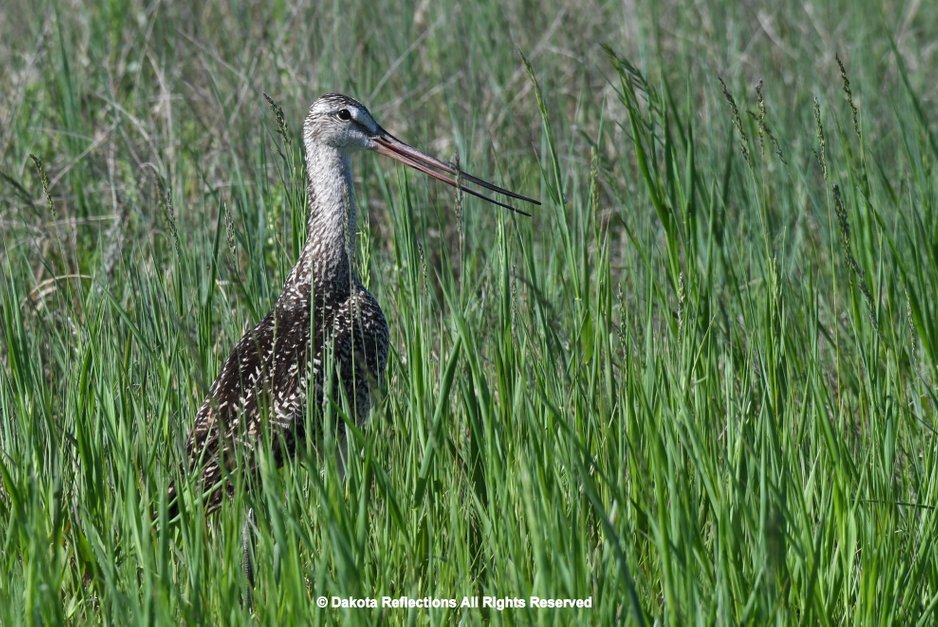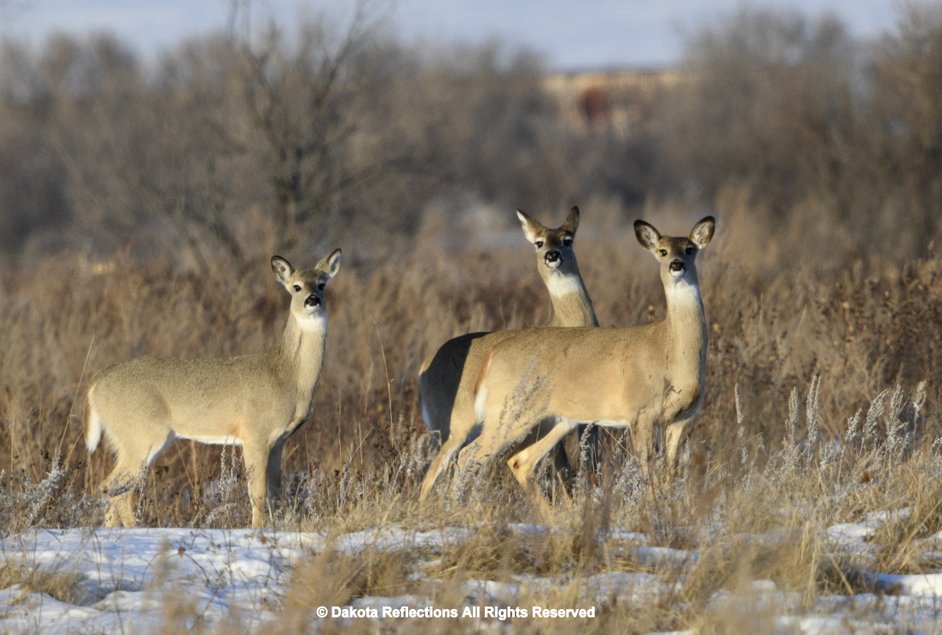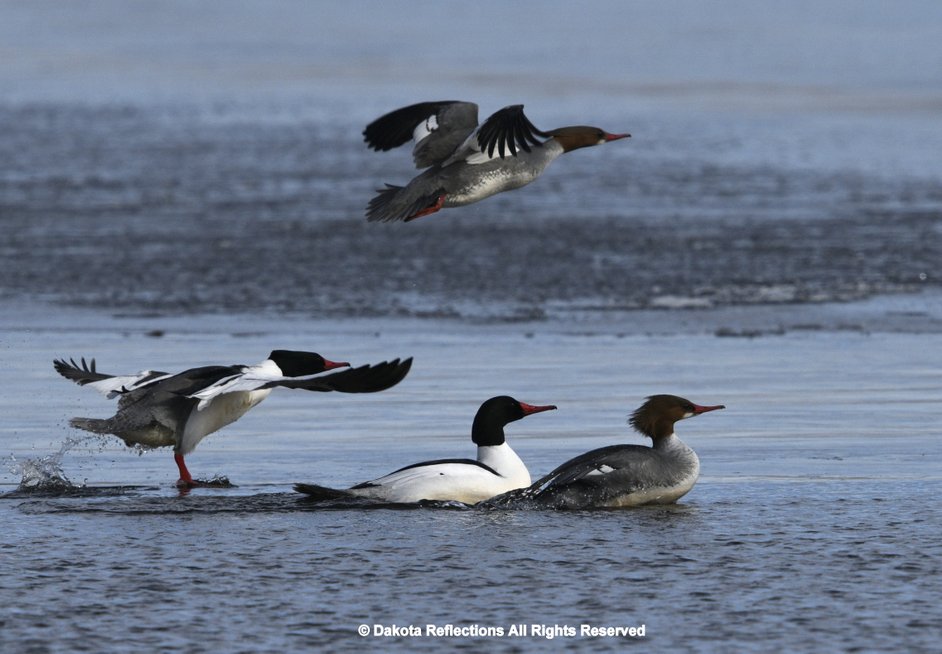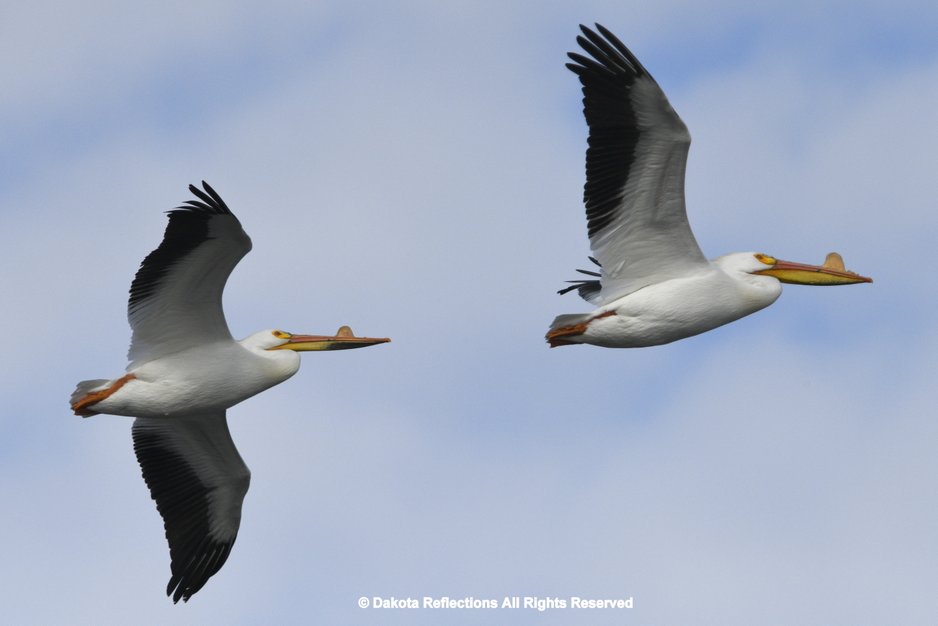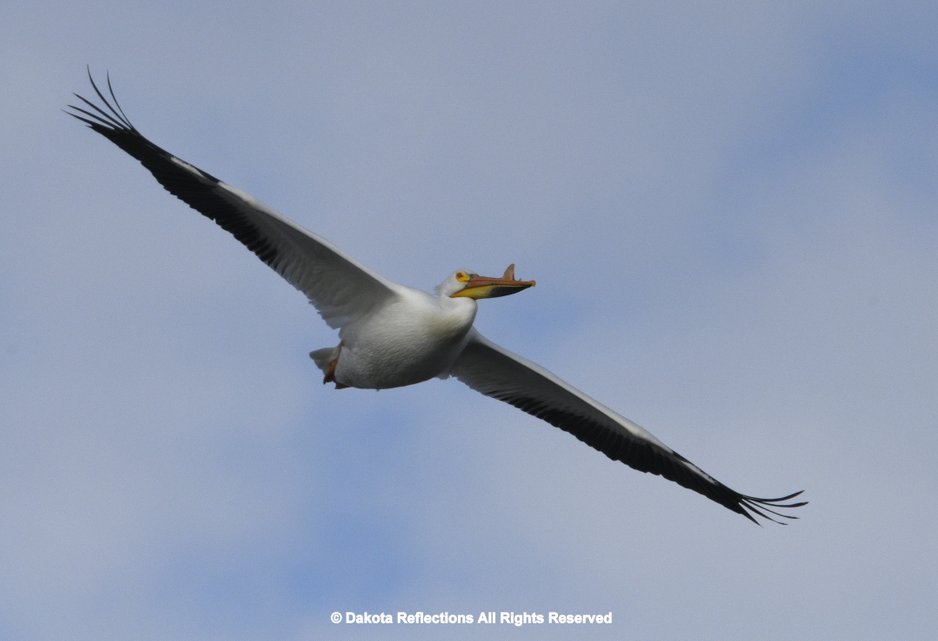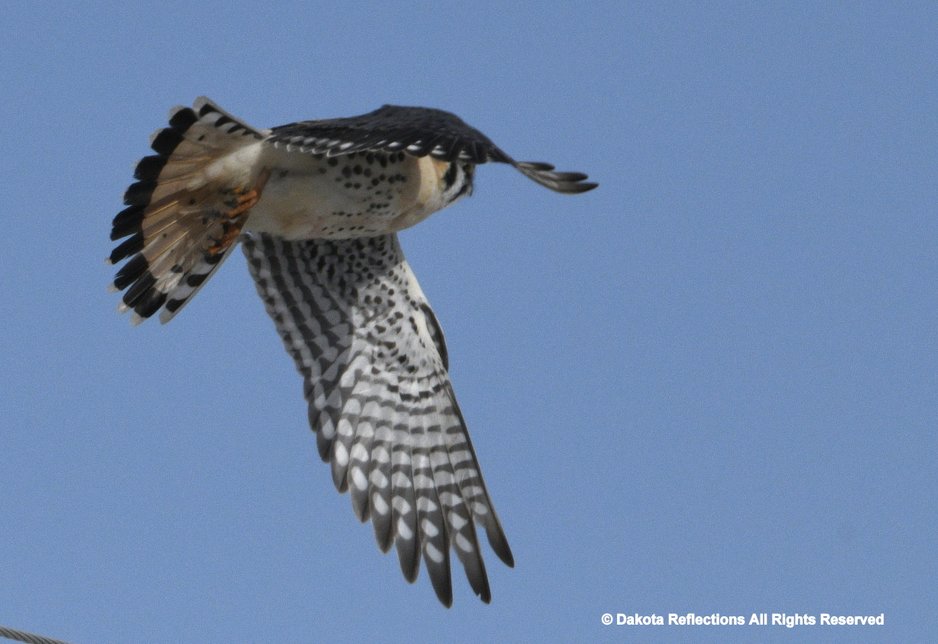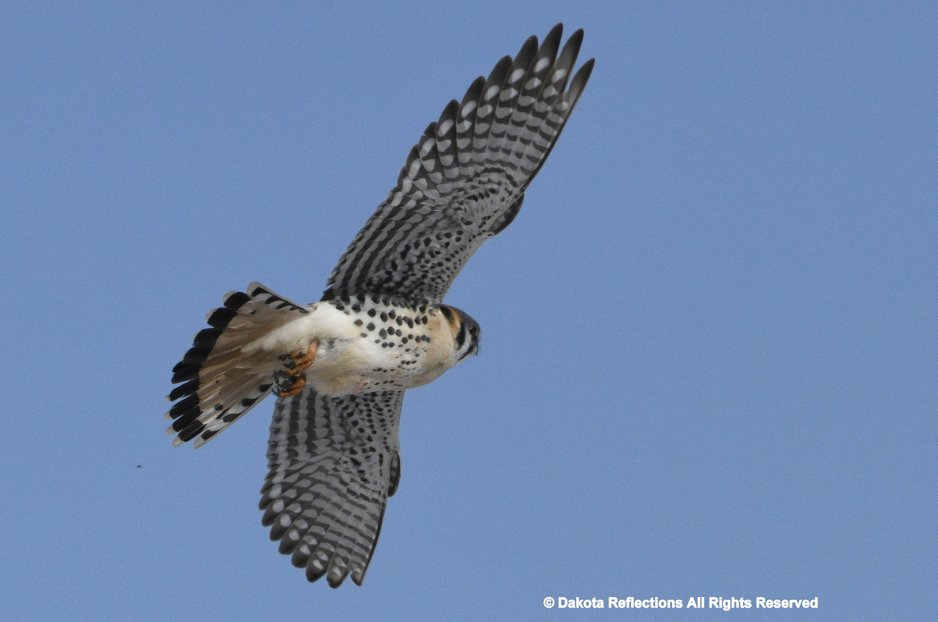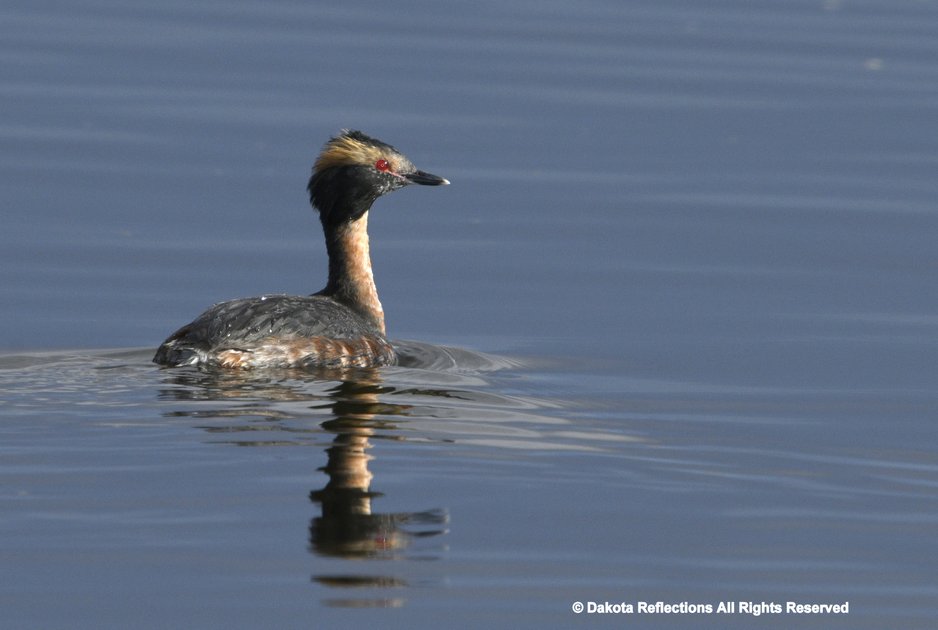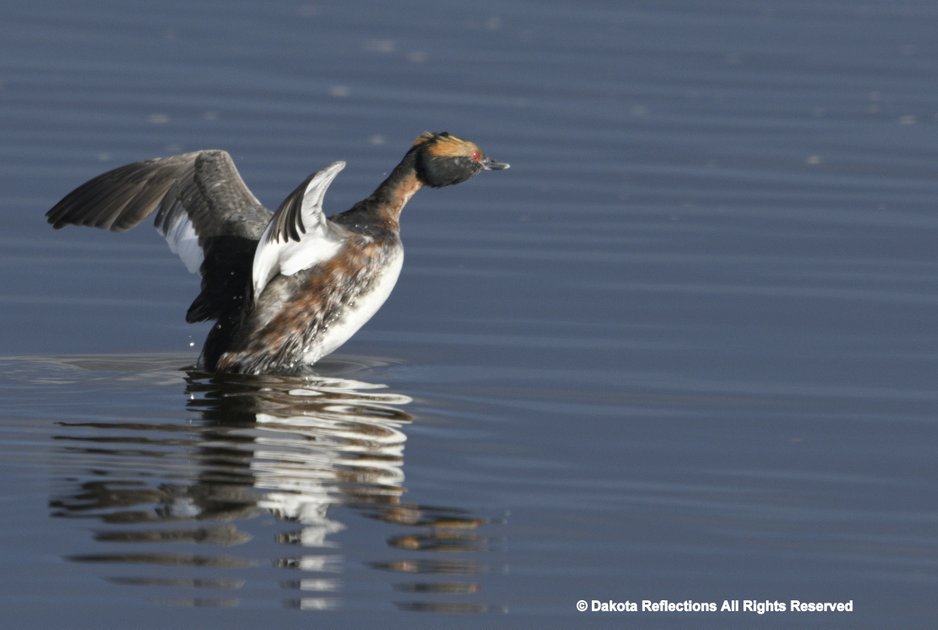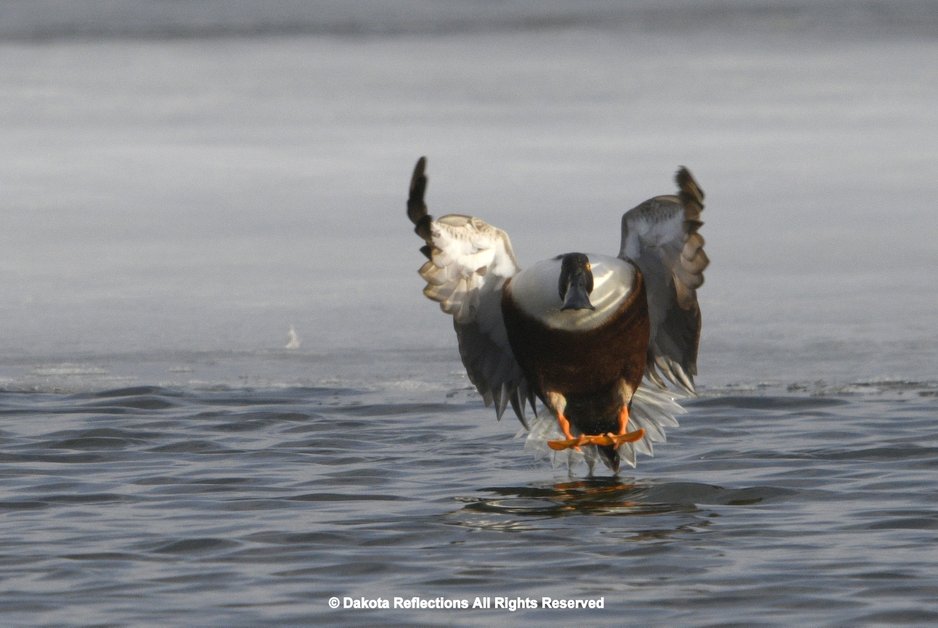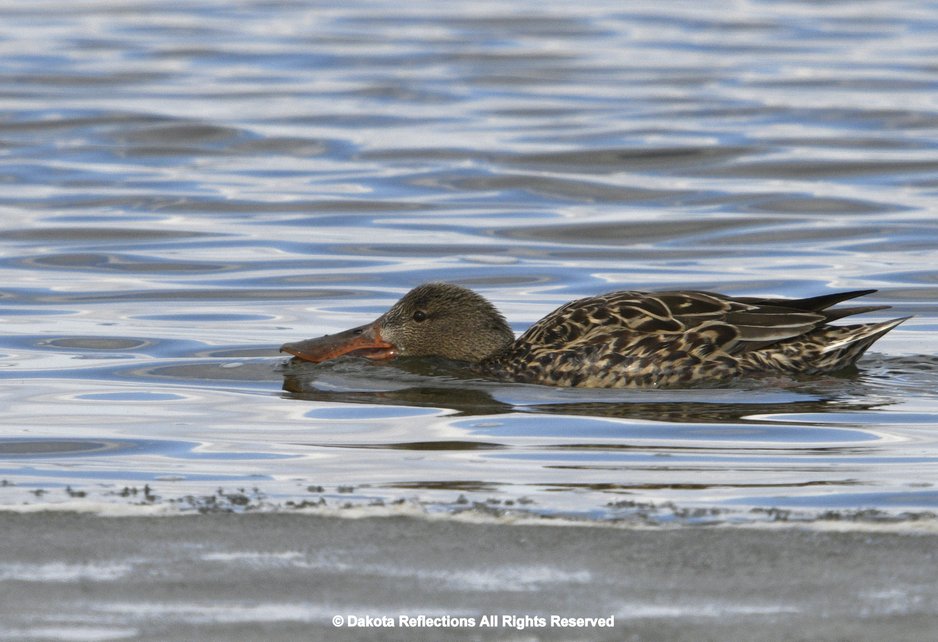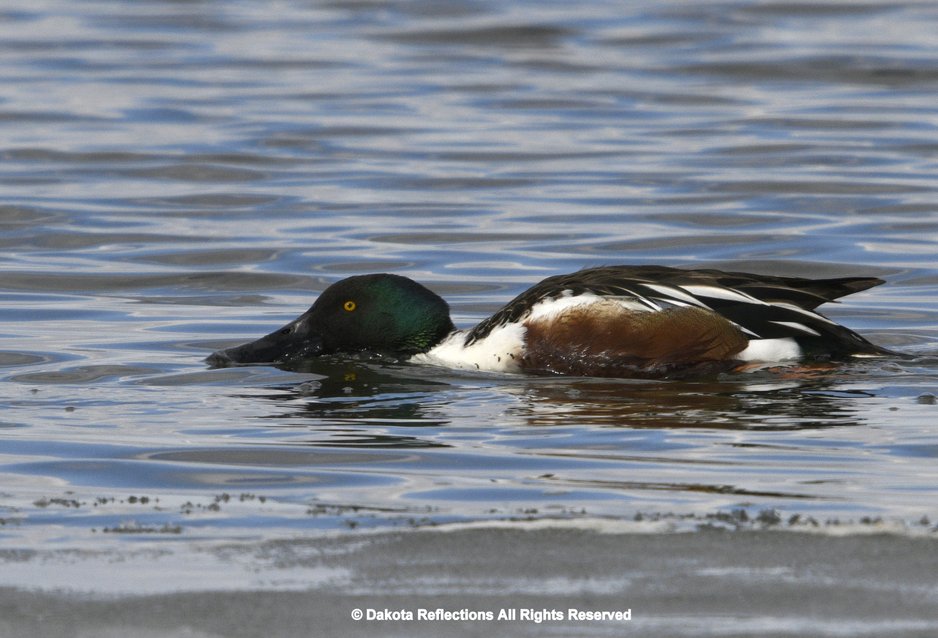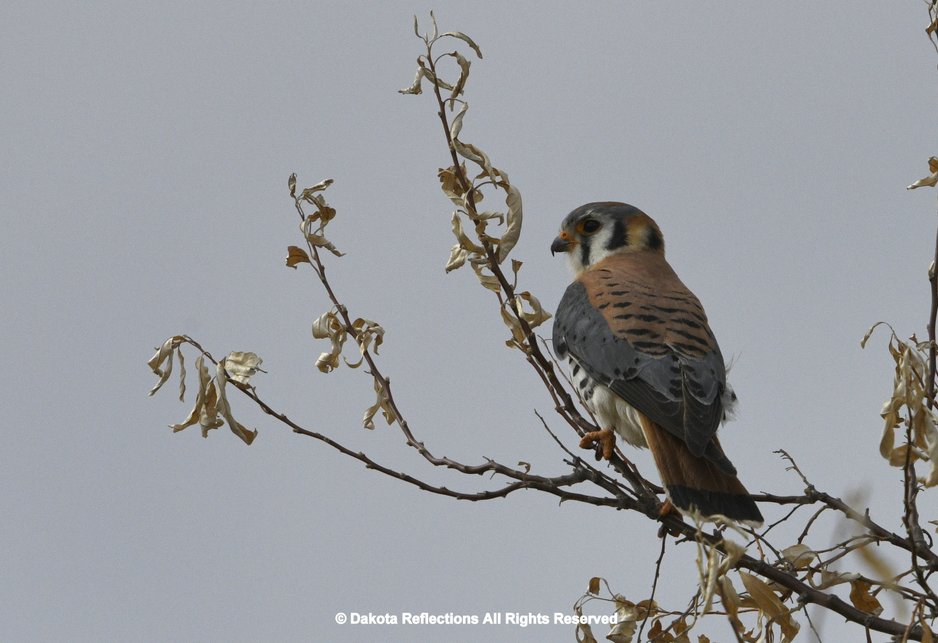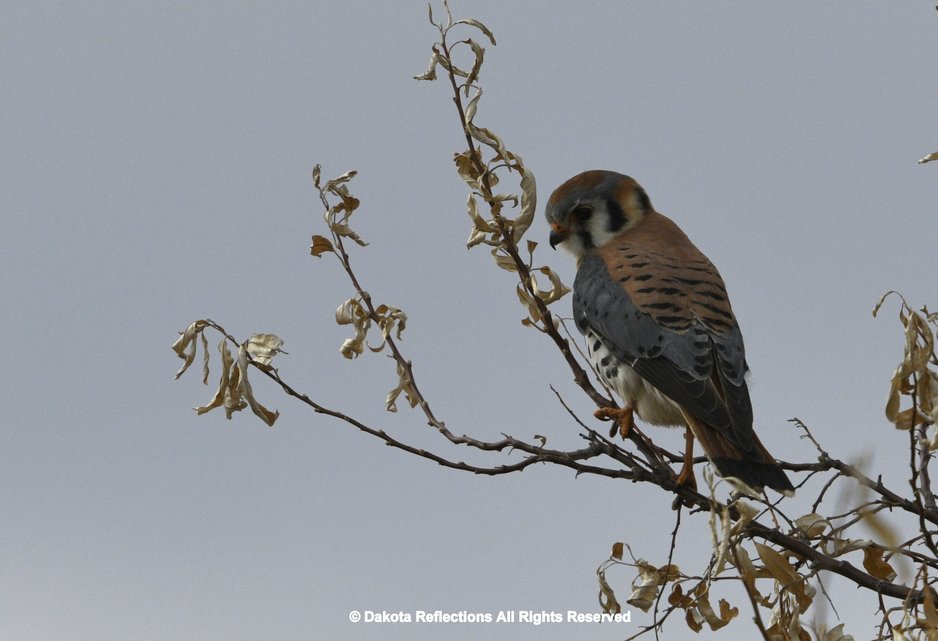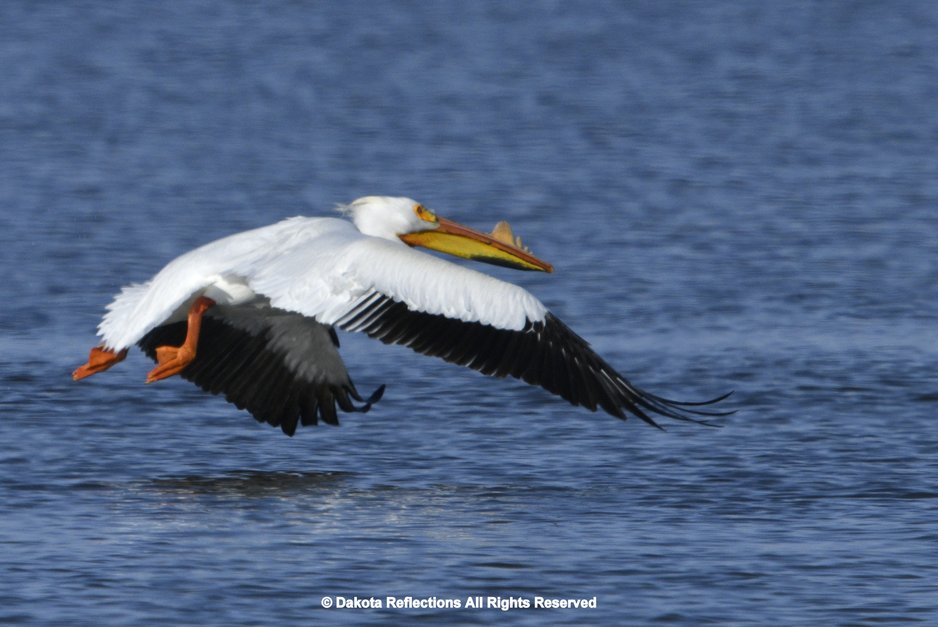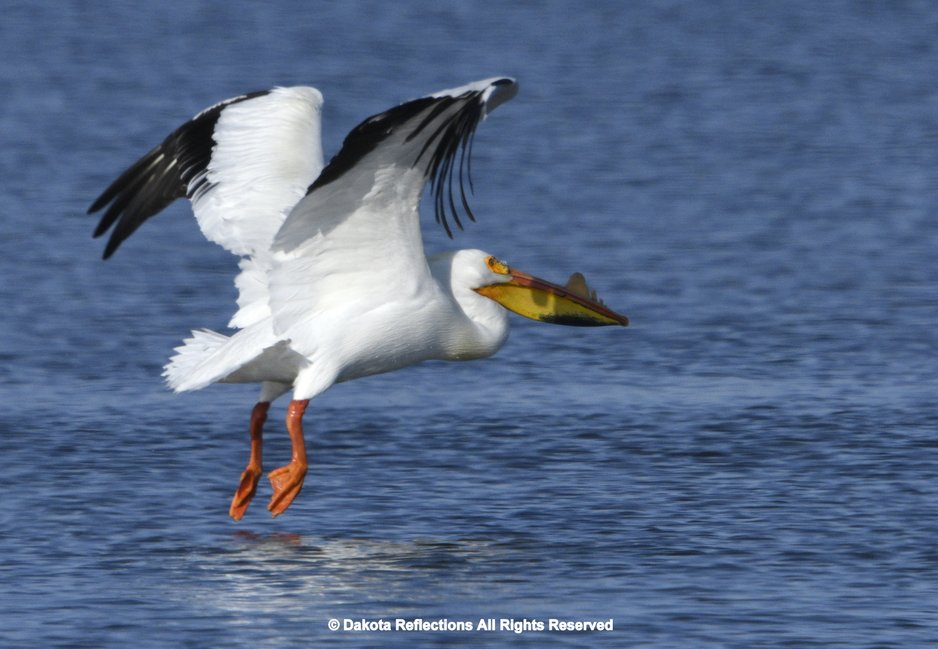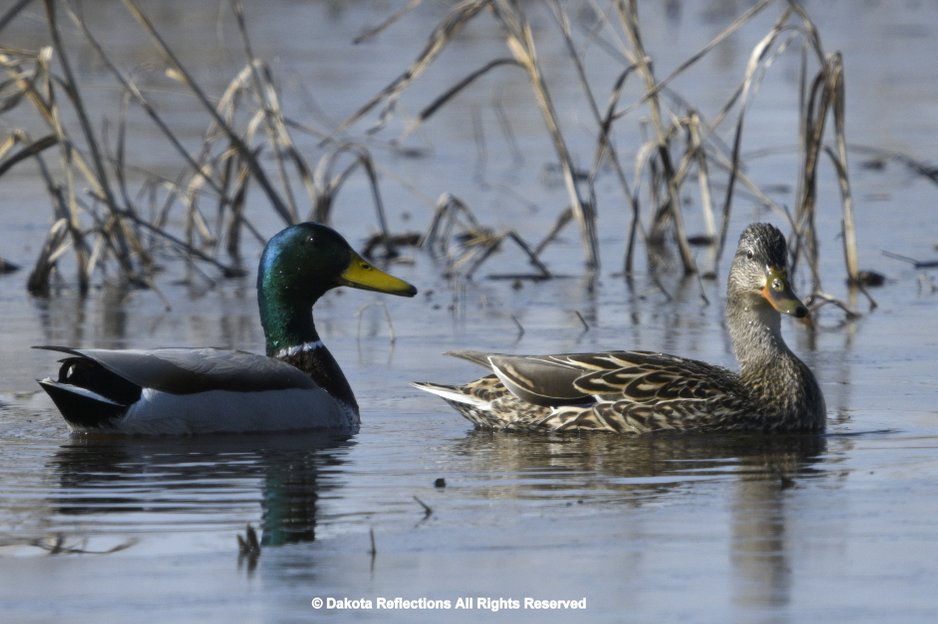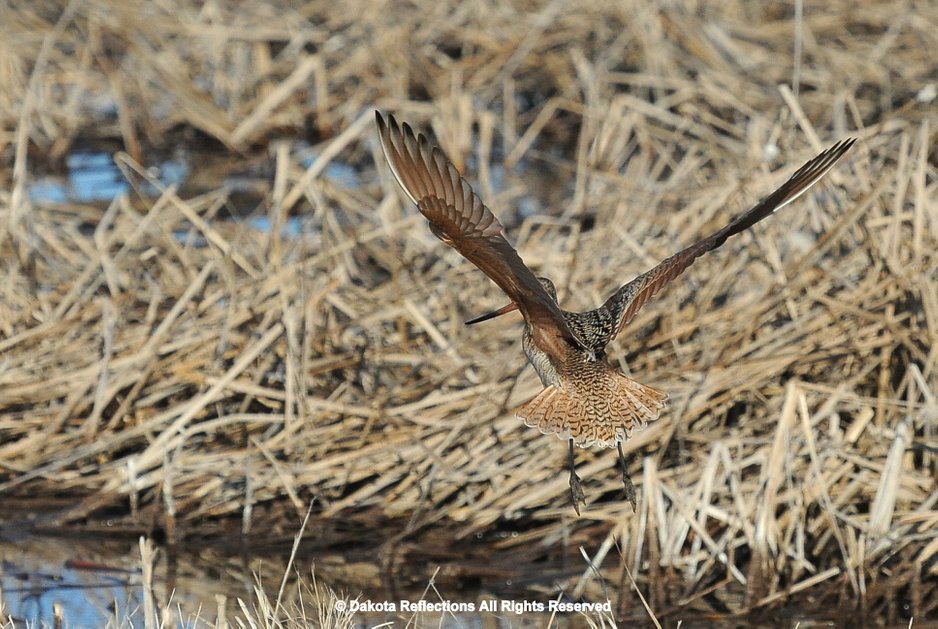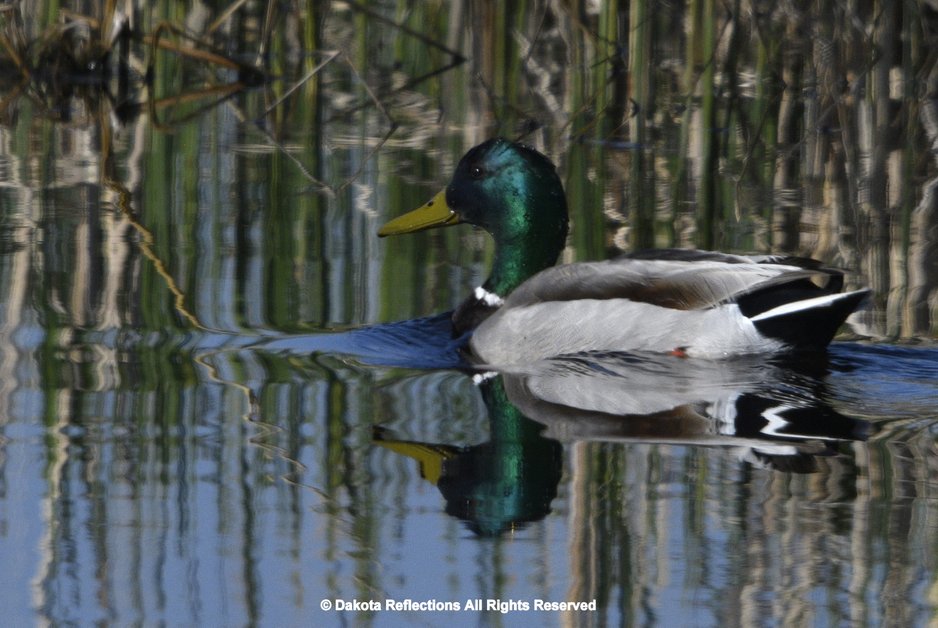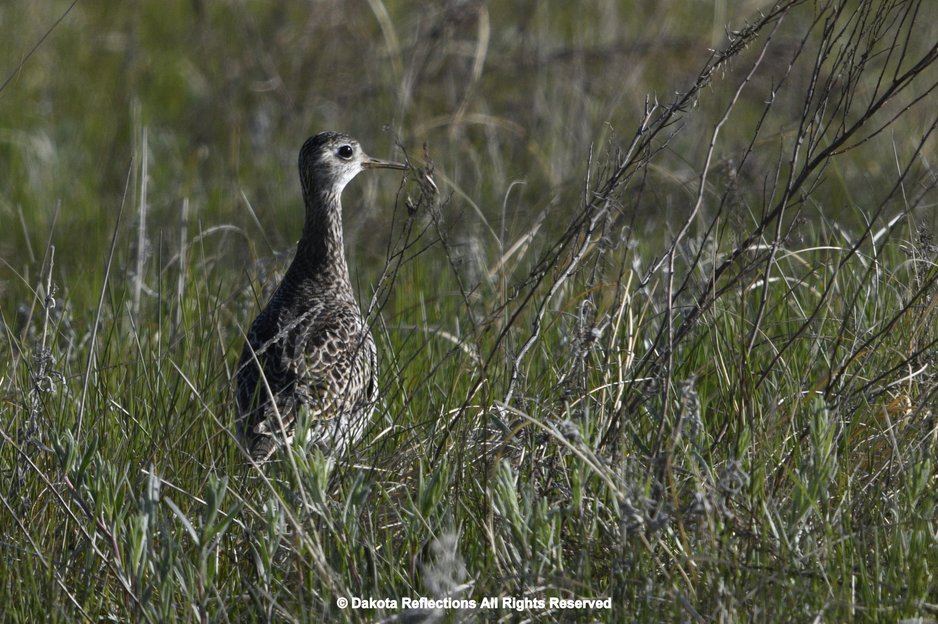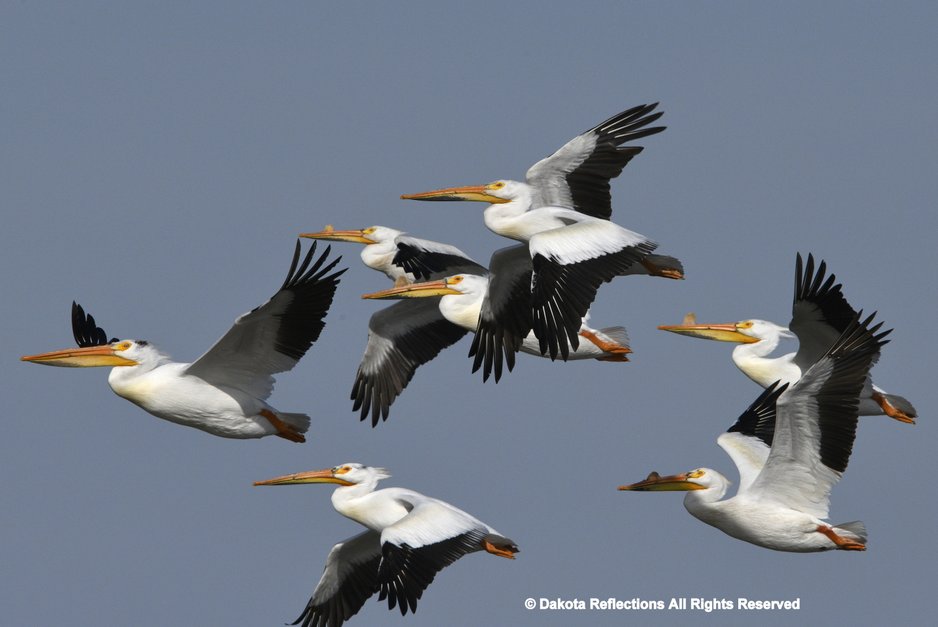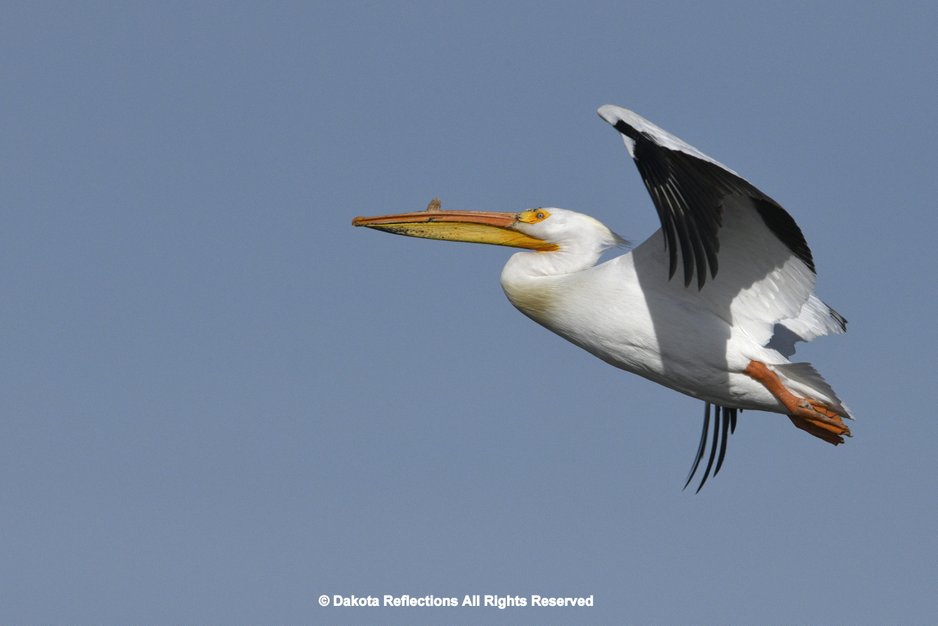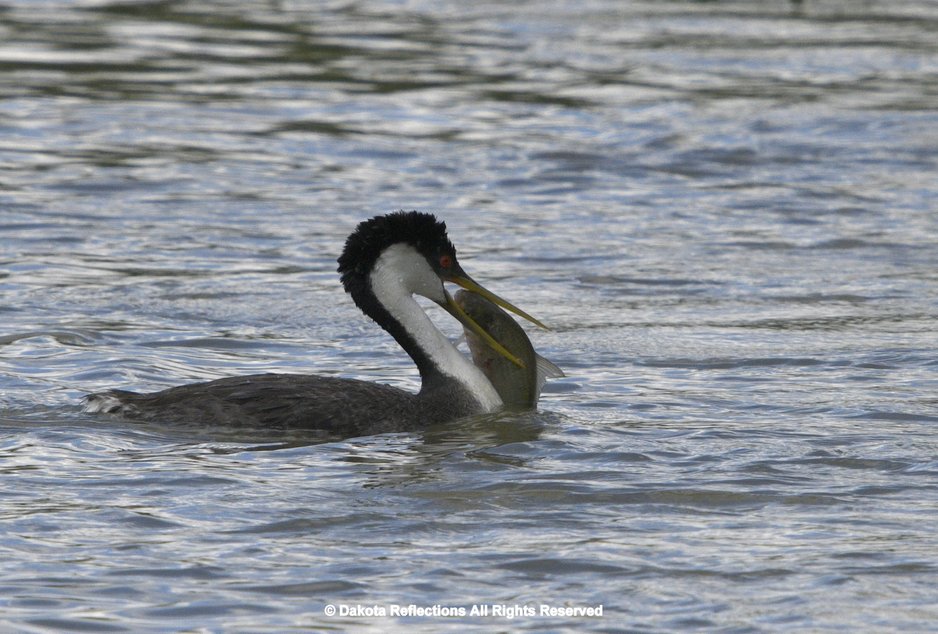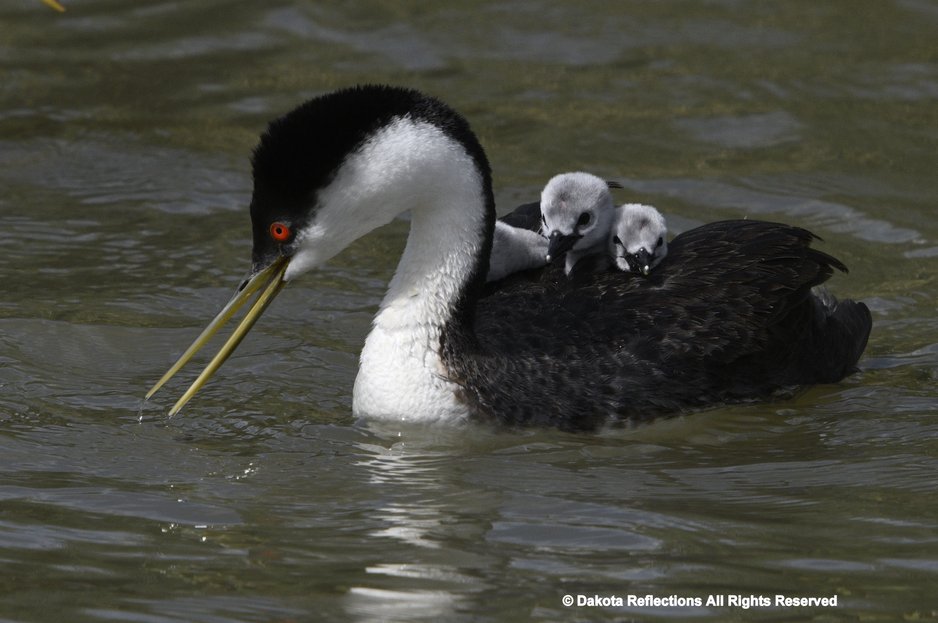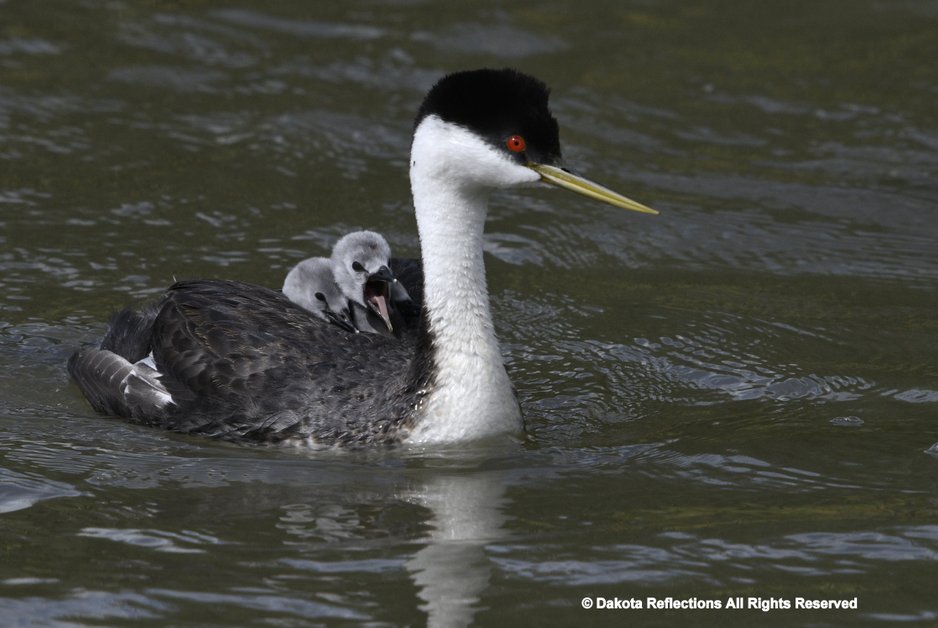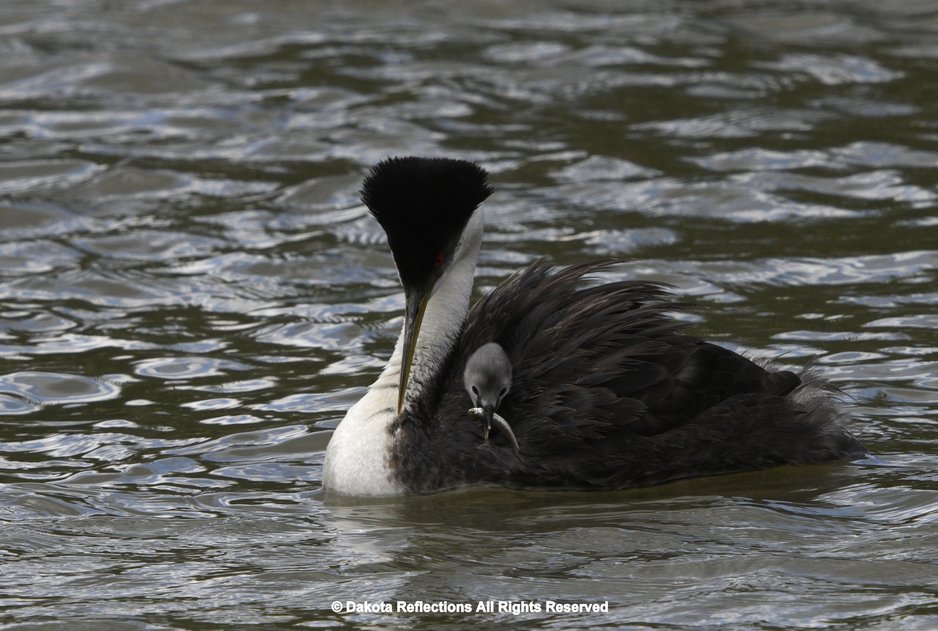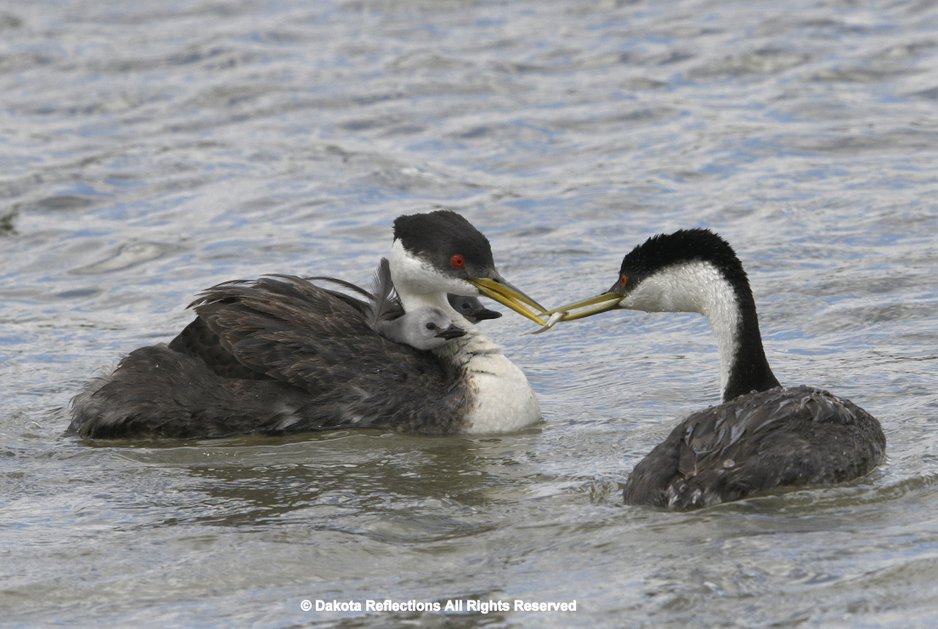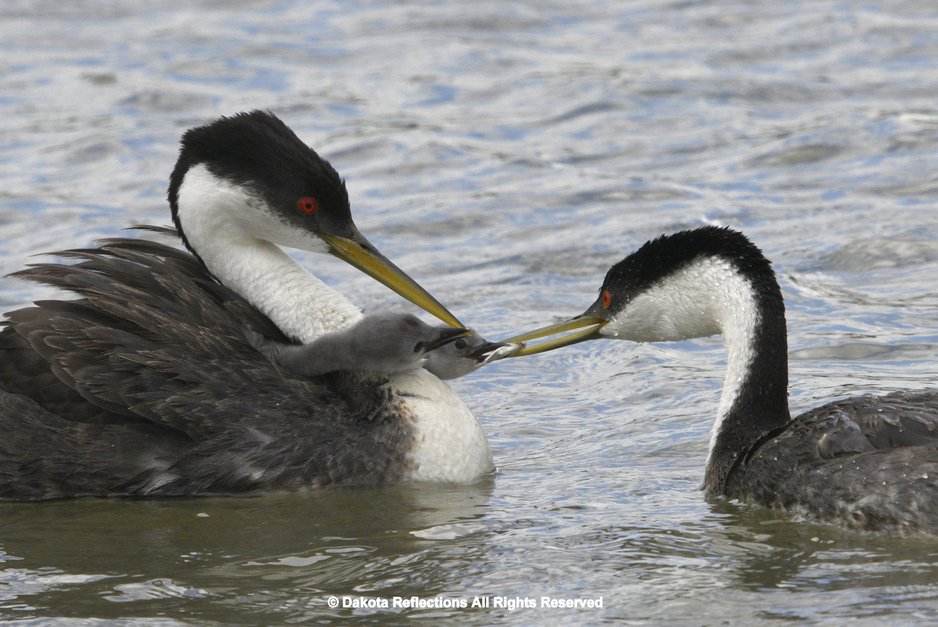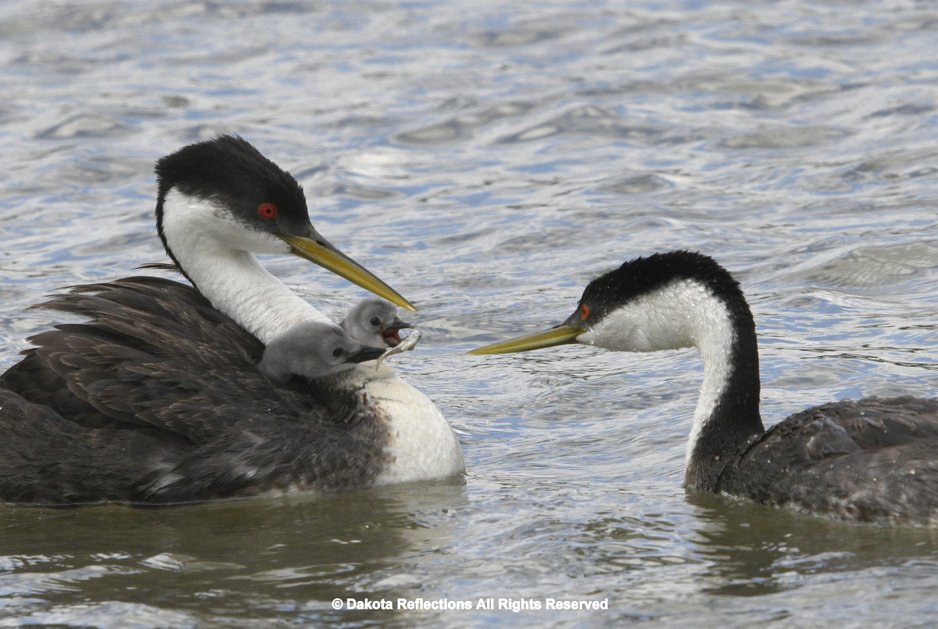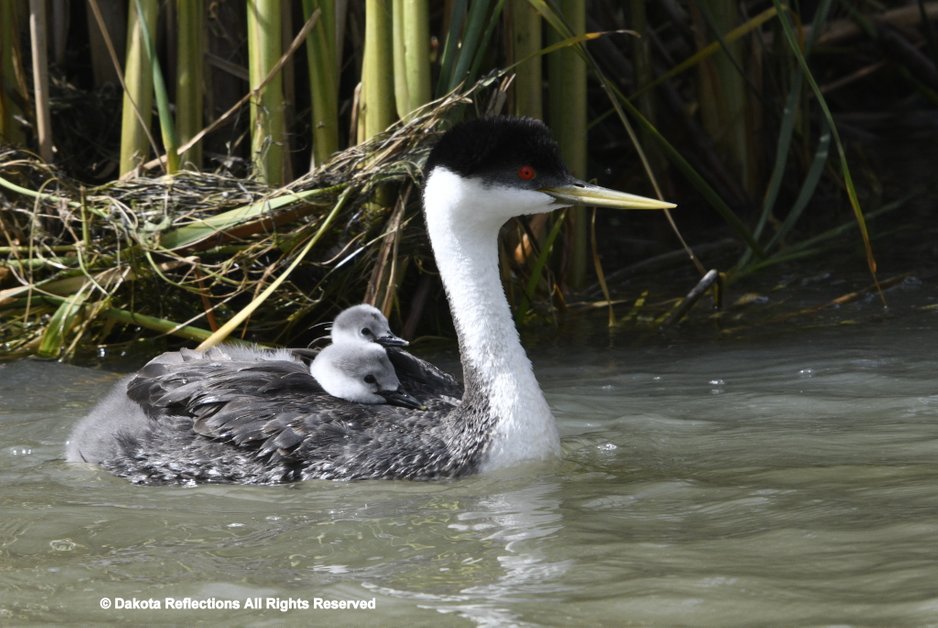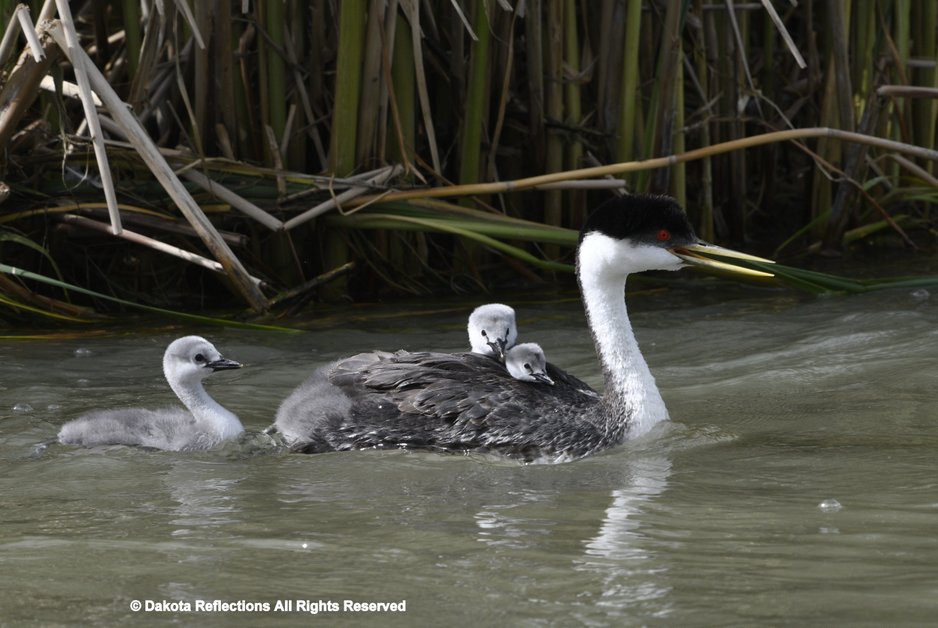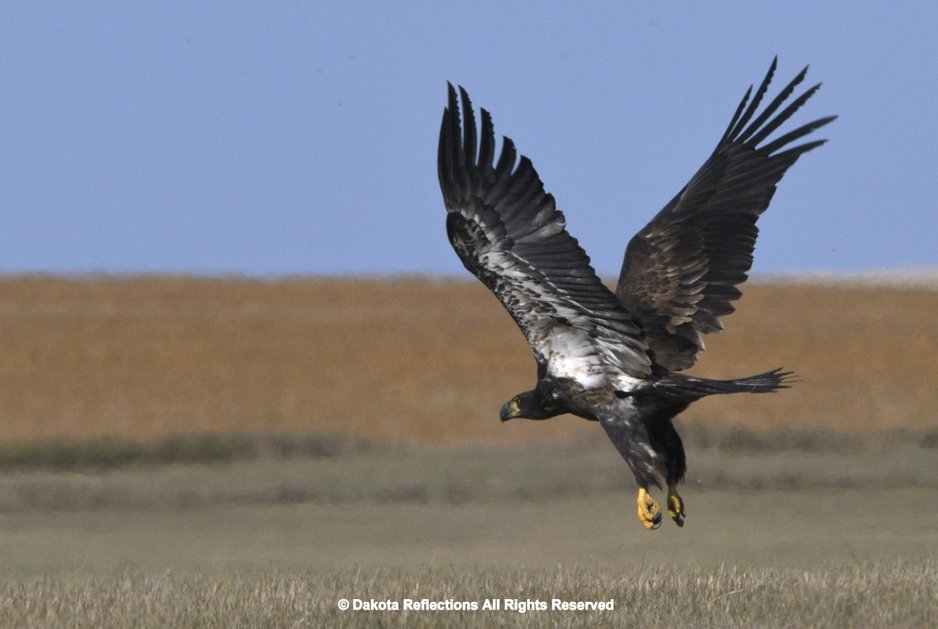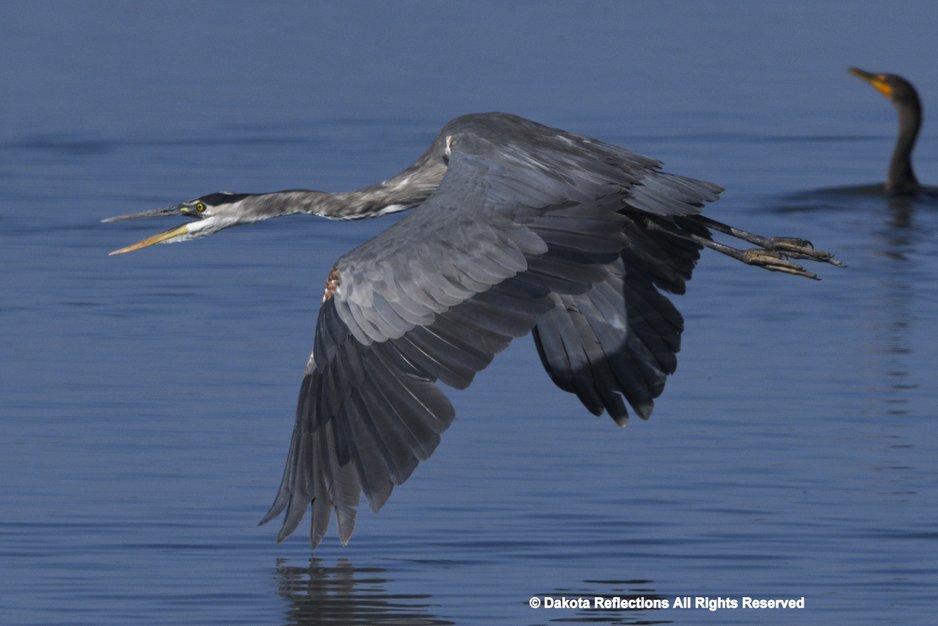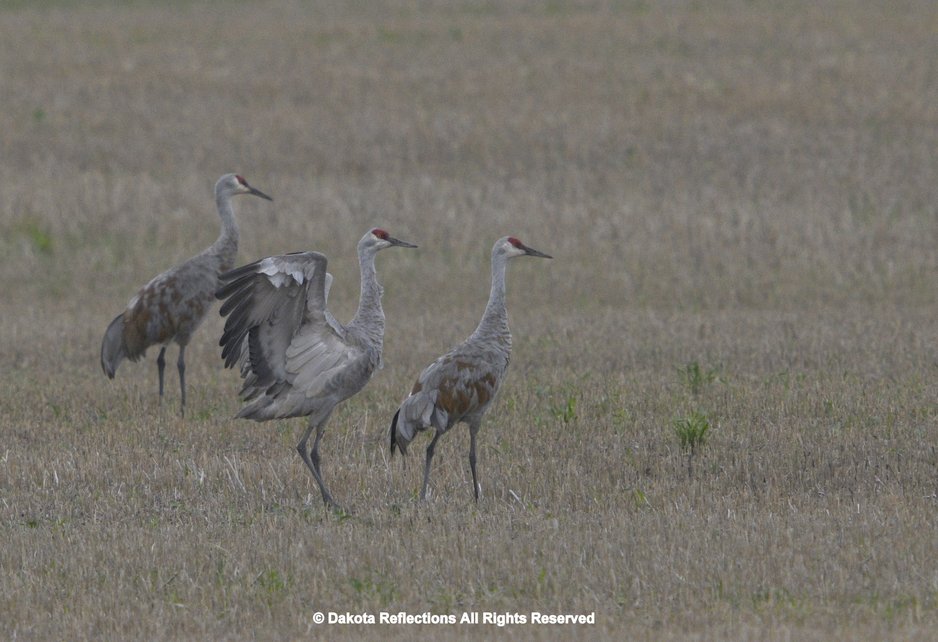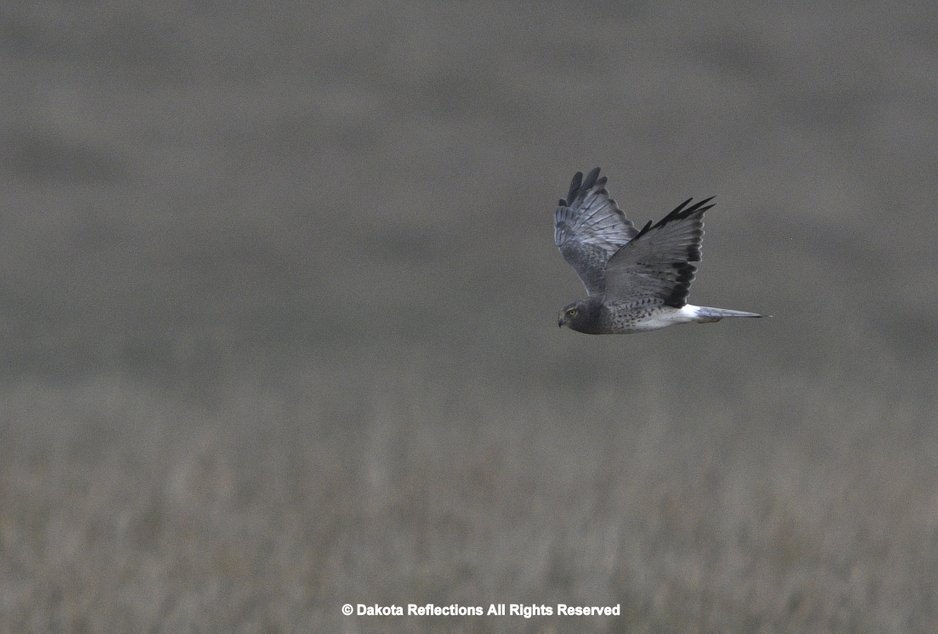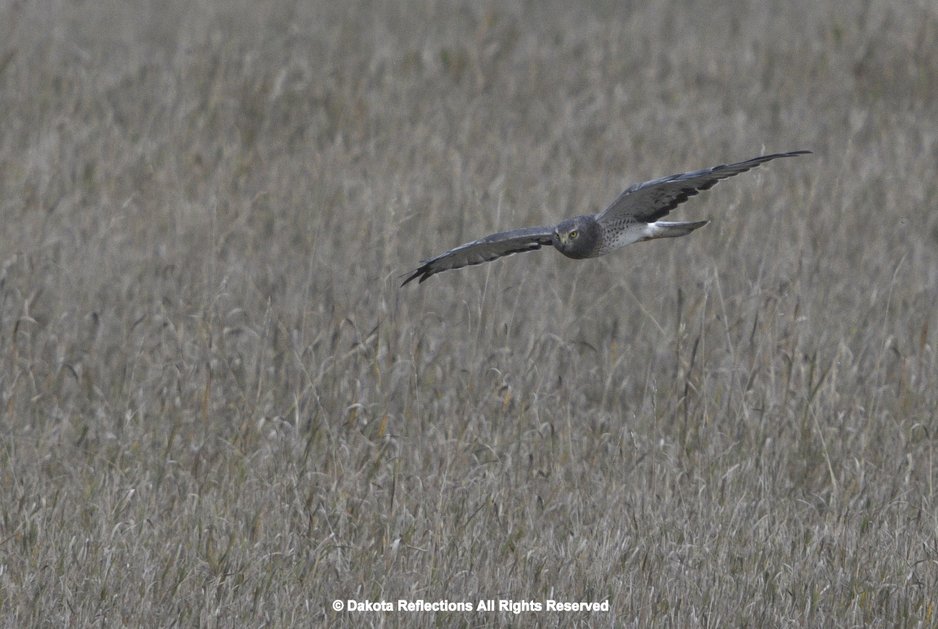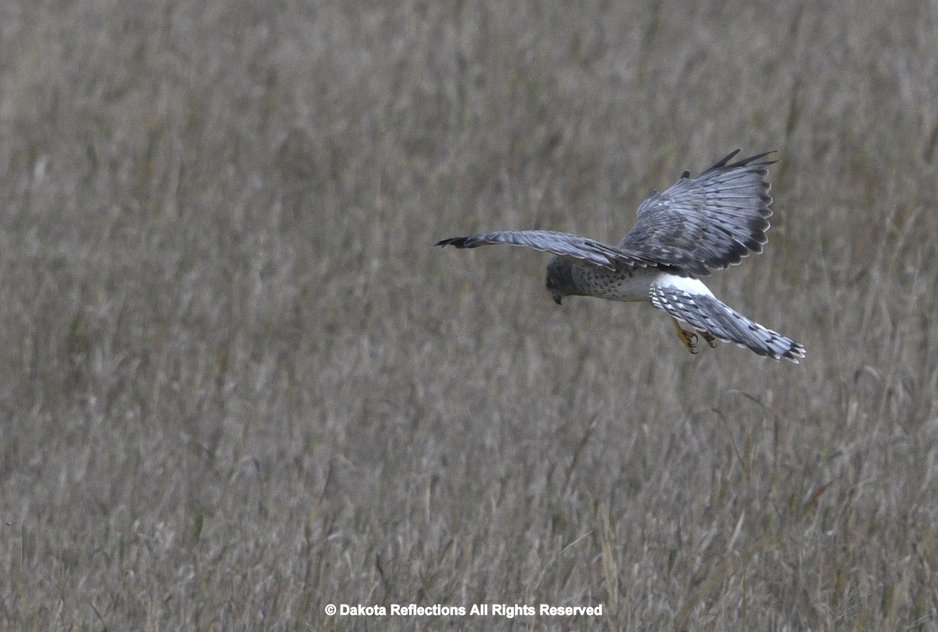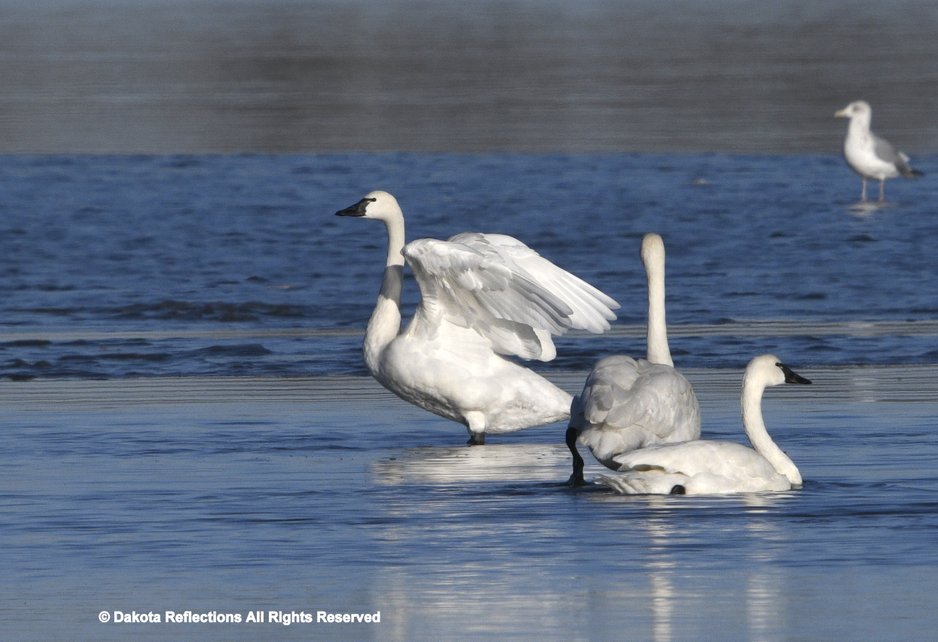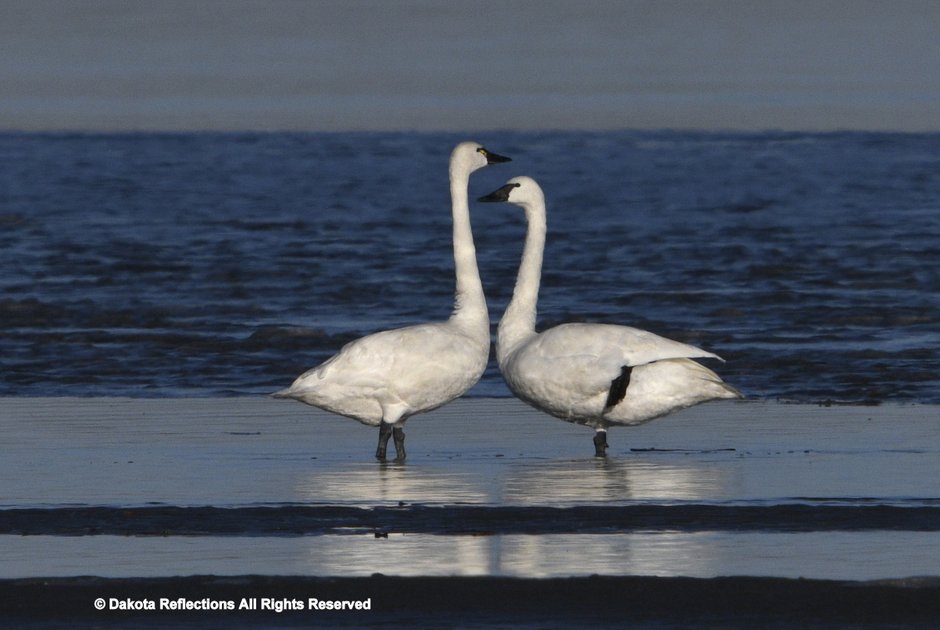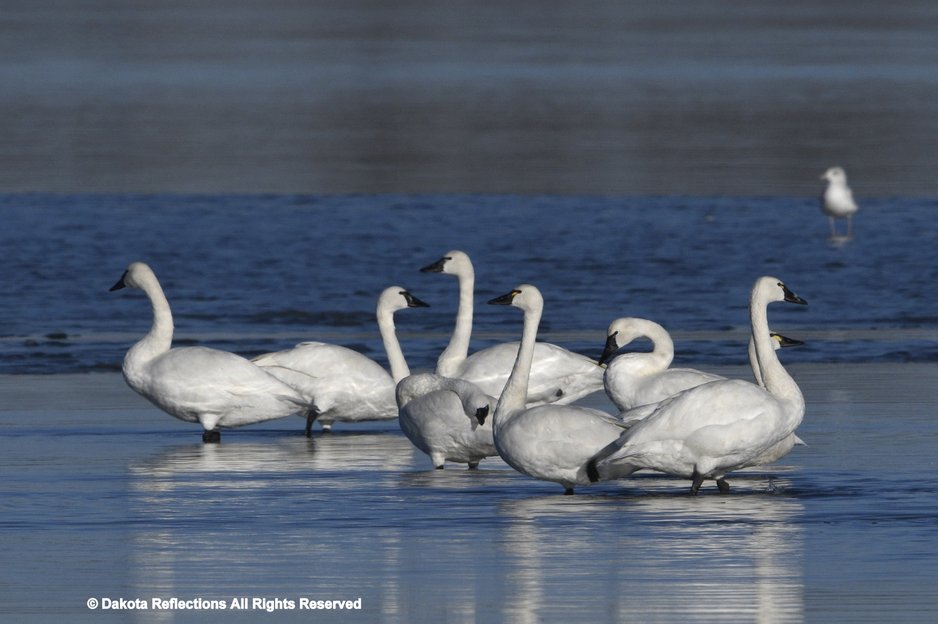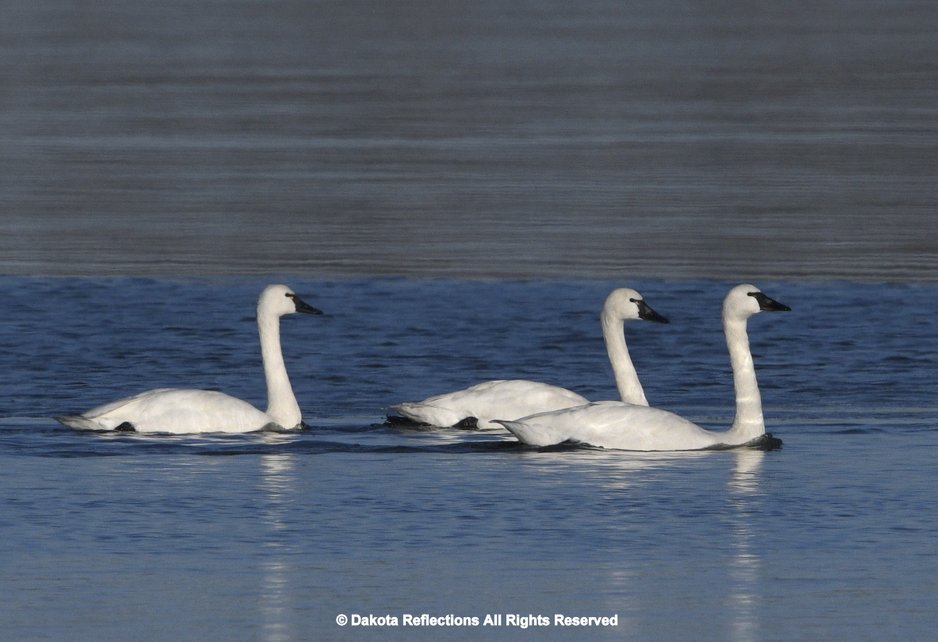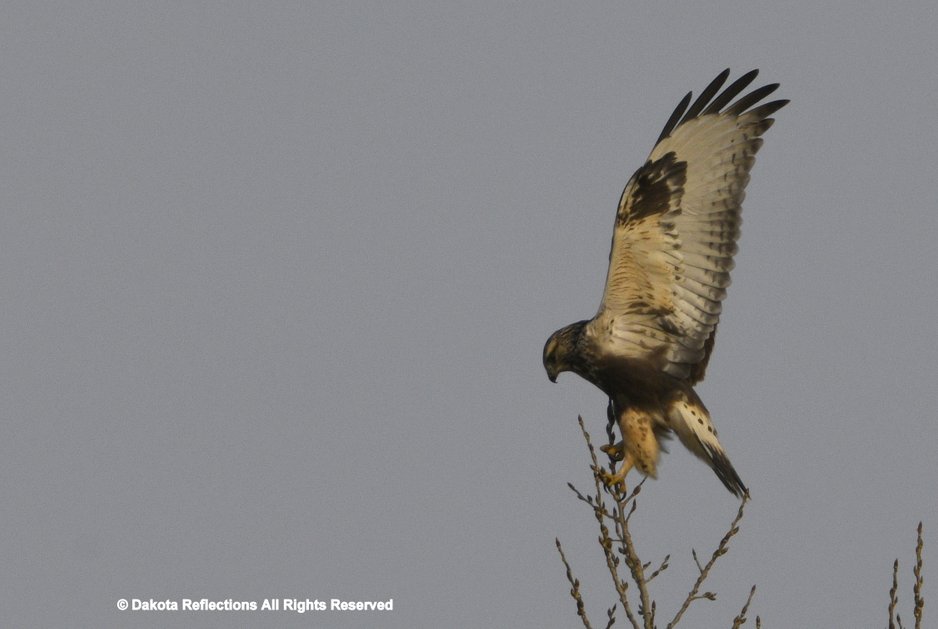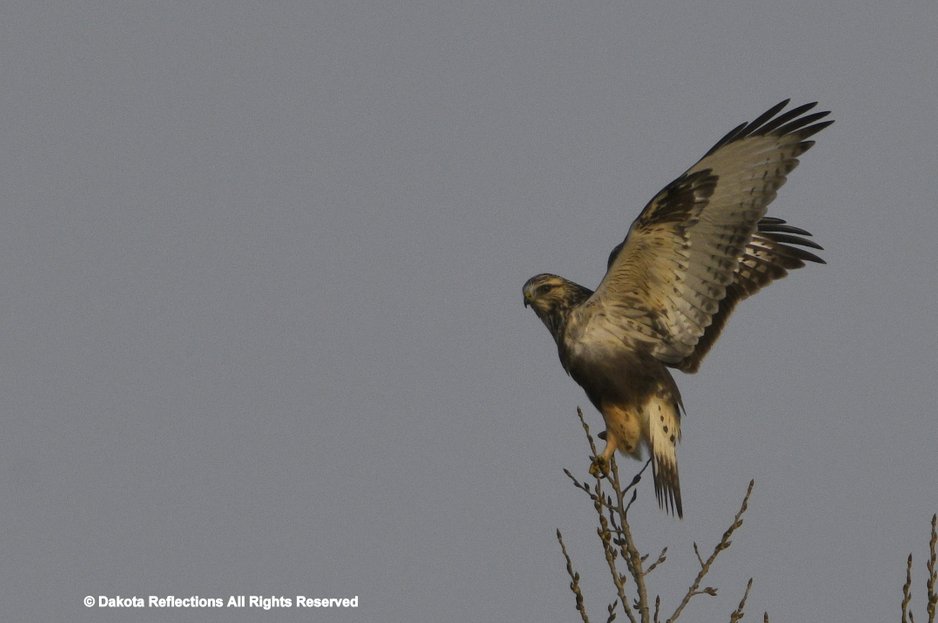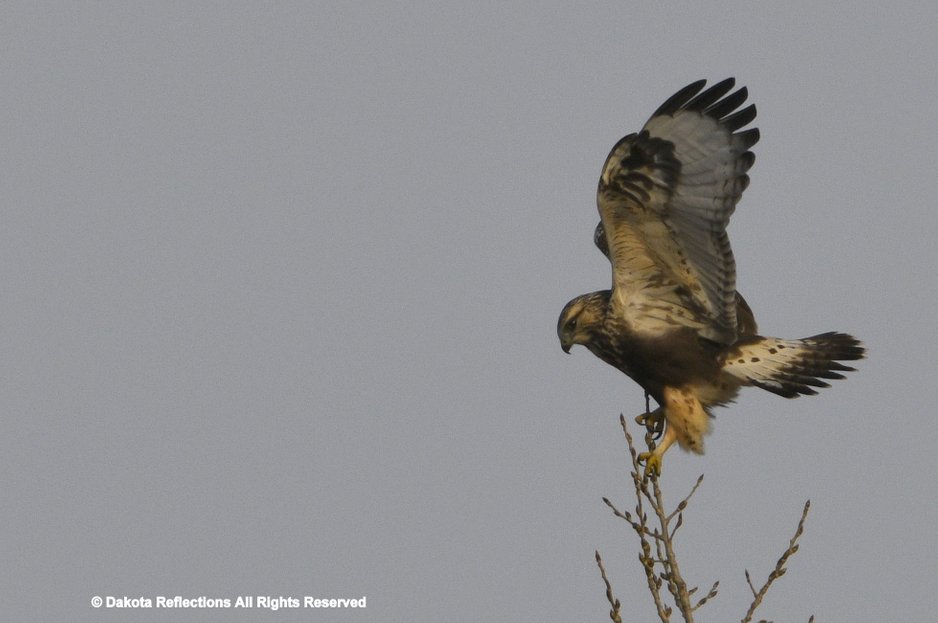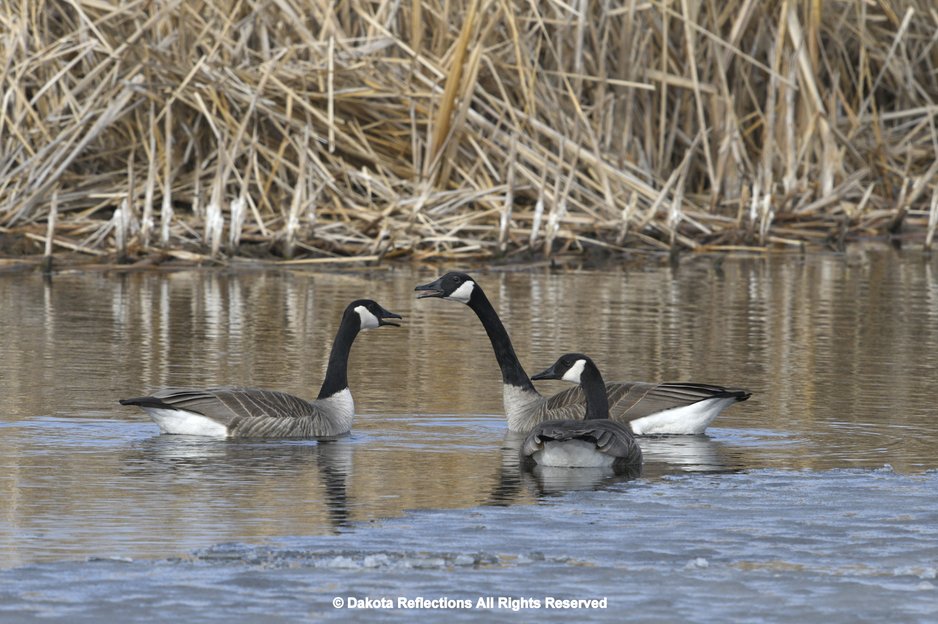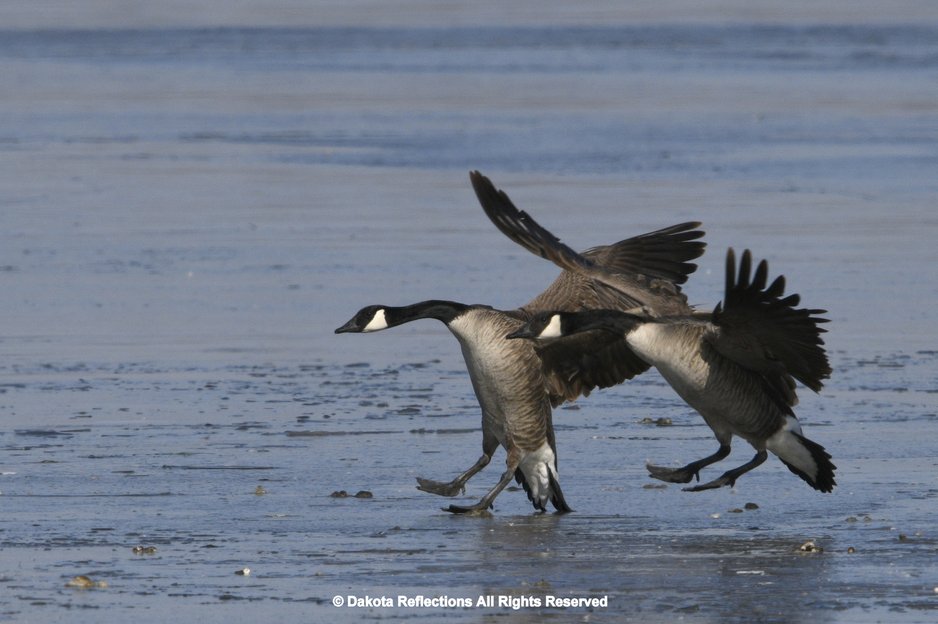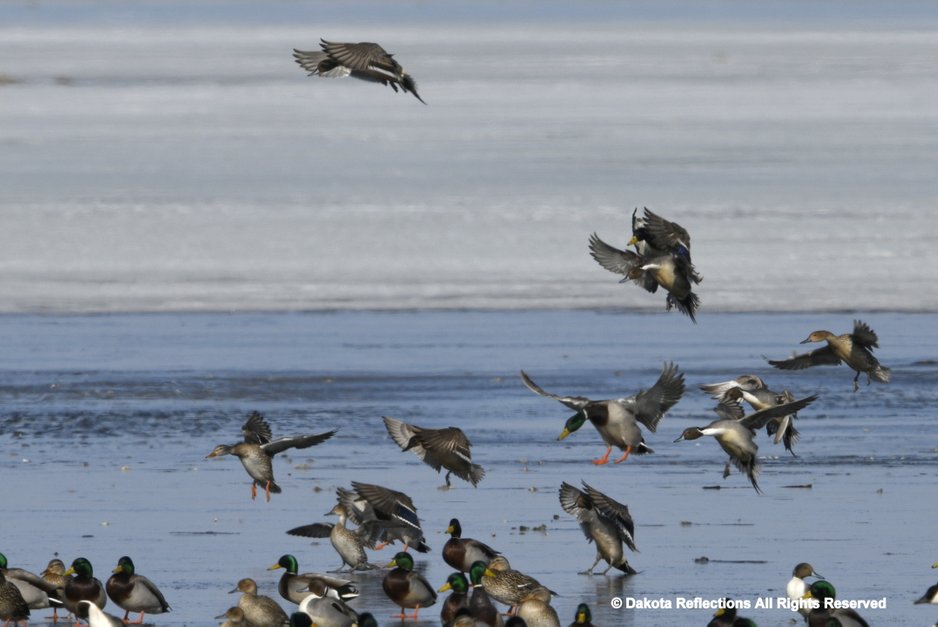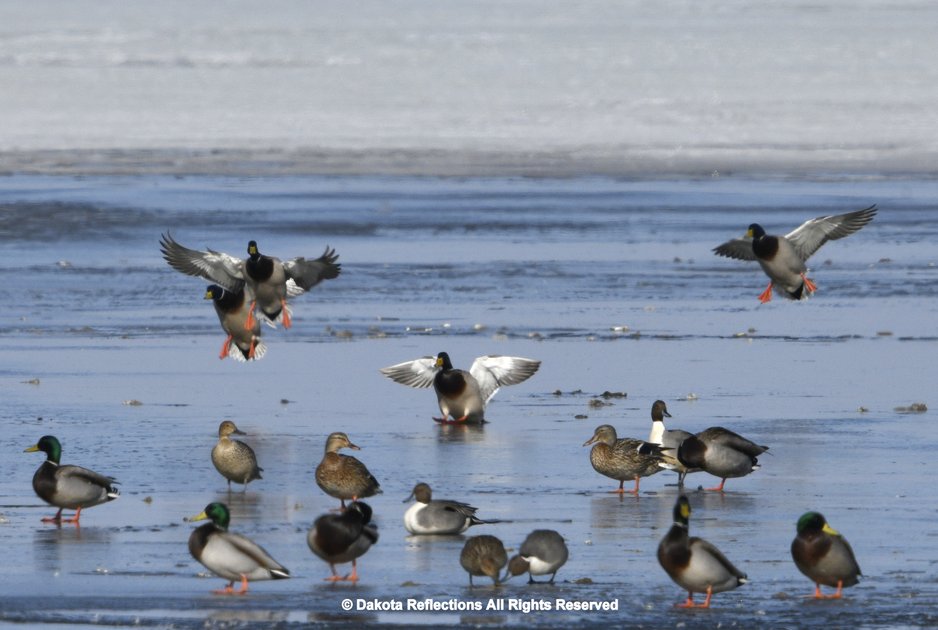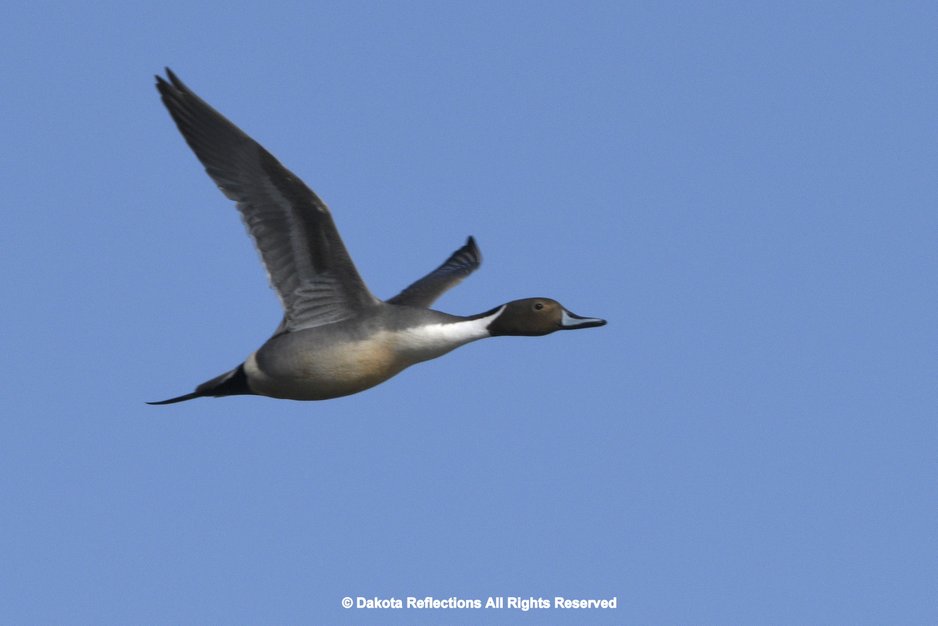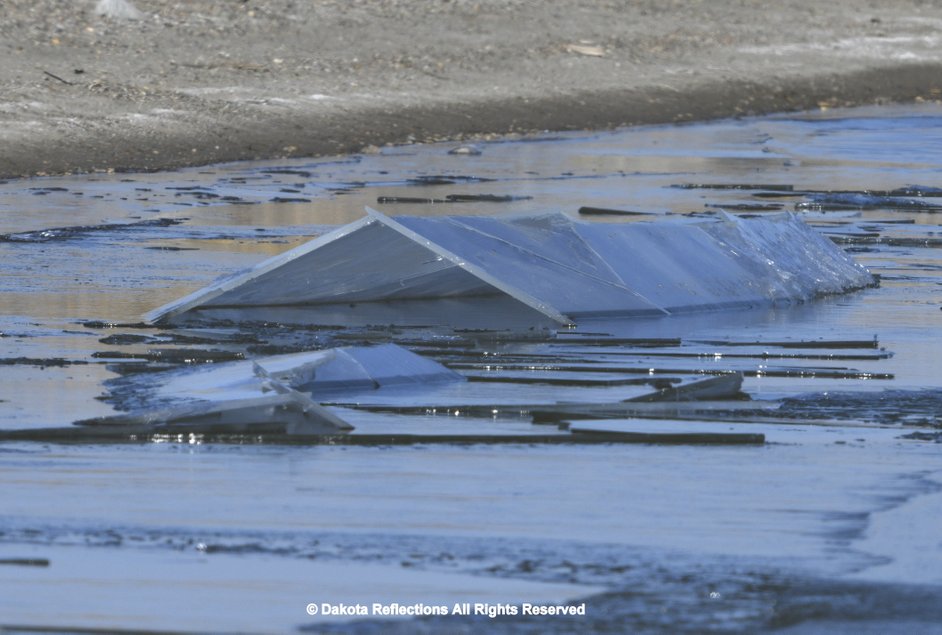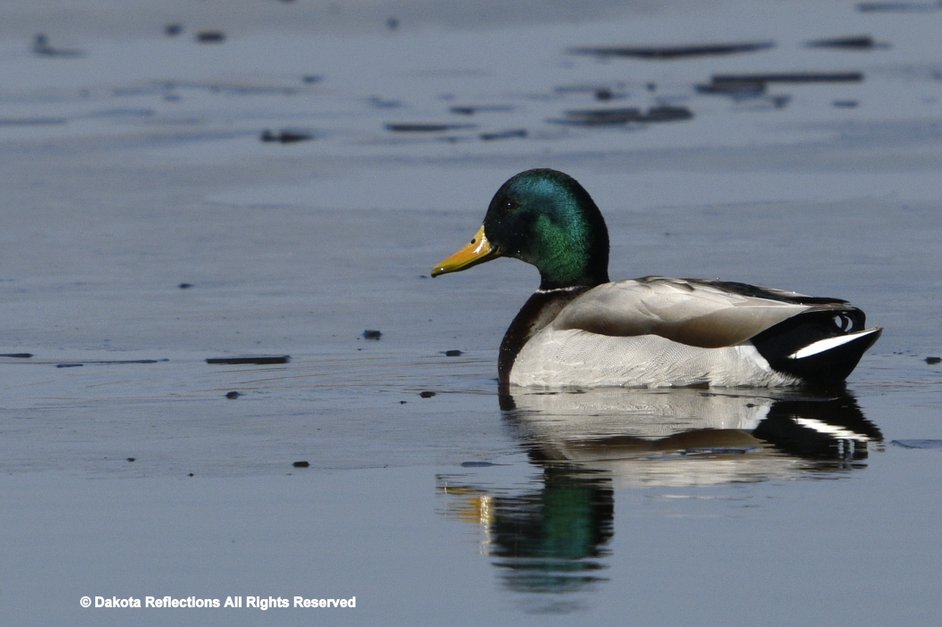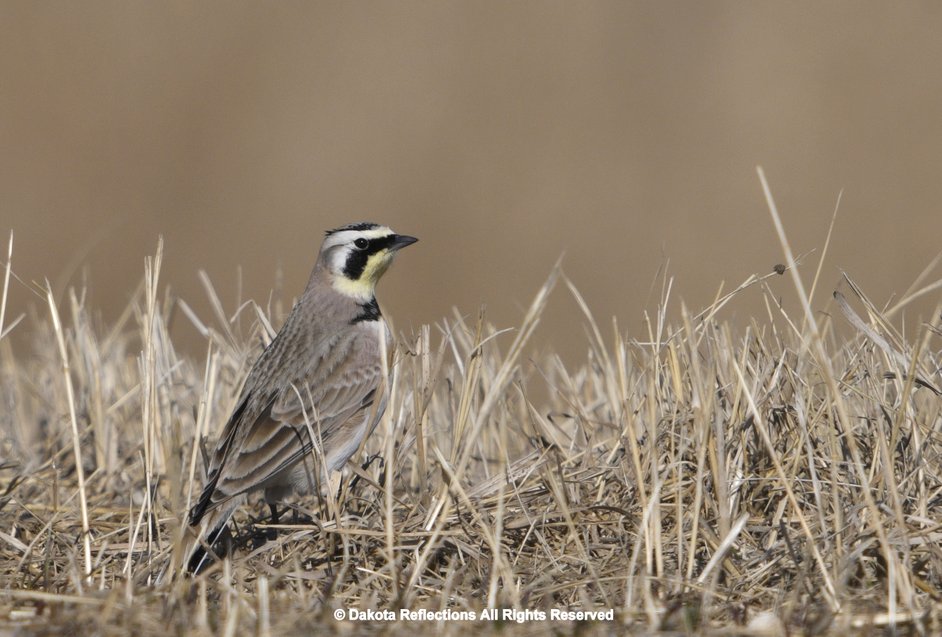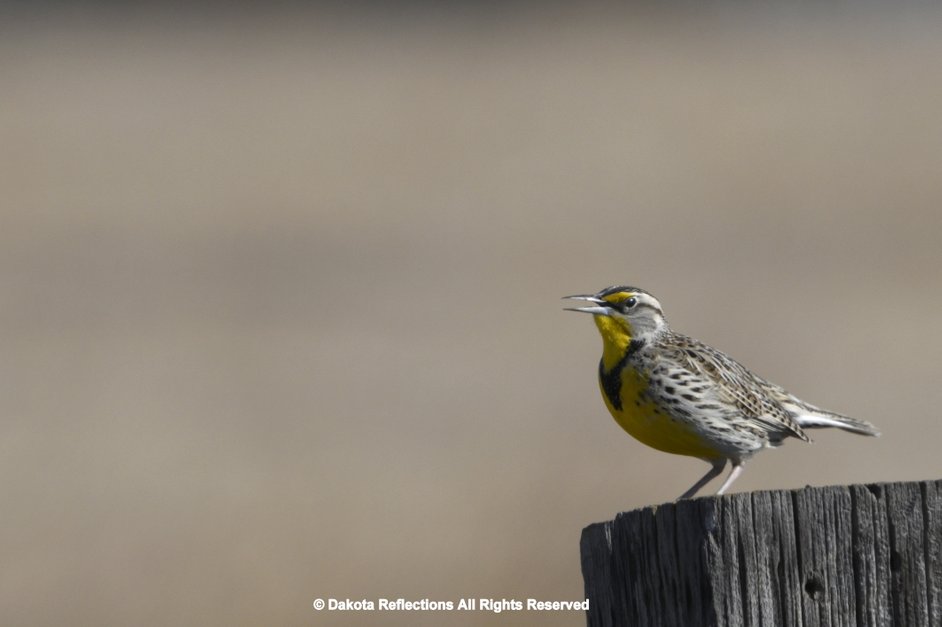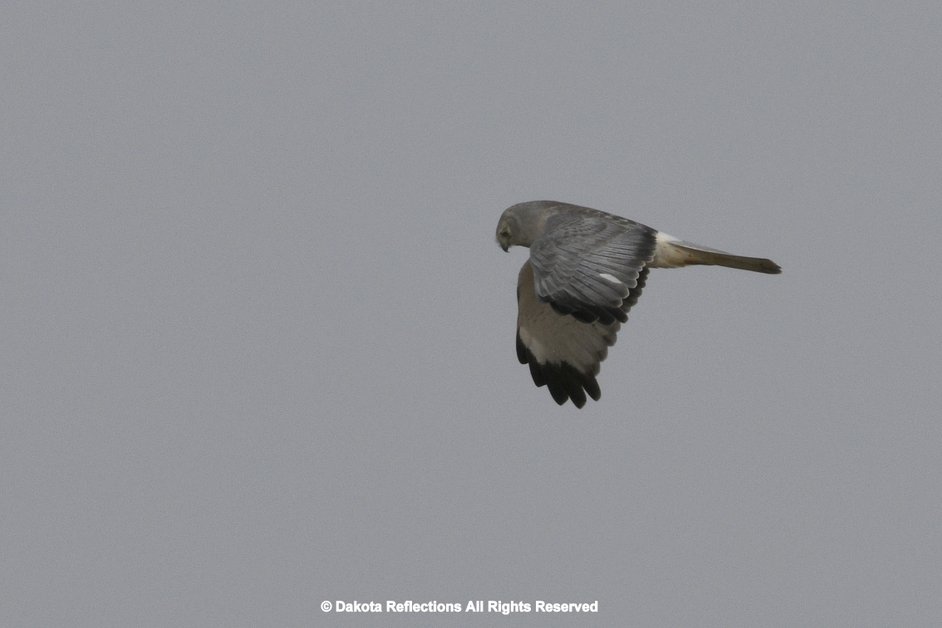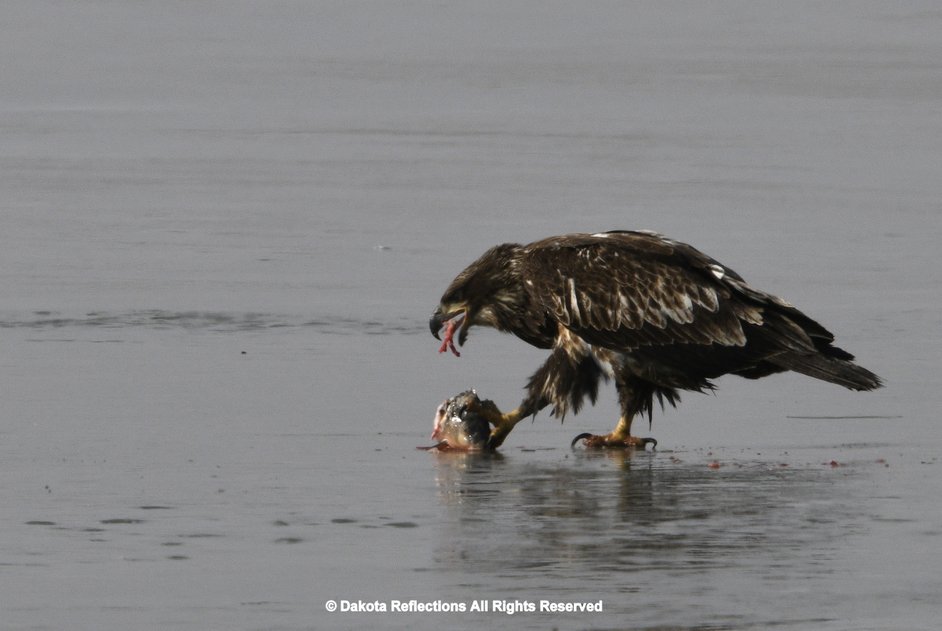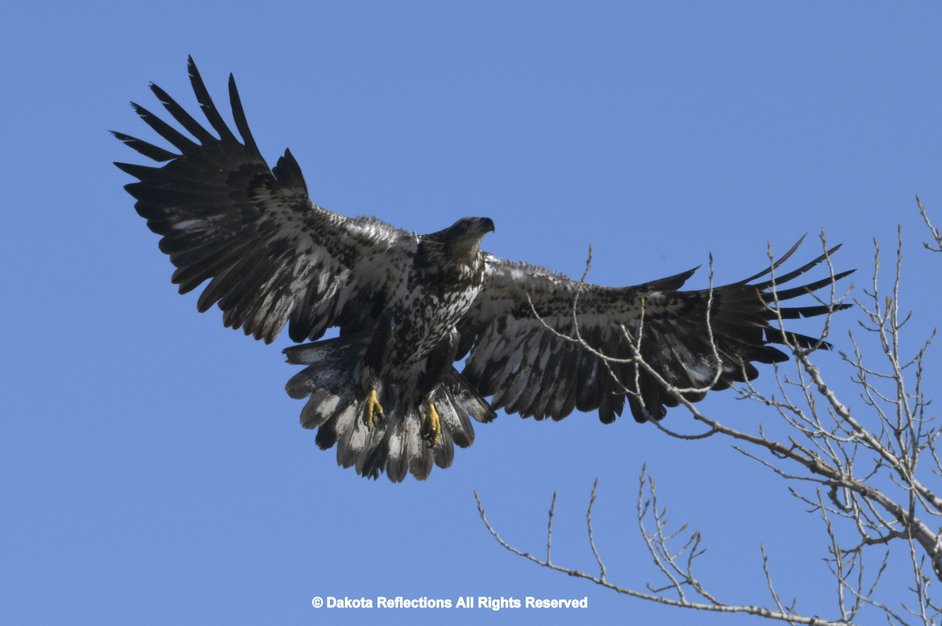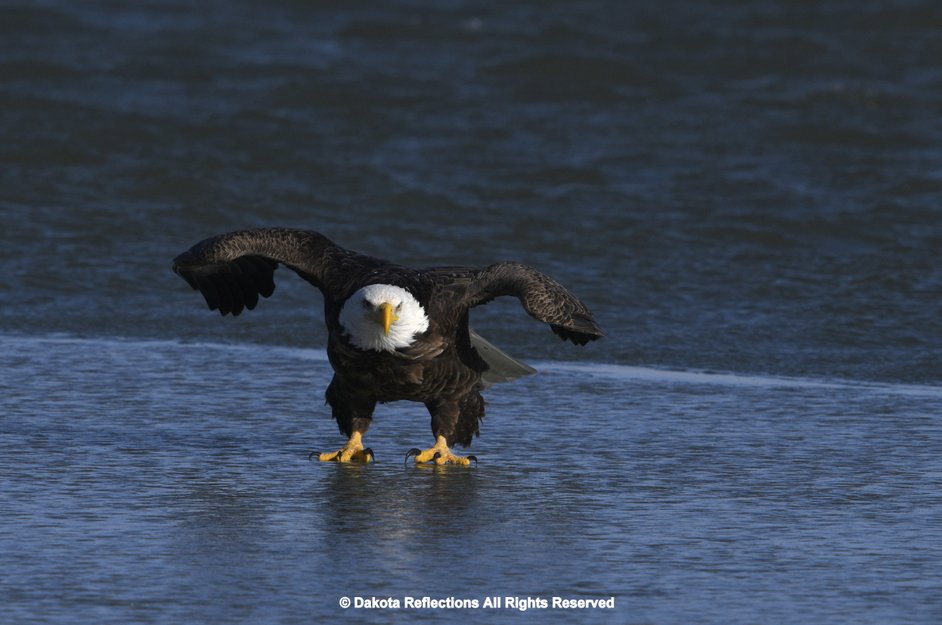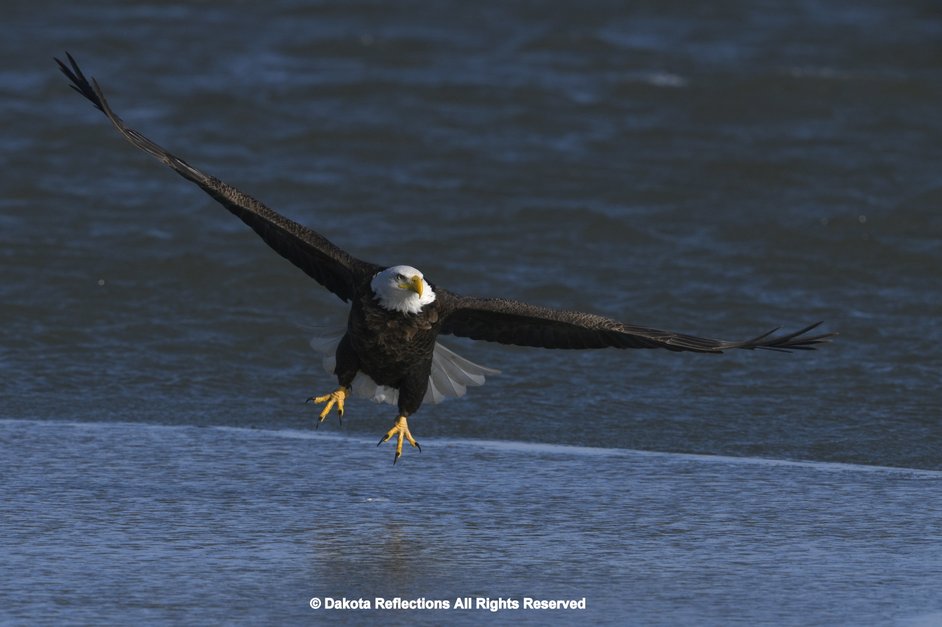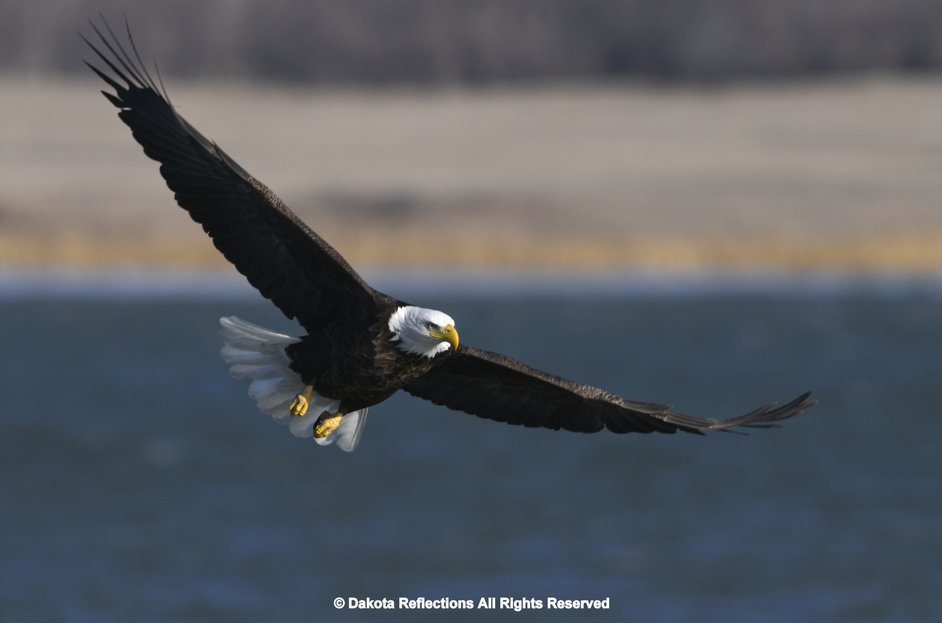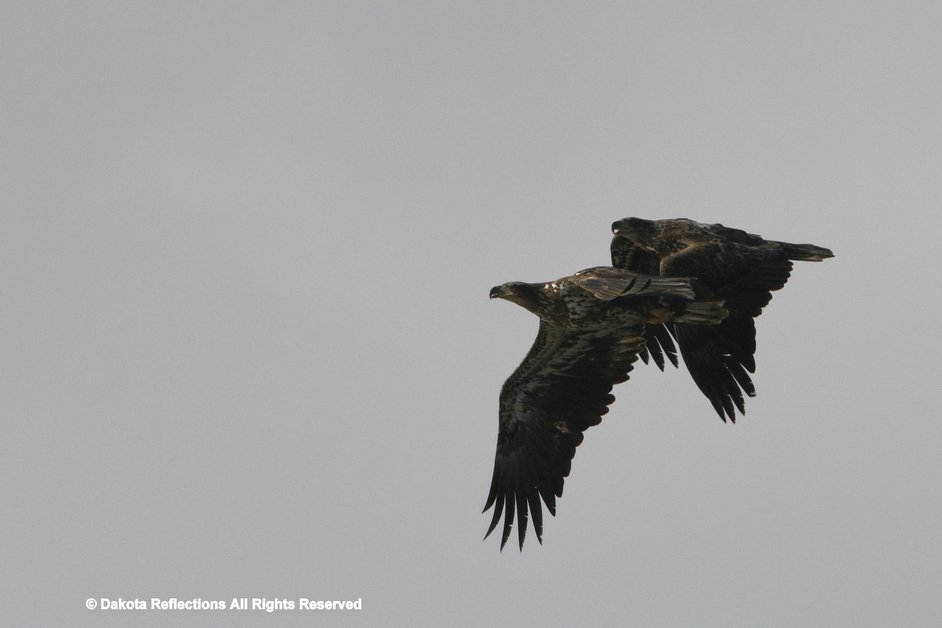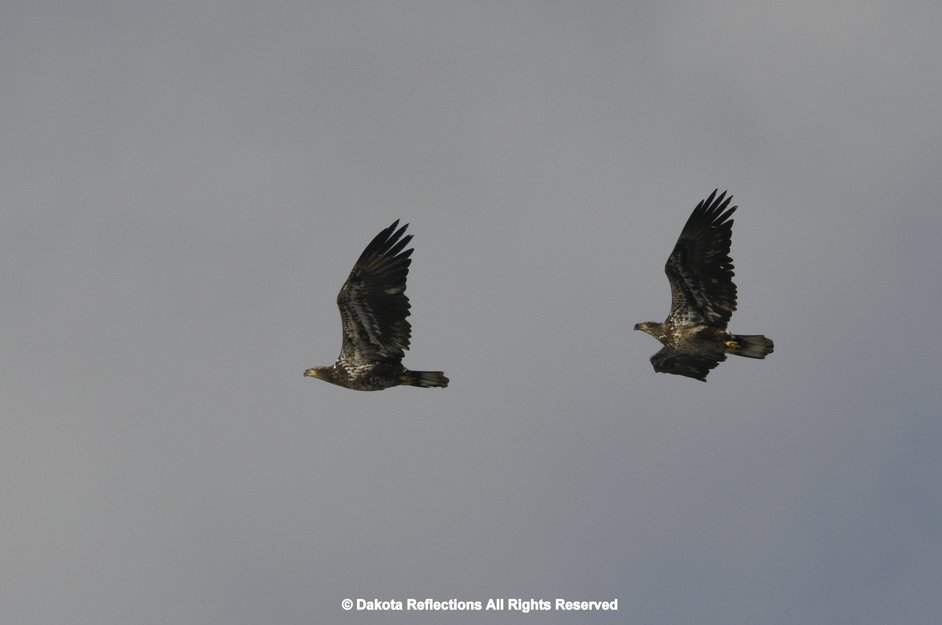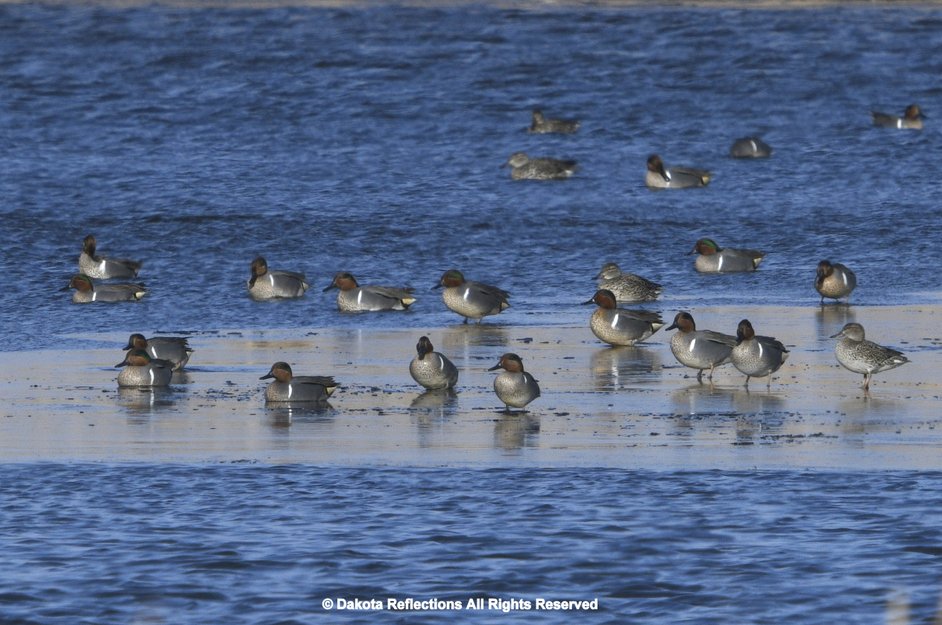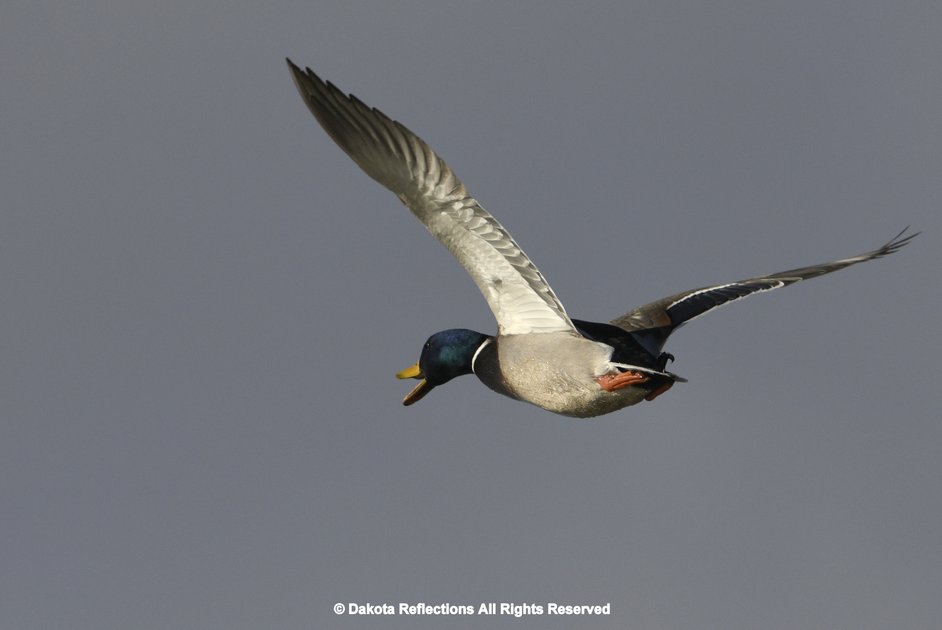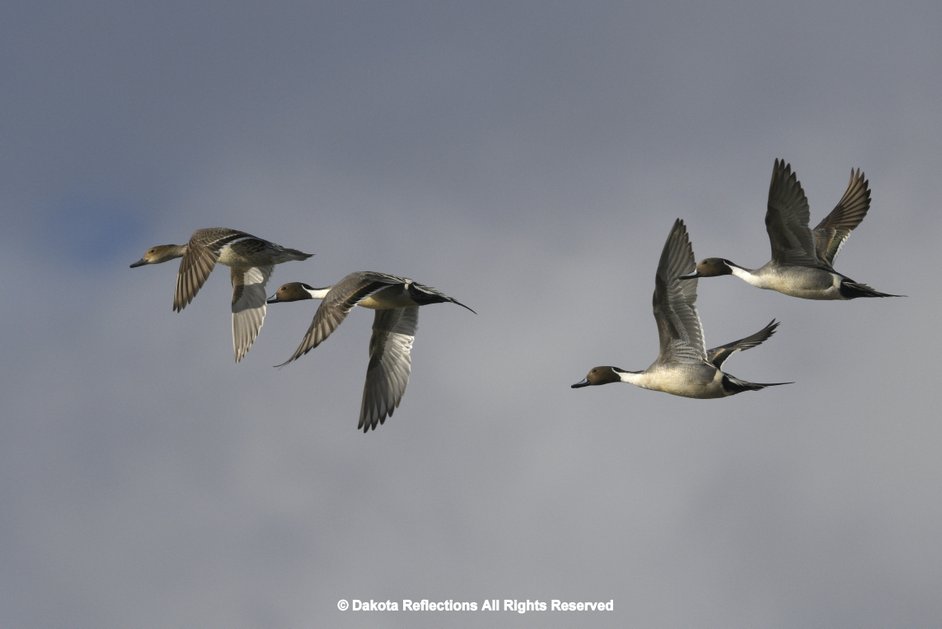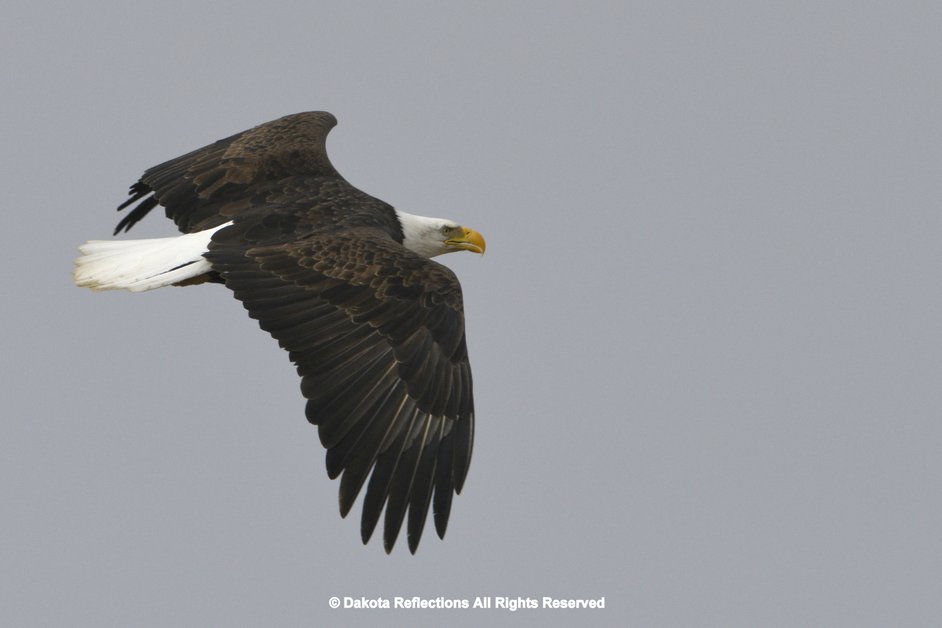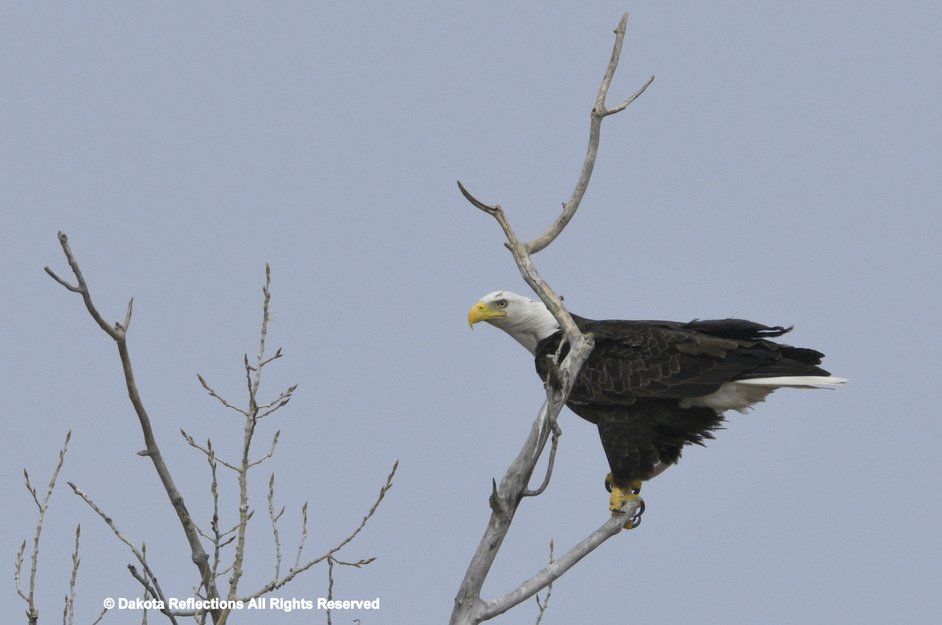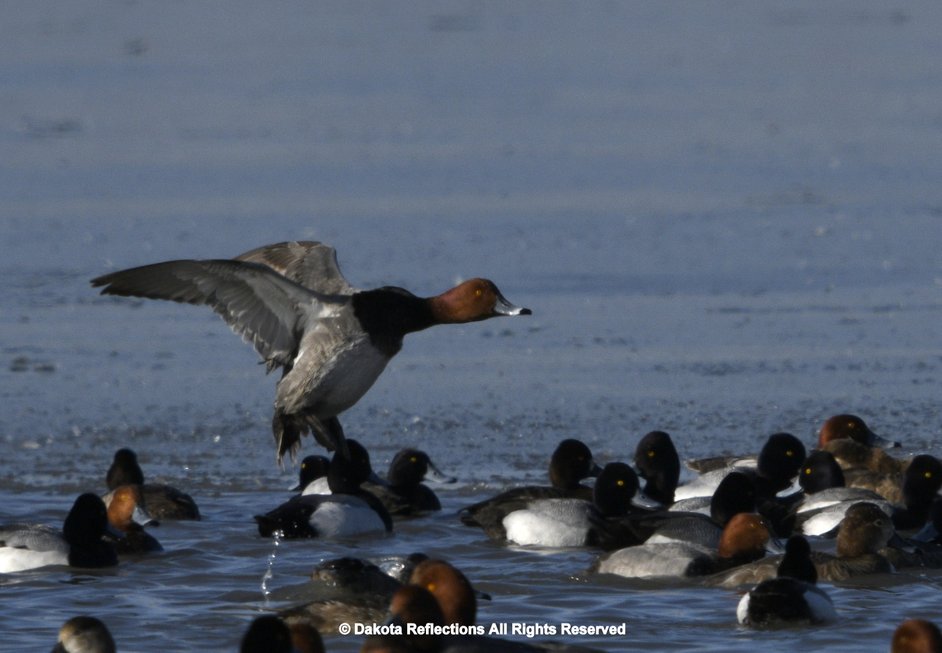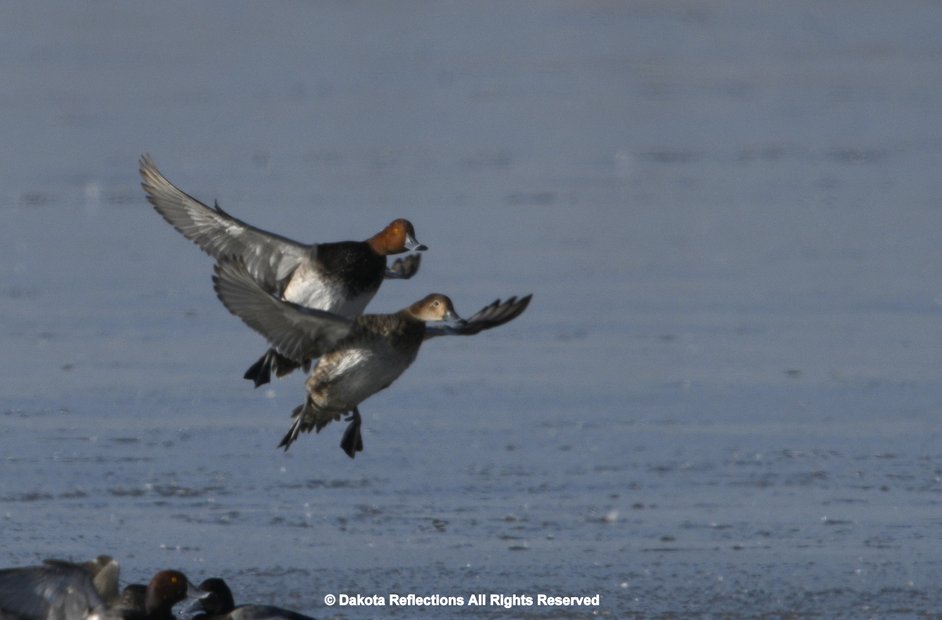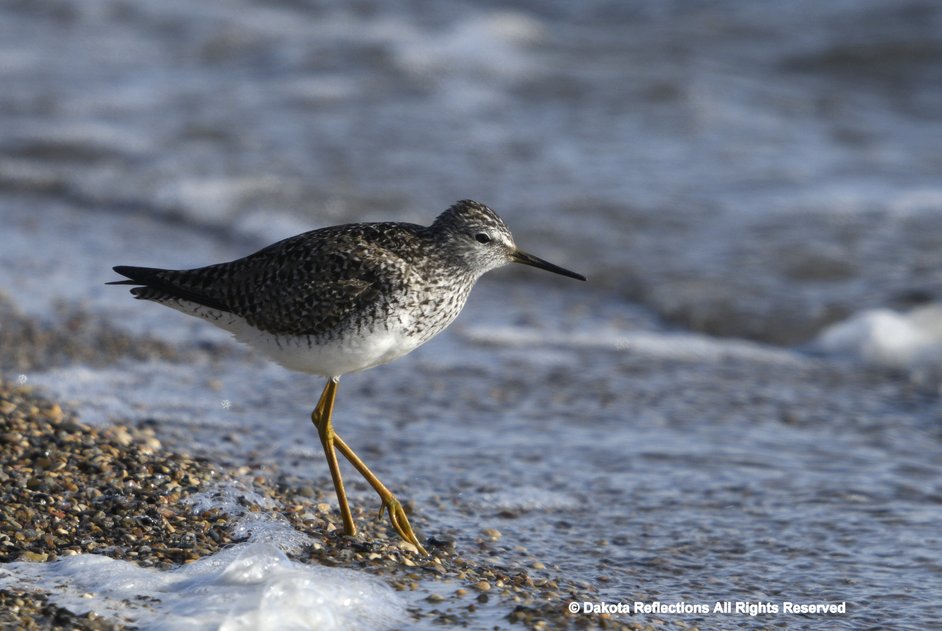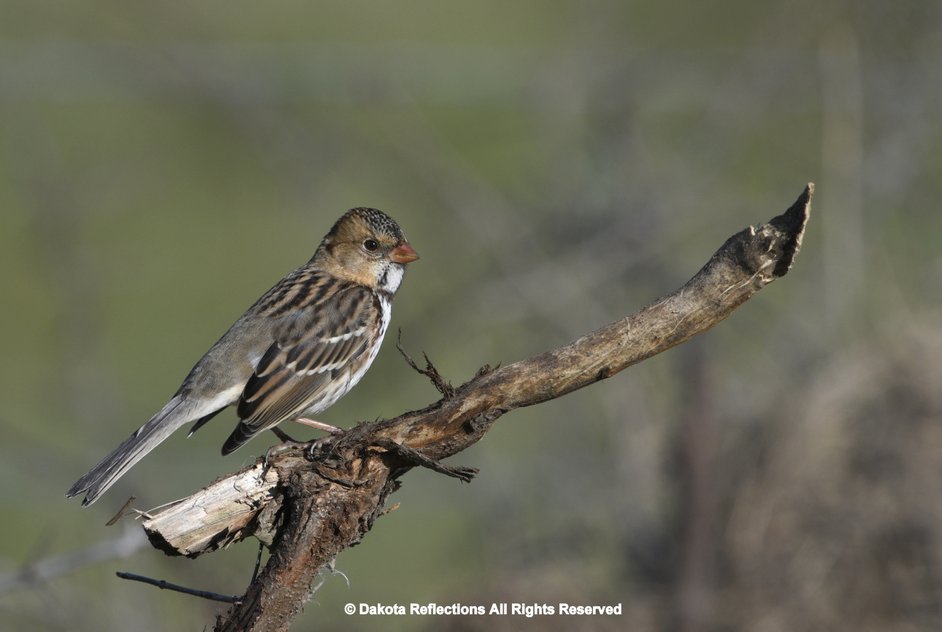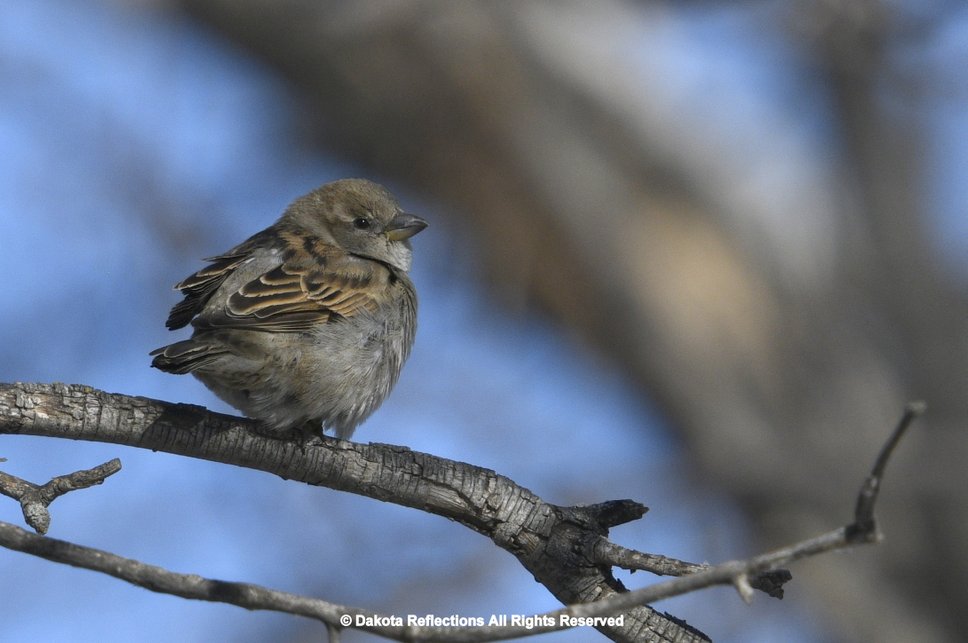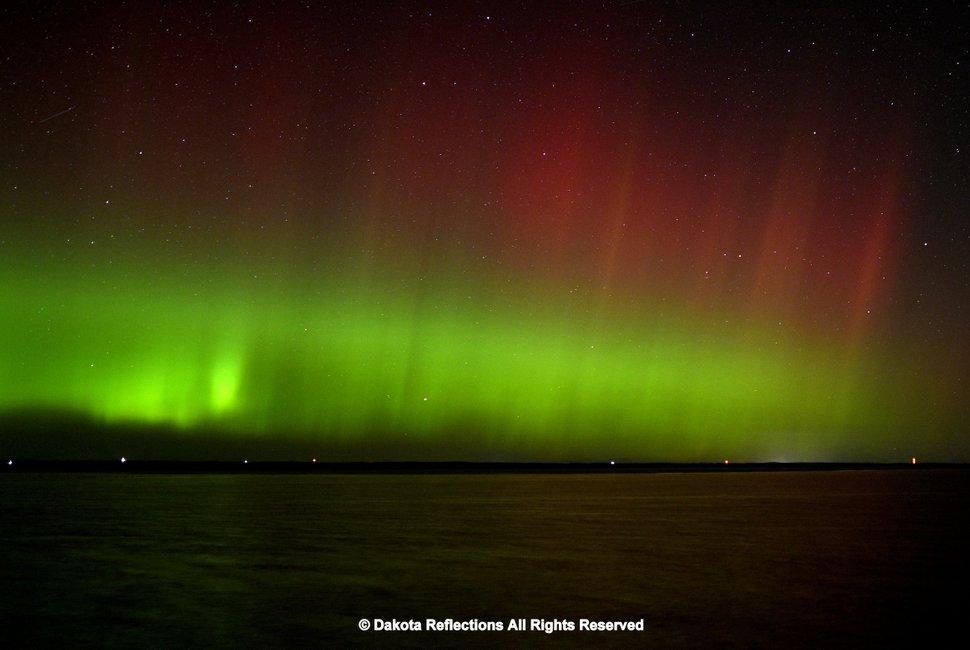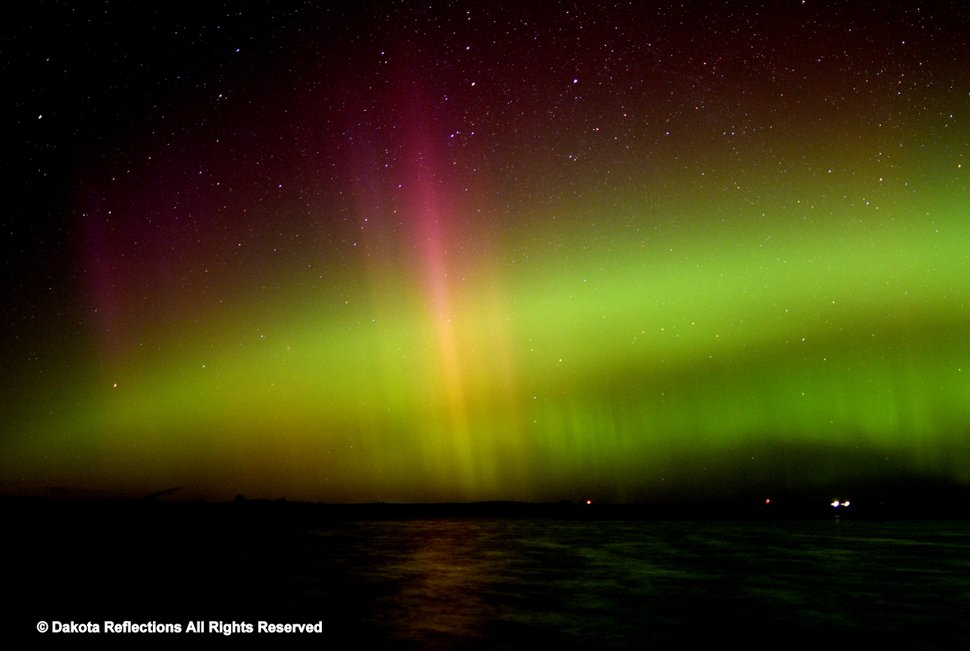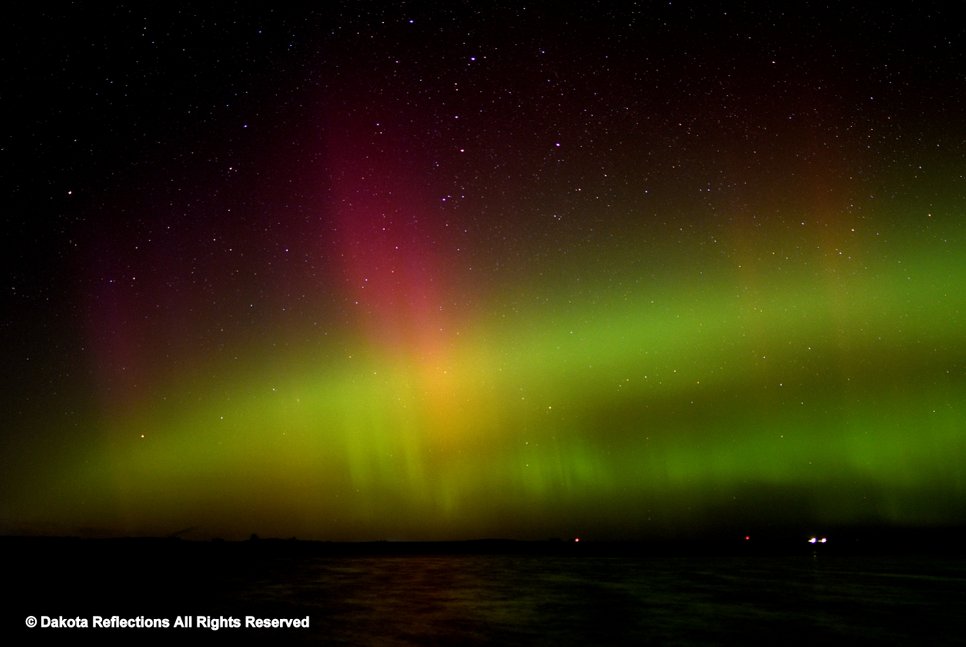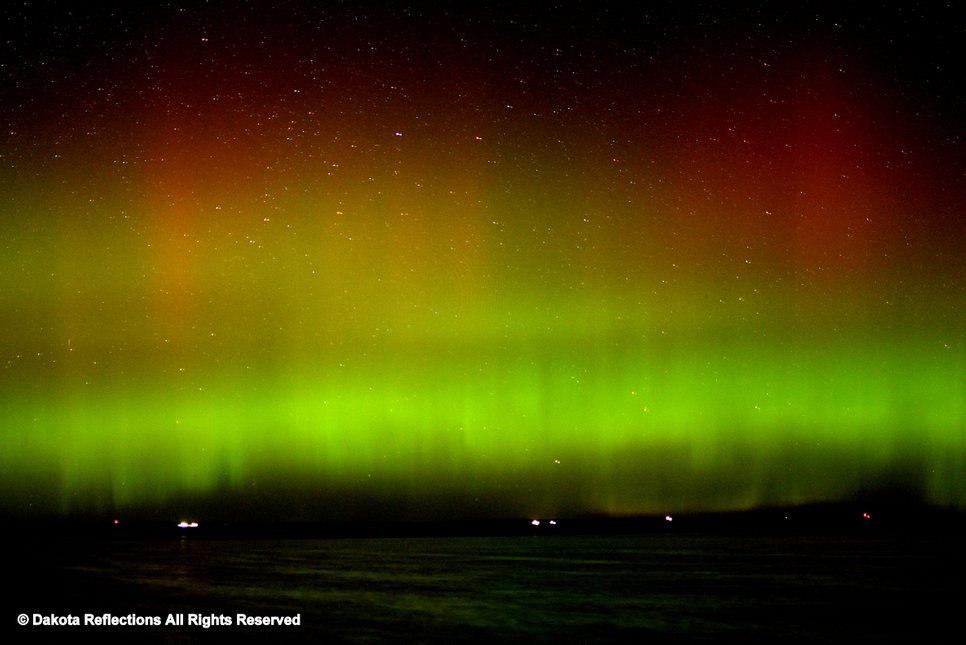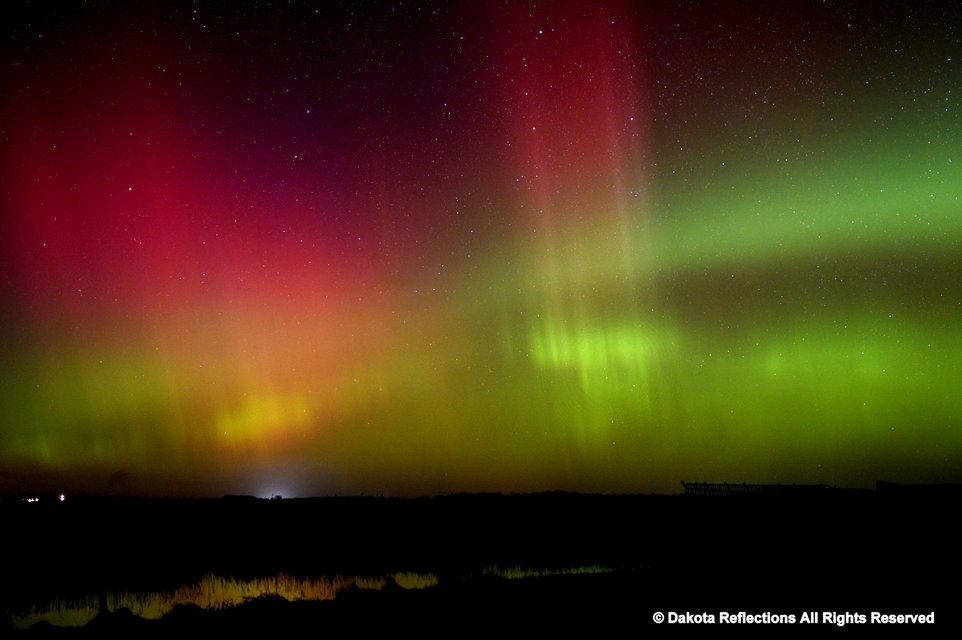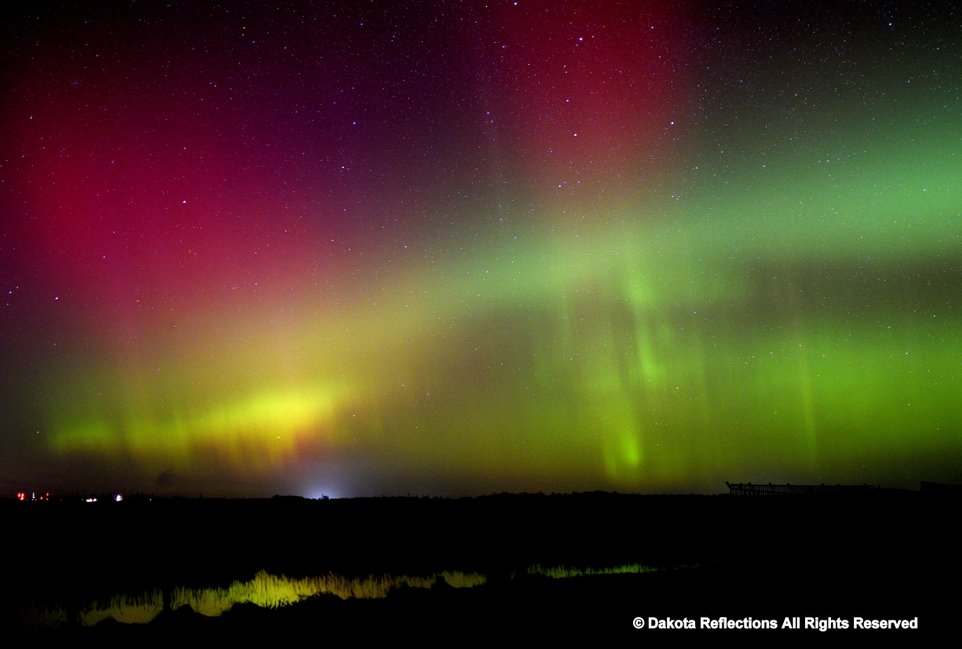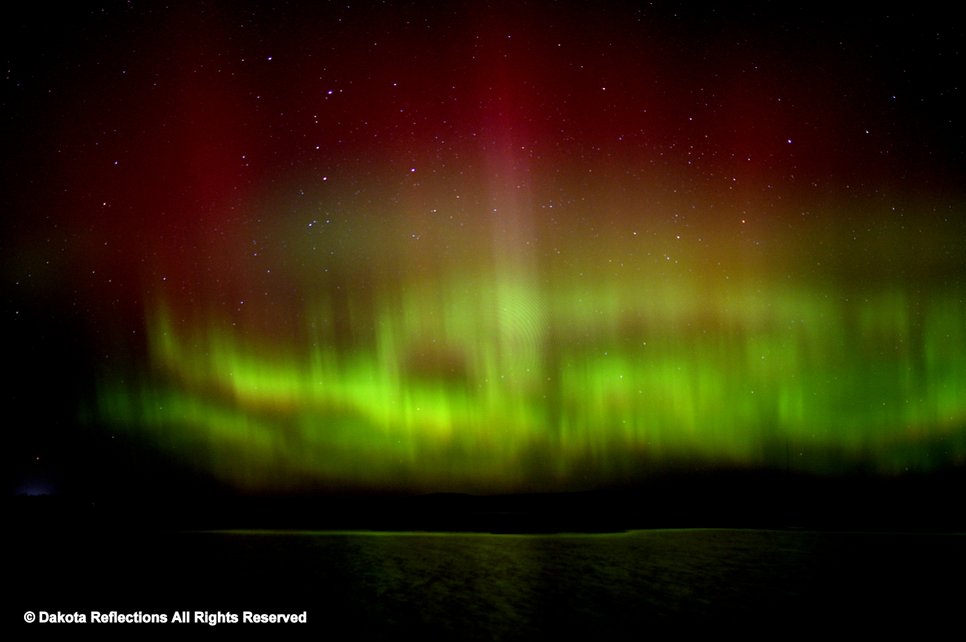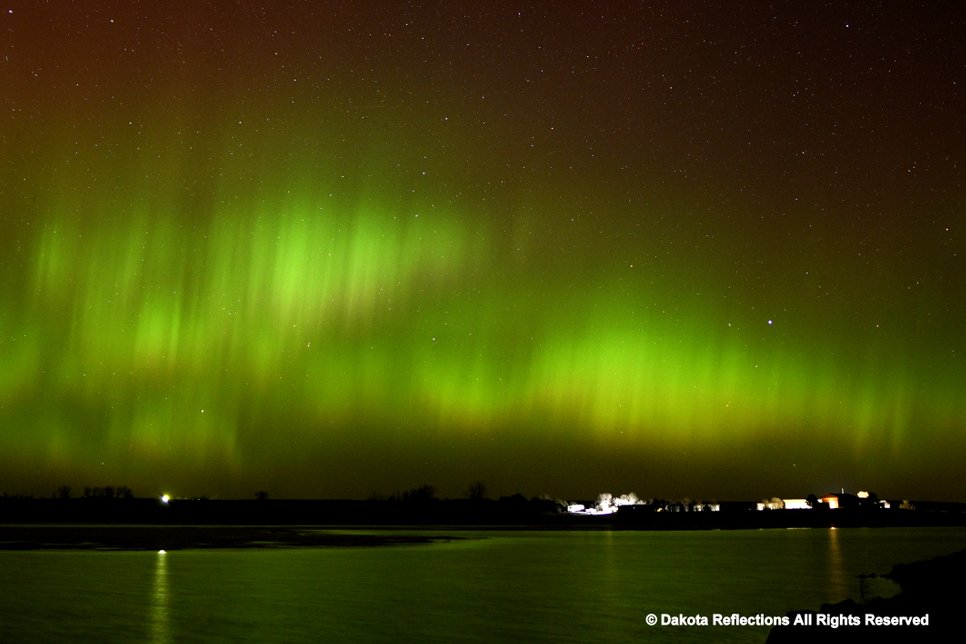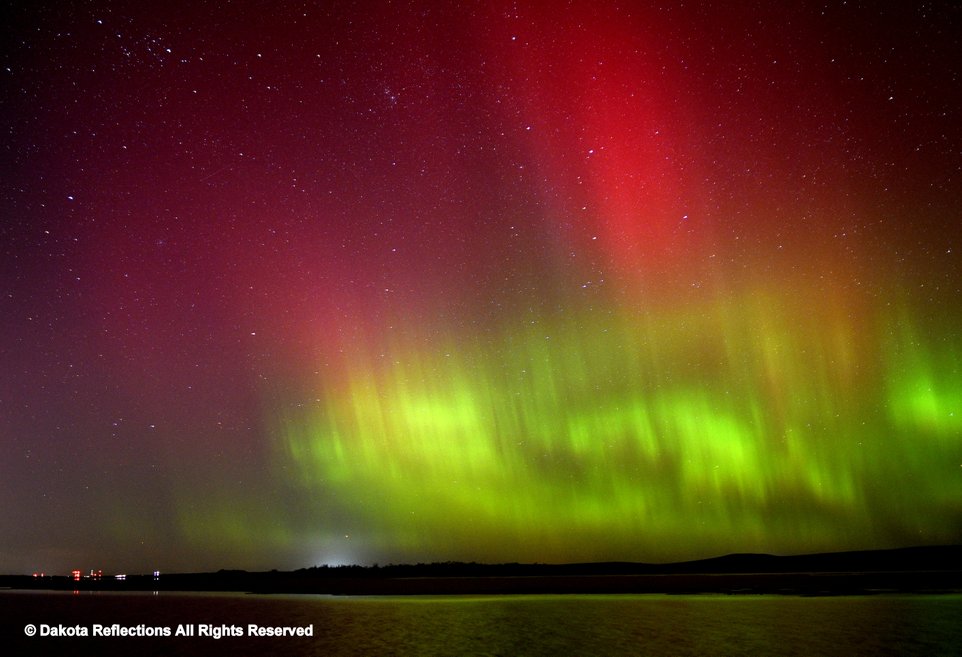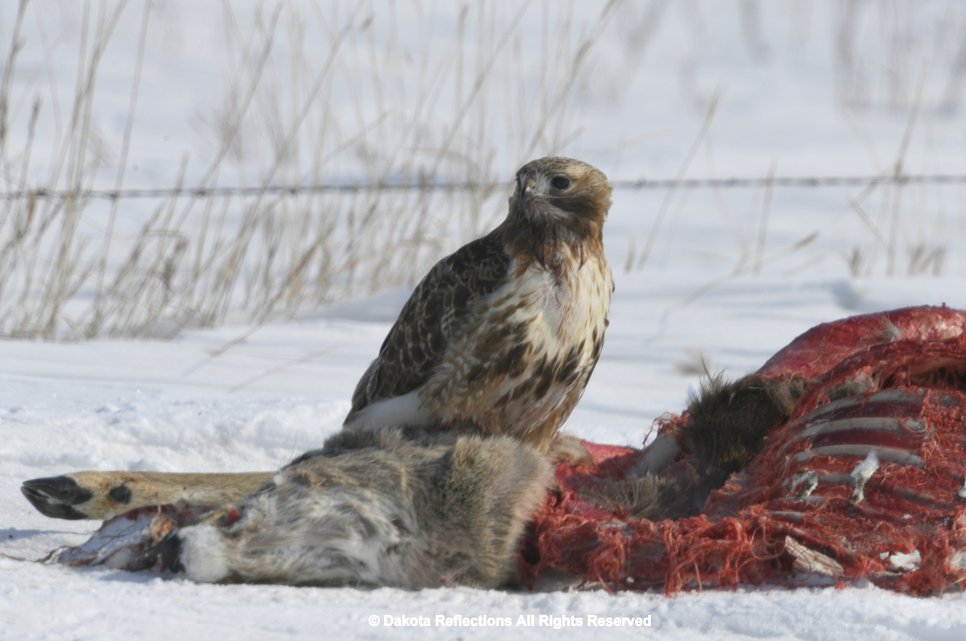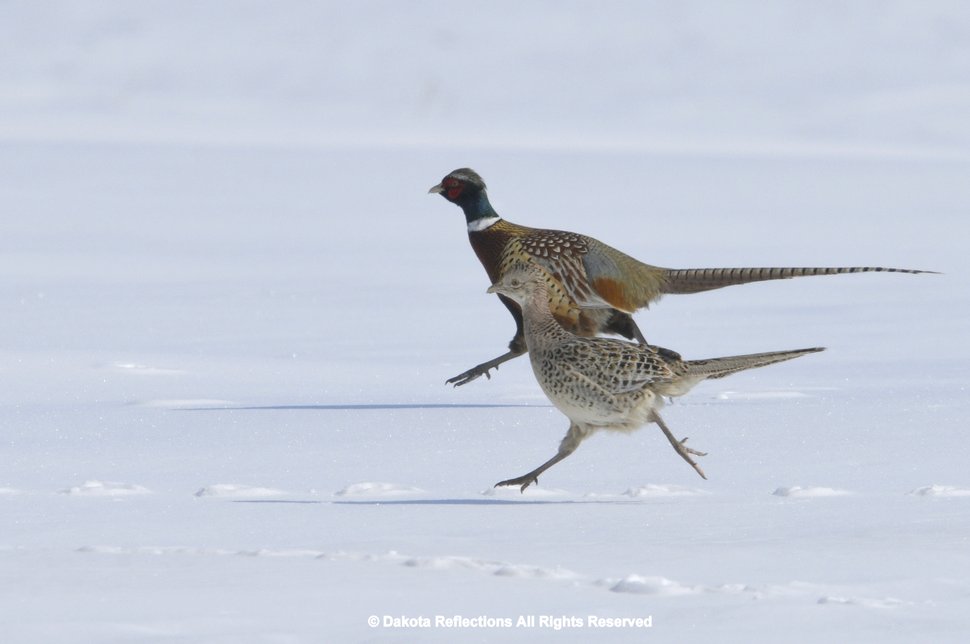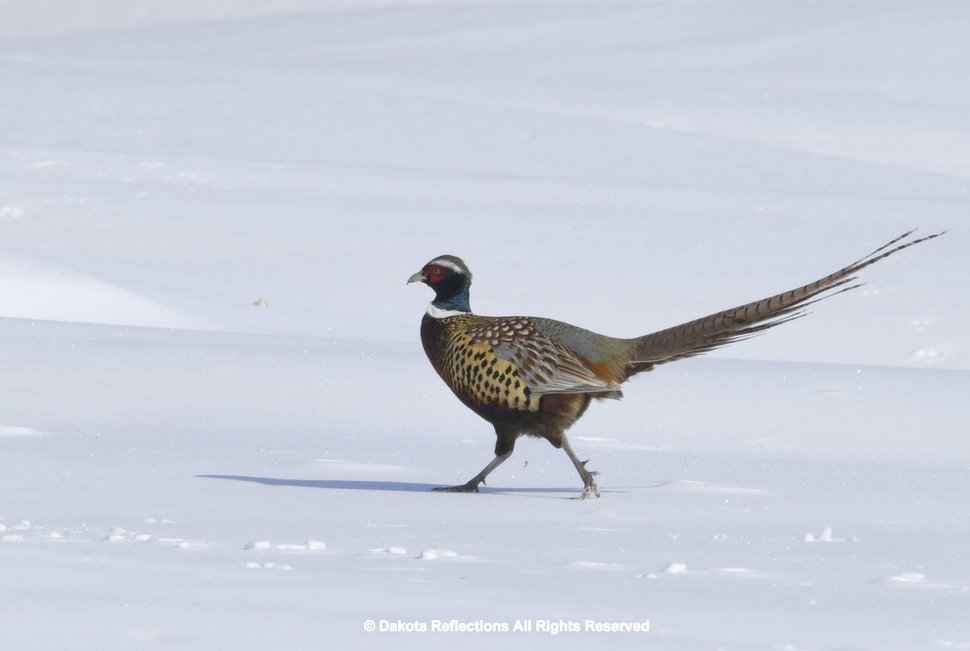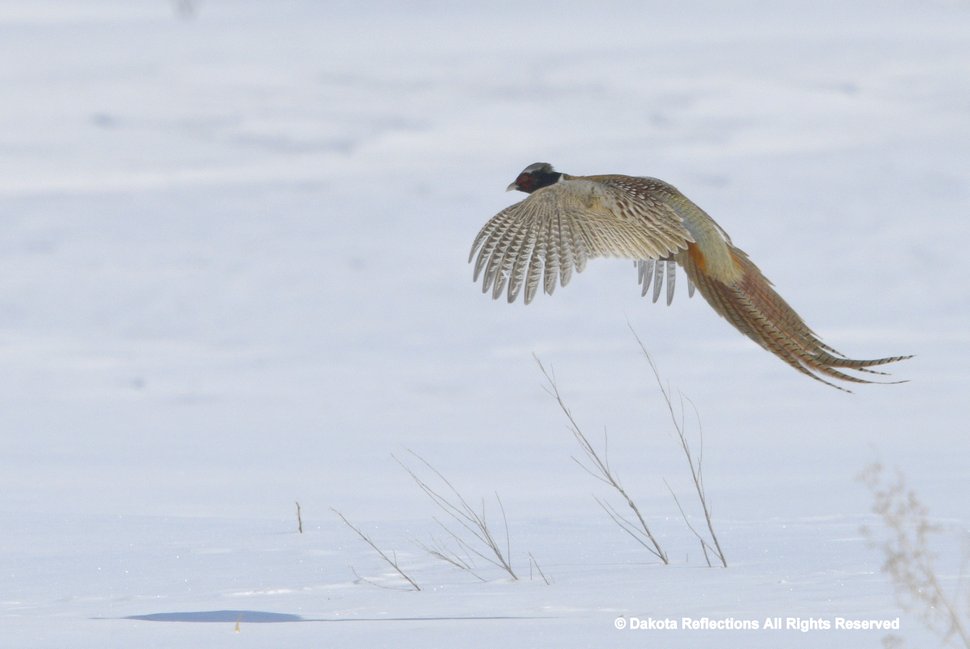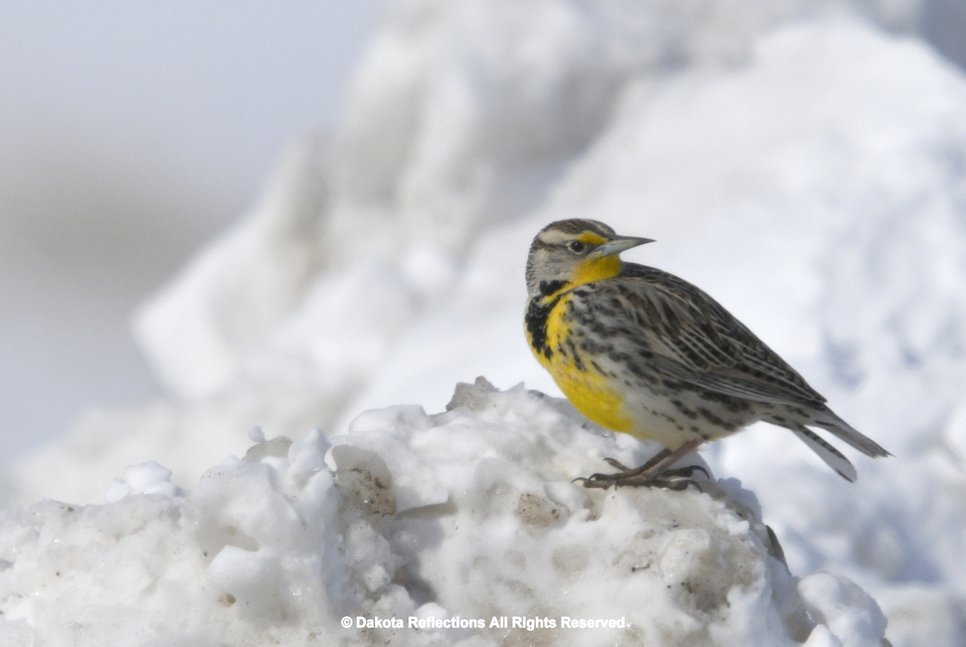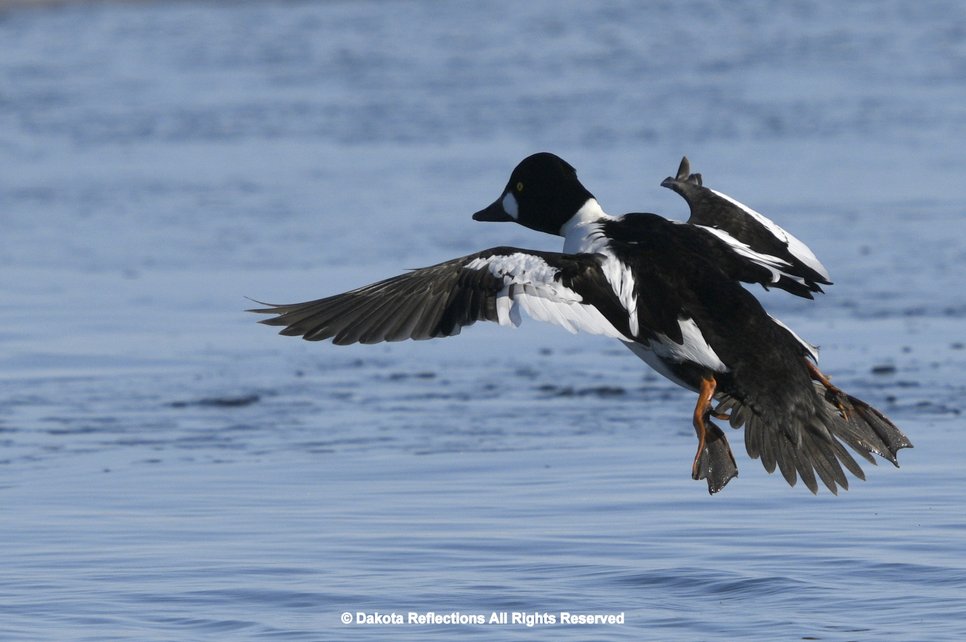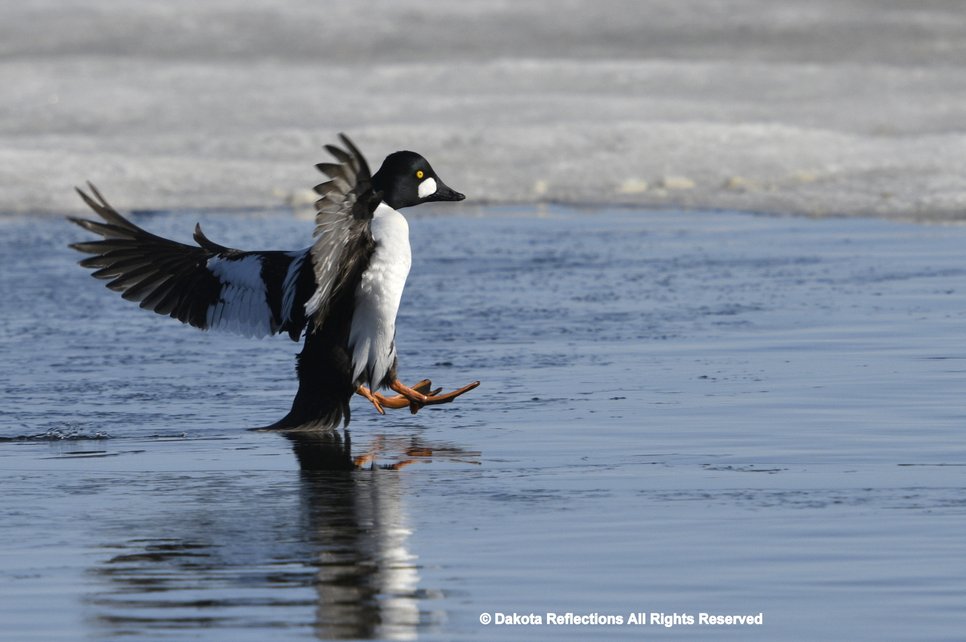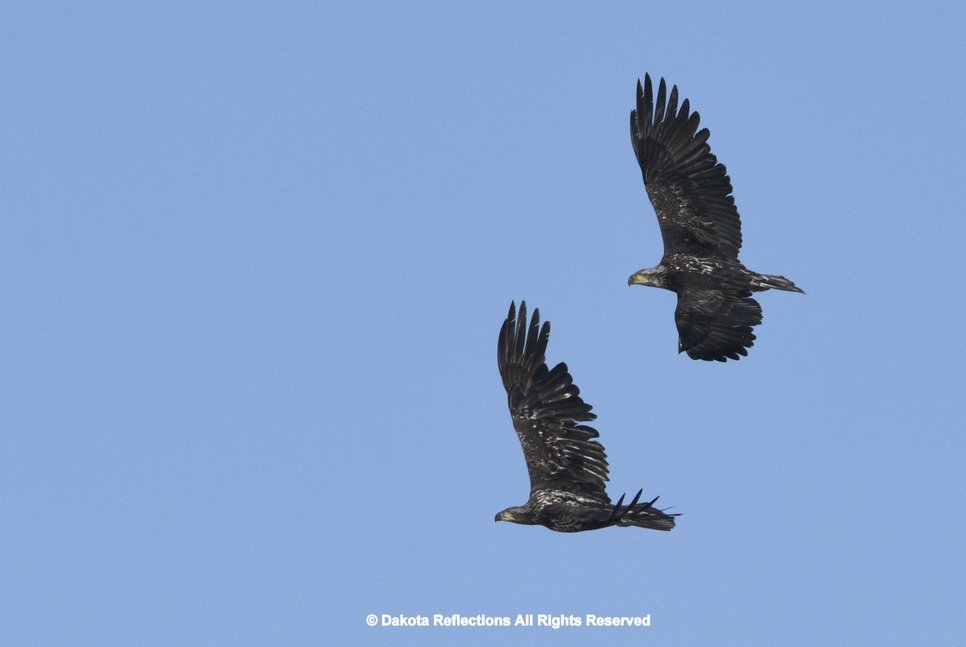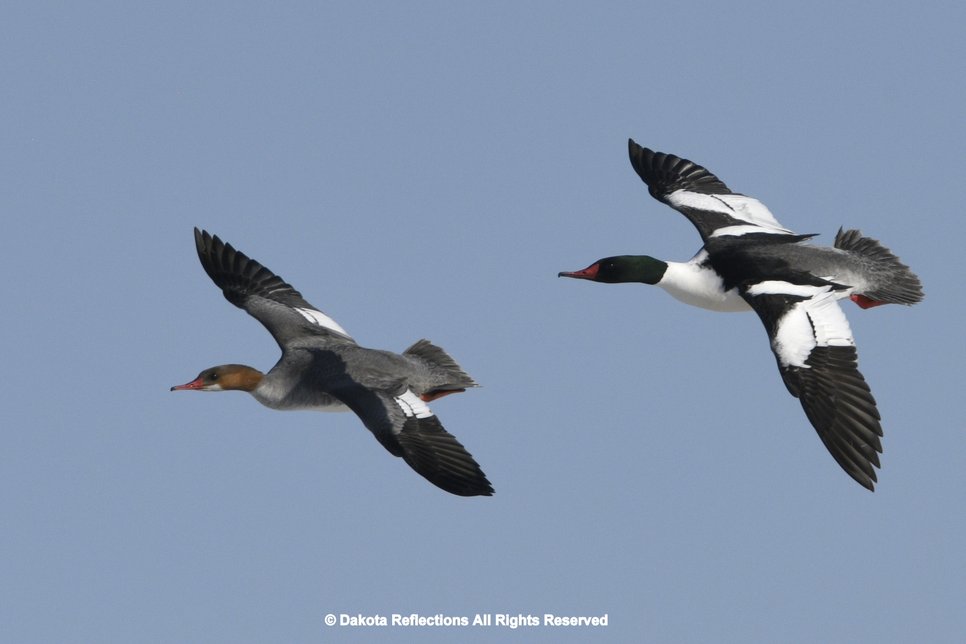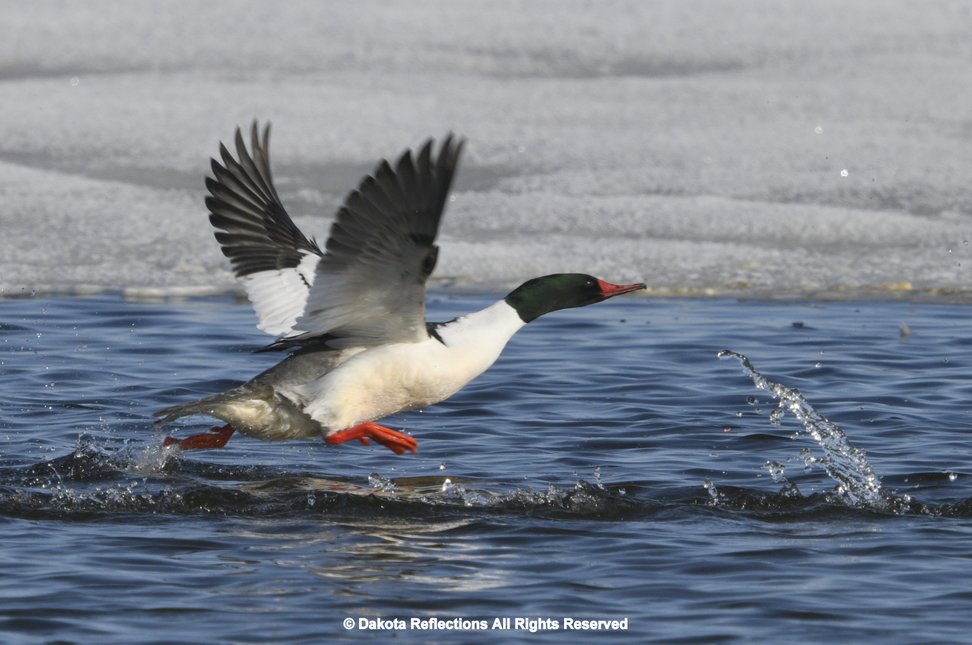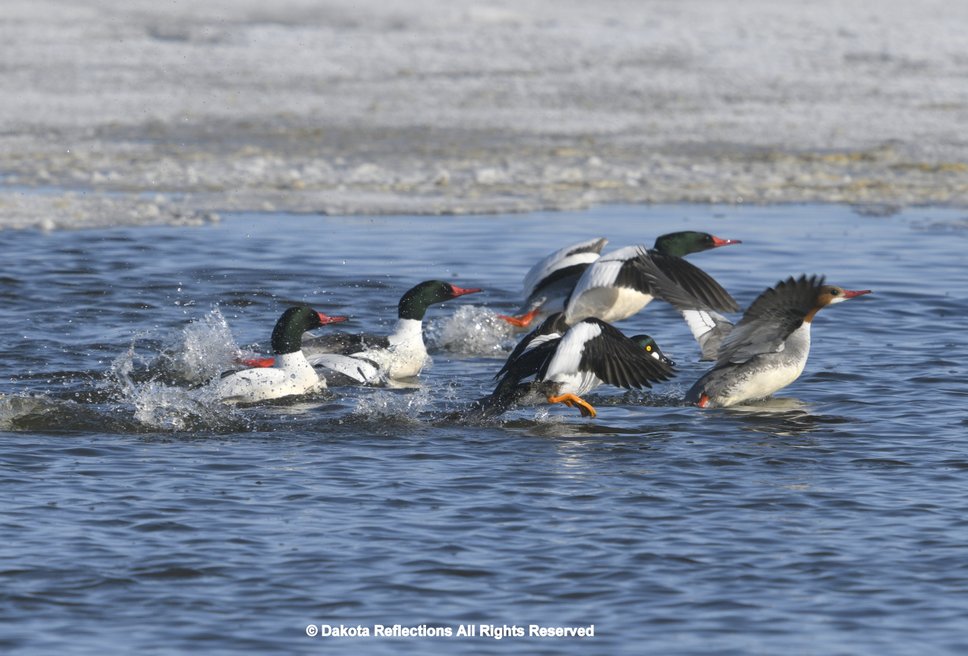Dakota Reflections
Long Lake National Wildlife Refuge, located in south-central North Dakota, was established in 1932 as a migratory bird refuge by President Herbert Hoover. The 22,300-acre (90 km2) refuge consists of a 15,000-acre (61 km2) saline basin that is 18 miles (29 km) long and is appropriately named "Long Lake." The lake is 2 miles wide in some locations. Long Lake is relatively shallow; it is normally 3–4 feet (0.91–1.22 m) deep. During extended wet periods, Long Lake reaches depths up to 7 feet (2.1 m). The dikes and building were constructed in 1940 by the Works Progress Administration (WPA) by residents of Burleigh County. Prior to the dike's construction, avian botulism killed hundreds of thousands of birds. The resulting deeper water levels reduced the frequency of avian botulism.
The shallow depths and lengths of meandering shoreline provide vast expanses of habitat that attract migrating and nesting species of waterfowl, shorebirds, and rare migrant birds. In recognition of the Refuge's significance in the ongoing effort to conserve wild birds and their habitat, Long Lake was designated as a "Globally Important Bird Area" in 2001. Also, due to the special importance of Long Lake National Wildlife Refuge to migrating shorebirds, the Refuge was recently recognized as a "Western Hemisphere Shorebird Reserve Network" site.
Long Lake National Wildlife Refuge, U.S. Fish and Wildlife Service, July 2005
https://en.wikipedia.org/wiki/Long_Lake_National_Wildlife_Refuge
Long Lake National Wildlife Refuge
Whooping Crane
Long Lake National Wildlife Refuge
October 2018
The whooping crane is the tallest North American bird, is an endangered crane species named for its whooping sound. Along with the sandhill crane, it is one of only two crane species found in North America. The whooping crane's lifespan is estimated to be 22 to 24 years in the wild. After being pushed to the brink of extinction by unregulated hunting and loss of habitat to just 21 wild and two captive whooping cranes by 1941, conservation efforts have led to a limited recovery. The total number of cranes in the surviving migratory population, plus three reintroduced flocks and in captivity, now exceeds 800 birds.
https://en.wikipedia.org/wiki/Whooping_crane
Whooping Crane traveling with Sandhill Cranes
Long Lake National Wildlife Refuge
October 2018
Approximately 500 whooping cranes travel north from Aransas National Wildlife Refuge in Texas to Wood Buffalo National Park where they nest in the summer before returning to Aransas. North Dakota is part of their flyway and occasionally they will stop for several days on their migration.
Whooping cranes are nearly 5 feet tall with a wing span of 7.5 feet, males average 16 pounds while females average 14 pounds. Sandhill cranes are 4 feet tall and their wing span can be over 7 feet, males average 10 pounds and females 9 pounds.
Bald Eagle during Spring Migration
March 16, 2016 Long Lake National Wildlife Refuge
Long Lake National Wildlife Refuge is an excellent location to see bald eagles during their spring migration north. The bald eagles will often stay several weeks waiting for the ice to melt so they can feed on carp who did not survive the winter.
Bald Eagle during Fall Migration
November 17, 2017 Long Lake National Wildlife Refuge
Long Lake National Wildlife Refugecan be an area to see bald eagles during their fall migration south although the numbers are not as concentrated as in the spring. Some bald eagles may winter over in North Dakota if the winter is milder and the nearby Missouri River does not freeze over .
Bald Eagle during Spring Migration
March 14, 2016 Long Lake National Wildlife Refuge
Blue skies at Long Lake National Wildlife Refuge provides excellent opportunites to photograph bald eagles during their spring migration north. They are 3 feet tall and their wingspan is up to 7.5 feet. Females average 12 pounds while males average 9 pounds.
Northern Shovelers during Spring Migration
April 26, 2018 Long Lake National Wildlife Refuge
Long Lake National Wildlife Refuge is a wonderful location to see migrating waterfowl as they head north during their spring migration. Northern shovelers are 19 in long and have a wingspan of 30 in with a weight of 600 grams or 1.3 lb.
Northern Shovelers during Spring Migration
April 26, 2018 Long Lake National Wildlife Refuge
Northern shovelers are named after the shape of their bill. They feed by using their bill to strain their food (aquatic invertebrates) from the water.
Common Mergansers during Spring Migration
April 23, 2018 Long Lake National Wildlife Refuge
Common mergansers are 23–28 inch long with a 31–38 inch wingspan and a weight of 2.0–4.6 lbs; males average slightly larger than females.
Common Mergansers during Spring Migration
March 19, 2017 Long Lake National Wildlife Refuge
This male was not having a good day. The common merganser is generally monogamous and I am not sure what the discussion was about.
Common Merganser during Spring Migration
March 19, 2017 Long Lake National Wildlife Refuge
This female was photographed in flight. Common megansers are divers and feed on fish. The females nest in cavities and lay between 6 and 17 creamy-white eggs, which are incubated by the female for 28 to 35 days.
Common Goldeneyes during Spring Migration
March 19, 2017 Long Lake National Wildlife Refuge
These males were photographed in flight. Common goldeneyes are divers and feed on crustaceans, aquatic insects and molluscs. The females nest in cavities and lay between 4 and eggs, which are incubated by the female for 27 to 33 days.
Horned Grebe during Spring Migration
May 22, 2018 Long Lake National Wildlife Refuge
This bird is primarily found in Canada from south-central Alaska to northwestern Ontario. The horned grebe nests from the Yukon to northwestern states, from Washington to Minnesota. Its wintering range is primarily coastal from southern Alaska down to the northern Gulf of California.
Greater Scaup during Spring Migration
April 28, 2018 Long Lake National Wildlife Refuge
This bird is a mid-sized diving duck, larger than the closely related lesser scaup. It spends the summer months breeding in Alaska and northern Canada. During the winter, it migrates south to the coasts of North America.
Canada Goose during Spring Migration
April 4, 2018 Long Lake National Wildlife Refuge
The giant Canada goose subspecies was believed to be extinct in the 1950s until, in 1962, a small flock was discovered wintering in Rochester, Minnesota, by Harold Hanson of the Illinois Natural History Survey. In 1964, the Northern Prairie Wildlife Research Center was built near Jamestown, North Dakota. Its first director, Harvey K. Nelson, talked Forrest Lee into leaving Minnesota to head the center's Canada goose production and restoration program. Forrest soon had 64 pens with 64 breeding pairs of screened, high-quality birds. The project involved private, state, and federal resources and relied on the expertise and cooperation of many individuals. By the end of 1981, more than 6,000 giant Canada geese had been released at 83 sites in 26 counties in North Dakota.
https://en.wikipedia.org/wiki/Canada_goose
Franklin's Gull during Spring Migration
May 3, 2018 Long Lake National Wildlife Refuge
This small gull breeds in central provinces of Canada and adjacent states of the northern United States. It is a migratory bird, wintering in Argentina, the Caribbean, Chile, and Peru.
Great Blue Heron during Fall Migration
October 6, 2016 Long Lake National Wildlife Refuge
The great blue heron is the largest North American heron with a wingspan up to 7.5 feeet, a height of up to 4.5 feet and a weight of 4 to almost 8 pounds.
Mallard during Spring Migration
April 23, 2018 Long Lake National Wildlife Refuge
The mallard is commonly found in North Dakota from spring to fall.
Ring-billed Gull during Fall Migration
October 6, 2016 Long Lake National Wildlife Refuge
The ring-billed gulls is a medium sized gull that breeds in Canada and the northern United States. They are migratory and most move south to the Gulf of Mexico and the Atlantic and Pacific coasts of North America, and the Great Lakes.
Snow Geese during Spring Migration
March 24, 2017 Long Lake National Wildlife Refuge
Snow geese breed north of the timberline in Canada and Alaska and spens winters in southern United States and Mexico. They were heading to the Arctic tundra.
White Pelican
June 21, 2018 Long Lake National Wildlife Refuge
The American white pelican rivals the trumpeter swan, with a similar overall length, as the longest bird native to North America. Both very large and plump, it has an overall length of about 50–70 inches, courtesy of the huge beak which measures 11.3–15.2 inches in males and 10.3–14.2 inches in females. It has a wingspan of about 95–120 in (10 feet) The species also has the second largest average wingspan of any North American bird, after the California condor. This large wingspan allows the bird to easily use soaring flight for migration. Body weight can range between 7.7 and 30 lb, although typically these birds average between 11 and 20 lb.
https://en.wikipedia.org/wiki/American_white_pelican
White-tailed Deer
March 27, 2018 Long Lake National Wildlife Refuge
White-tailed deer can run over 30 miles per hour, jump nearly 9 feet high and 33 feet long.
Snowy Owl
March 1, 2016 Long Lake National Wildlife Refuge
Snowy owls have yellow eyes and black beaks. They are 20–28 inches long, with a wingspan of 4 to hearly 5 feet and can weigh anywhere from 3.5 to 6.6 lbs. The average lifespan in the wild is ten years. It is the heaviest owl in North America.
Snowy Owl
March 1, 2016 Long Lake National Wildlife Refuge
Snowy owls nest in the Arctic tundra north of latitude 60° north. Some winter south through Canada and northern states.
Snowy Owl
March 1, 2016 Long Lake National Wildlife Refuge
Snowy owls eat primarily lemmings and other small rodents for food during the breeding season, They feed on a wide variety of small mammals such as meadow voles and deer mice, but will take advantage of larger prey, including hares, muskrats, marmots, squirrels, rabbits, raccoons, prairie dogs, rats, moles and entrapped furbearers. Birds preyed upon include ptarmigan, ducks, geese, shorebirds, pheasants, grouse, coots, grebes, gulls, songbirds, and even other raptors, including other owl species. Most of the owls' hunting is done in the "sit and wait" style; prey may be captured on the ground or in the air, or fish may be snatched off the surface of bodies of water using their sharp talons. Each bird must capture roughly 7 to 12 mice per day to meet its food requirement and can eat more than 1,600 lemmings per year. Unlike most owls that hunt at night, snowy owls are also diurnal and hunt during the day and night
https://en.wikipedia.org/wiki/Snowy_owl
Sharp-tailed Grouse
April 3, 2016 Long Lake National Wildlife Refuge
Aerial Combat
Sharp-tailed Grouse
April 21, 2016 Long Lake National Wildlife Refuge
Leapfrog
Sharp-tailed Grouse
April 1, 2016 Long Lake National Wildlife Refuge
Sharp-tailed grouse dance in open areas called as leks with other males. Long Lake National Wildlife sets up a blind in the spring where the grouse can be observed at a let. The males display by stamping their feet rapidly, about 20 times per second. They fan out their wings and and rattle their tail feathers. Males will intermittently attack each other. Purple neck sacs are inflated and deflated during display. The males use "cooing" calls also to attract and compete for females.
Sharp-tailed Grouse
April 9, 2015 Long Lake National Wildlife Refuge
This was my first decent photophraph of a sharp-tailed grouse, showing both wings extended.
Sharp-tailed Grouse
April 21, 2016 Long Lake National Wildlife Refuge
Getting Up Close and Personal
Swainson Hawk
May 22, 2018 Long Lake National Wildlife Refuge
Swainson’s hawks have one of the longest migrations of any raptor and will travel from their wintering range in Argentina all the way to their nesting areas in the northern plains and southern Canada. This round trip can amount to 6,000 miles. Three age groups are seen: adult, one-year old and juvenile. Females are larger than males. Color varies from light-morph, rufous-morph to dark-morph. The Swainson’s hawk is one of the largest raptors. They breed on open areas and prairies of western states from Texas to North Dakota and over to California and western states.
Swainson Hawk
May 22, 2018 Long Lake National Wildlife Refuge
Length averages 19 inches, wingspan 51 inches and weight nearly 2 pounds although some Swainson’s will weigh nearly 3 pounds. Key recognition features on the classic adult are the red bib on the upper chest with on the unmarked white belly and a two-toned underwing with a pale wing front. A white throat patch may also be seen. The rufous morph has a rufous belly and red markings on the pale front underwing. The dark morph has all dark body and underwings.
Western Meadowlark and Sharp-tailed Grouse
April 21, 2016 Long Lake National Wildlife Refuge
There were over 20 sharp-tailed grouse dancing at the lek when this western meadowlark showed up, first landing and singing on the roof of the blind, then flying on to the lek and getting into a fight with several sharp-tailed grouse.
Talking to Her Babies before They are Born!
There is emerging evidence that baby chicks can hear their parents while still in the egg! Canada Geese are fierce protectors of their nest and babies. This photograph was taken at Long Lake National Wildlife Refuge on May 9, 2019 from my car. Mom may have been saying "Don't worry babies, I won't let him come close." I stayed away and used a telephoto lens to capture the conversation.
https://www.allaboutbirds.org/baby-birds-learn-calls-from-their-mothers-while-still-in-the-egg/
Present and Future!
This baby Killdeer was photographed at Long Lake National Wildlife Refuge on July 18, 2019.
The young are precocial, starting to walk within the first days of their life. After they hatch, both parents lead them out of the nest, generally to a feeding territory with dense vegetation under which the chicks can hide when a predator is near. The chicks are raised by both parents, likely because of the high failure rate of nests and the need for both parents to be present to successfully raise the young. When the young are below two weeks of age, the attending adult spends little time feeding; foraging time increases as the chicks grow. One parent at a time broods the chicks, and does so frequently until they are two days old. The young are brooded during rain until about 15 days after hatching and during night for about 18 days after hatching.
https://en.wikipedia.org/wiki/Killdeer
Photo of the Day July 18, 2019
American Wigeon
Northern Pintail
Red-tailed Hawk
Breakfast!
Western Grebe baby on the right is hungry!
Transfer!
Baby got the Fish!
Ready to swallow!
Keep fishing Mom, I am still hungry!
The double-crested cormorant is a member of the cormorant family of seabirds. Its habitat is near rivers and lakes as well as in coastal areas, and is widely distributed across North America, from the Aleutian Islands in Alaska down to Florida and Mexico. Measuring 70–90 cm (28–35 in) in length, it is an all-black bird which gains a small double crest of black and white feathers in breeding season. It has a bare patch of orange-yellow facial skin. Five subspecies are recognized. It mainly eats fish and hunts by swimming and diving. Its feathers, like those of all cormorants, are not waterproof and it must spend time drying them out after spending time in the water. Once threatened by the use of DDT, the numbers of this bird have increased markedly in recent years.
https://en.wikipedia.org/wiki/Double-crested_cormorant
The double-crested cormorant swims low in the water, often with just its neck and head visible, and dives from the surface. It uses its feet for propulsion and is able to dive to a depth of 1.5–7.5 m (4 ft 11 in–24 ft 7 in) for 30–70 seconds. After diving, it spends long periods standing with its wings outstretched to allow them to dry, since they are not fully waterproofed. Food can be found in the sea, freshwater lakes, and rivers. Like all cormorants, the double-crested dives to find its prey. It mainly eats fish, but will sometimes also eat amphibians and crustaceans. Fish are caught by diving under water. Smaller fish may be eaten while the bird is still beneath the surface but bigger prey is often brought to the surface before it is eaten.
https://en.wikipedia.org/wiki/Double-crested_cormorant
Red-tailed Hawk
The redhead is a medium-sized diving duck. The redhead is 37 cm (15 in) long with an 84 cm (33 in) wingspan. The redhead goes by many names, including the red-headed duck and the red-headed pochard. This waterfowl is easily distinguished from other ducks by the male’s copper colored head and bright blue bill during the breeding season. The redhead is a pochard, a diving duck specially adapted to foraging underwater. Their legs are placed farther back on the body, which makes walking on land difficult, the webbing on their feet is larger than dabbling ducks and their bills are broader, to facilitate underwater foraging. During breeding season, redheads are found across a wide range of North America, from as far north as Northern Canada to the lower United States. Their preferred areas include the intermontane regions of British Columbia, Alberta, Saskatchewan, Manitoba, and the Dakotas with some small localities in Ontario, Quebec and southern United States. These pochards then migrate south to winter in warmer climates. These areas include southern United States where breeding does not occur and extends to Mexico and Guatemala. In either season, redheads use wetlands as their main habitat.
https://en.wikipedia.org/wiki/Redhead_(bird)
The marbled godwit is a large shorebird. On average, it is the largest of the 4 species of godwit. The total length is 40–50 cm (16–20 in), including a large bill of 8–13 cm (3.1–5.1 in), and wingspan is 70–88 cm (28–35 in). Body mass can vary from 240 to 510 g (8.5 to 18.0 oz). Adults have long blue-grey hairy legs and a very long pink bill with a slight upward curve and dark at the tip. The long neck, breast and belly are pale brown with dark bars on the breast and flanks. The back is mottled and dark. They show cinnamon wing linings in flight. They nest on the ground, usually in short grass. These birds forage by probing on mudflats, in marshes, or at the beach. When the tide is out, they eat. In short grass, they may pick up insects by sight. They mainly eat insects and crustaceans, but also eat parts of aquatic plants. Marbled Godwits breed in three distinct areas with their own unique route. The vast majority occur in mid-continental North America, followed by Eastern Canada and the Alaska Peninsula, USA. In addition, the largest winter ranges are the Atlantic, Pacific and Gulf coasts of the USA and Mexico. Godwits breeding in the Western USA and Canada follow a route through the Utah stopover site, with a final arrival in the winter sites of Mexico. Species breeding in Eastern Canada migrate across the USA and stopover at sites along the Gulf of California and Mexico. Furthermore, those breeding in North and South Dakota winter in Coastal Georgia. The Bear River Migratory Bird Refuge located at Great Salt Lake in Utah, is one of the most popular stopover sites for Godwits in the spring and fall.
https://en.wikipedia.org/wiki/Marbled_godwit
2020 Photographs
How do deer survive harsh winter weather?
Like many other mammals, deer physically prepare for the winter by better insulating their bodies. In the fall, deer gradually trade their summer hair coat for a winter one, which consists of thicker, longer, and darker hairs called guard hairs, while also growing in a much thicker undercoat.
This winter coat absorbs more sunlight and traps more body heat than the summer coat, and provides an extraordinary amount of protection from the cold. Deer also have oil-producing glands in their skin that help make their hair water repellent, which is especially valuable in the snow. For further insulation, their bodies also begin to retain more fat in layers during the fall.
Deer also alter their behavior to survive the winter. They are generally less active, sometimes dropping their metabolism by half, which allows them to save energy and eat less. Deer may physically hunker down during particularly harsh weather—not moving for days, even to eat— which is made possible by relying on their fat stores.
Deer also typically seek areas that are more sheltered in which to rest and eat, such as stands of coniferous trees that maintain their needles during the winter and allow snow to build up, both of which help provide some wind resistance and possibly cover. These areas, sometimes known as "deer yards," may encompass many—if not hundreds—of acres, providing shelter for lots of deer.
Usually deer can comfortably survive the winter by eating their usual diet of twigs, stems, grasses, and other plants wherever they typically would find them, as well as by supplementing with higher-calorie foods such as nuts, fruits, and even mushrooms. Because deer are generally browsers, like goats, and not grazers, like cows or sheep, they do not need to get under the snow to eat, though they can and sometimes will.
https://phys.org/news/2018-01-deer-survive-harsh-winter-weather.html
Common Mergansers!
Long Lake National Wildlife Refuge, North Dakota
April 5, 2020
American White Pelican!
Long Lake National Wildlife Refuge, North Dakota
April 5, 2020
American White Pelican!
Long Lake National Wildlife Refuge, North Dakota
April 5, 2020
American Kestrel!
Long Lake National Wildlife Refuge, North Dakota
April 5, 2020
Common Merganser
Long Lake National Wildlife Refuge, North Dakota
April 7, 2020
Eared Grebe
Long Lake National Wildlife Refuge, North Dakota
April 7, 2020
Eared Grebe
Long Lake National Wildlife Refuge, North Dakota
April 7, 2020
Eared Grebe
Long Lake National Wildlife Refuge, North Dakota
April 7, 2020
Northern Shoveler
Long Lake National Wildlife Refuge, North Dakota
April 7, 2020
Northern Shoveler
Long Lake National Wildlife Refuge, North Dakota
April 7, 2020
Northern Shoveler
Long Lake National Wildlife Refuge, North Dakota
April 7, 2020
American Kestrel
Long Lake National Wildlife Refuge, North Dakota
April 7, 2020
American Kestrel
Long Lake National Wildlife Refuge, North Dakota
April 7, 2020
Lesser Scaup
Long Lake National Wildlife Refuge, North Dakota
April 7, 2020
American White Pelican
Long Lake National Wildlife Refuge, North Dakota
April 15, 2020
American White Pelican
Long Lake National Wildlife Refuge, North Dakota
April 15, 2020
Blue Headed Mallard
Long Lake National Wildlife Refuge, North Dakota
April 16, 2020
Blue Headed Mallard
Long Lake National Wildlife Refuge, North Dakota
April 16, 2020
Blue Headed Mallard
Long Lake National Wildlife Refuge, North Dakota
April 16, 2020
Marbled Godwit
Long Lake National Wildlife Refuge, North Dakota
April 22, 2020
Marbled Godwit
Long Lake National Wildlife Refuge, North Dakota
April 22, 2020
American White Pelicans
Long Lake National Wildlife Refuge, North Dakota
May 17, 2020
Mallard
Long Lake National Wildlife Refuge, North Dakota
May 17, 2020
Muskrat
Long Lake National Wildlife Refuge, North Dakota
May 17, 2020
Upland Sandpiper
Long Lake National Wildlife Refuge, North Dakota
May 17, 2020
Western Grebes
Long Lake National Wildlife Refuge, North Dakota
May 17, 2020
American White Pelicans
Long Lake National Wildlife Refuge, North Dakota
May 19, 2020
American White Pelican
Long Lake National Wildlife Refuge, North Dakota
May 19, 2020
American White Pelicans
Long Lake National Wildlife Refuge, North Dakota
May 21, 2020
Western Grebe
Long Lake National Wildlife Refuge, North Dakota
June 18, 2020
Western Grebes
Long Lake National Wildlife Refuge, North Dakota
June 18, 2020
Western Grebes
Long Lake National Wildlife Refuge, North Dakota
June 18, 2020
Western Grebes
Long Lake National Wildlife Refuge, North Dakota
June 18, 2020
Western Grebes
Long Lake National Wildlife Refuge, North Dakota
June 18, 2020
Western Grebes
Long Lake National Wildlife Refuge, North Dakota
June 18, 2020
Western Grebes
Long Lake National Wildlife Refuge, North Dakota
June 18, 2020
Western Grebes
Long Lake National Wildlife Refuge, North Dakota
June 18, 2020
Western Grebes
Long Lake National Wildlife Refuge, North Dakota
June 18, 2020
Western Grebes
Long Lake National Wildlife Refuge, North Dakota
June 18, 2020
Black-crowned Night-heron
Long Lake National Wildlife Refuge, North Dakota
July 24, 2020
Bald Eagle
Long Lake National Wildlife Refuge, North Dakota
September 12, 2020
Great Blue Heron
Long Lake National Wildlife Refuge, North Dakota
September 12, 2020
Heading South!
Sandhill Cranes
Long Lake National Wildlife Refuge, North Dakota
Photo of the Day- September 17, 2020
Northern Harrier
Long Lake National Wildlife Refuge, North Dakota
September 17, 2020
Northern Harrier
Long Lake National Wildlife Refuge, North Dakota
September 17, 2020
Northern Harrier
Long Lake National Wildlife Refuge, North Dakota
September 17, 2020
Tundra Swans
Long Lake National Wildlife Refuge, North Dakota
Photo of the Day November 3, 2020
Tundra Swans
Long Lake National Wildlife Refuge, North Dakota
November 3, 2020
Tundra Swans
Long Lake National Wildlife Refuge, North Dakota
November 3, 2020
Tundra Swans
Long Lake National Wildlife Refuge, North Dakota
November 3, 2020
Rough-legged Hawk
Long Lake National Wildlife Refuge, North Dakota
November 6, 2020
Rough-legged Hawk
Long Lake National Wildlife Refuge, North Dakota
November 6, 2020
Rough-legged Hawk
Long Lake National Wildlife Refuge, North Dakota
November 6, 2020
2021 Photos
"Stay Away from My Girlfriend!"
Canada Geese
Long Lake National Wildlife Refuge, North Dakota
March 9, 2021
"Be Alert!"
Canada Geese
Long Lake National Wildlife Refuge, North Dakota
March 12, 2021
"Landing!"
Canada Geese
Long Lake National Wildlife Refuge, North Dakota
March 12, 2021
"Landing!"
Northern Pintails and Mallards
Long Lake National Wildlife Refuge, North Dakota
March 12, 2021
"Butt Landing!"
Northern Pintails and Mallards
Long Lake National Wildlife Refuge, North Dakota
March 12, 2021
"Beautiful!"
Northern Pintail
Long Lake National Wildlife Refuge, North Dakota
March 12, 2021
"Magestic!"
American Bald Eagle
Long Lake National Wildlife Refuge, North Dakota
March 12, 2021
"Tenting!"
Lakeshore Ice Pressure Ridge
Long Lake National Wildlife Refuge, North Dakota
March 12, 2021
"Beautiful Blue-green Head!"
Mallards
Long Lake National Wildlife Refuge, North Dakota
March 13, 2021
"Beautiful Blue-green Head!"
Mallard
Long Lake National Wildlife Refuge, North Dakota
March 13, 2021
"Beautiful!"
Horned Lark
Long Lake National Wildlife Refuge, North Dakota
March 13, 2021
"First of the Year!"
Western Meadowlark
Long Lake National Wildlife Refuge, North Dakota
March 13, 2021
Northern Harrier
Long Lake National Wildlife Refuge, North Dakota
March 20, 2021
American Bald Eagle
Long Lake National Wildlife Refuge, North Dakota
March 20, 2021
American Bald Eagle
Long Lake National Wildlife Refuge, North Dakota
March 22, 2021
American Bald Eagle
Long Lake National Wildlife Refuge, North Dakota
March 22, 2021
American Bald Eagle
Long Lake National Wildlife Refuge, North Dakota
March 22, 2021
American Bald Eagle
Long Lake National Wildlife Refuge, North Dakota
March 22, 2021
American Bald Eagle
Long Lake National Wildlife Refuge, North Dakota
March 25, 2021
American Bald Eagle
Long Lake National Wildlife Refuge, North Dakota
March 25, 2021
American Bald Eagle
Long Lake National Wildlife Refuge, North Dakota
March 25, 2021
American Bald Eagle
Long Lake National Wildlife Refuge, North Dakota
March 25, 2021
American Bald Eagle
Long Lake National Wildlife Refuge, North Dakota
March 25, 2021
American Bald Eagle
Long Lake National Wildlife Refuge, North Dakota
Photo of the Day- March 25, 2021
American Bald Eagles
Long Lake National Wildlife Refuge, North Dakota
March 25, 2021
American Bald Eagles
Long Lake National Wildlife Refuge, North Dakota
March 25, 2021
American Bald Eagle
Long Lake National Wildlife Refuge, North Dakota
March 25, 2021
Green-winged Teals
Long Lake National Wildlife Refuge, North Dakota
March 25, 2021
Mallard
Long Lake National Wildlife Refuge, North Dakota
March 25, 2021
Northern Pintails
Long Lake National Wildlife Refuge, North Dakota
March 25, 2021
American Bald Eagle
Long Lake National Wildlife Refuge, North Dakota
Photo of the Day- March 28, 2021
American Bald Eagle
Long Lake National Wildlife Refuge, North Dakota
March 28, 2021
Angles!
American Bald Eagle
Long Lake National Wildlife Refuge, North Dakota
March 28, 2021
Two Different Mergansers!
Hooded and Common Mergansers
Long Lake National Wildlife Refuge, North Dakota
March 31, 2021
Redheads
Long Lake National Wildlife Refuge, North Dakota
March 31, 2021
Redheads
Long Lake National Wildlife Refuge, North Dakota
March 31, 2021
American Tree Sparrow
Long Lake National Wildlife Refuge, North Dakota
April 4, 2021
Lesser Yellowlegs
Long Lake National Wildlife Refuge, North Dakota
May 7, 2021
Willet
Long Lake National Wildlife Refuge, North Dakota
May 7, 2021
Heading South!
Harris's Sparrow
Long Lake National Wildlife Refuge, North Dakota
Photo of the Day- October 16, 2021
2022 Photos
American Bald Eagle
Long Lake National Wildlife Refuge, North Dakota
March 17, 2022
Snow Geese
Long Lake National Wildlife Refuge, North Dakota
March 17, 2022
House Sparrow
Long Lake National Wildlife Refuge, North Dakota
March 19, 2022
Chipping Sparrow
Long Lake National Wildlife Refuge, North Dakota
March 19, 2022
Northern Lights
Long Lake National Wildlife Refuge, North Dakota
March 30, 2022
Northern Lights
Long Lake National Wildlife Refuge, North Dakota
March 30, 2022
Northern Lights
Long Lake National Wildlife Refuge, North Dakota
March 30, 2022
Northern Lights
Long Lake National Wildlife Refuge, North Dakota
March 30, 2022
Northern Lights
Long Lake National Wildlife Refuge, North Dakota
Photo of the Day- March 30, 2022
Northern Lights
Long Lake National Wildlife Refuge, North Dakota
March 30, 2022
Northern Lights
Long Lake National Wildlife Refuge, North Dakota
March 30, 2022
Northern Lights
Long Lake National Wildlife Refuge, North Dakota
March 30, 2022
Refuge Headquarters
Northern Lights
Long Lake National Wildlife Refuge, North Dakota
March 30, 2022
Northern Lights
Long Lake National Wildlife Refuge, North Dakota
March 30, 2022
Northern Lights
Long Lake National Wildlife Refuge, North Dakota
March 30, 2022
Coyote
Long Lake National Wildlife Refuge, North Dakota
March 23, 2022
American Bald Eagles and Ring-billed Gull
Long Lake National Wildlife Refuge, North Dakota
March 23, 2022
2023 Photos
Red-tailed Hawk
Long Lake National Wildlife Refuge, North Dakota
April 8, 2023
Ring-necked Pheasant
Long Lake National Wildlife Refuge, North Dakota
April 8, 2023
Ring-necked Pheasant
Long Lake National Wildlife Refuge, North Dakota
April 8, 2023
Ring-necked Pheasants
Long Lake National Wildlife Refuge, North Dakota
April 8, 2023
Ring-necked Pheasant
Long Lake National Wildlife Refuge, North Dakota
April 8, 2023
Ring-necked Pheasant
Long Lake National Wildlife Refuge, North Dakota
April 8, 2023
Ring-necked Pheasants
Long Lake National Wildlife Refuge, North Dakota
April 8, 2023
Western Meadowlark
Long Lake National Wildlife Refuge, North Dakota
April 8, 2023
Common Goldeneye
Long Lake National Wildlife Refuge, North Dakota
April 16, 2023
Common Goldeneye
Long Lake National Wildlife Refuge, North Dakota
April 16, 2023
American Bald Eagles
Long Lake National Wildlife Refuge, North Dakota
April 16, 2023
An Uncommon Photo of the Common Mergansers!
Female and Male in Flight!
Common Mergansers
Long Lake National Wildlife Refuge, North Dakota
Photo of the Day- April 17, 2023
Common Merganser
Long Lake National Wildlife Refuge, North Dakota
April 17, 2023
Common Goldeneye and Common Mergansers
Long Lake National Wildlife Refuge, North Dakota
April 17, 2023
Buffleheads
Long Lake National Wildlife Refuge, North Dakota
April 17, 2023
Marbled Godwit
Long Lake National Wildlife Refuge, North Dakota
April 23, 2023

